Special Report
The World's Most Important Event Every Year Since 1920
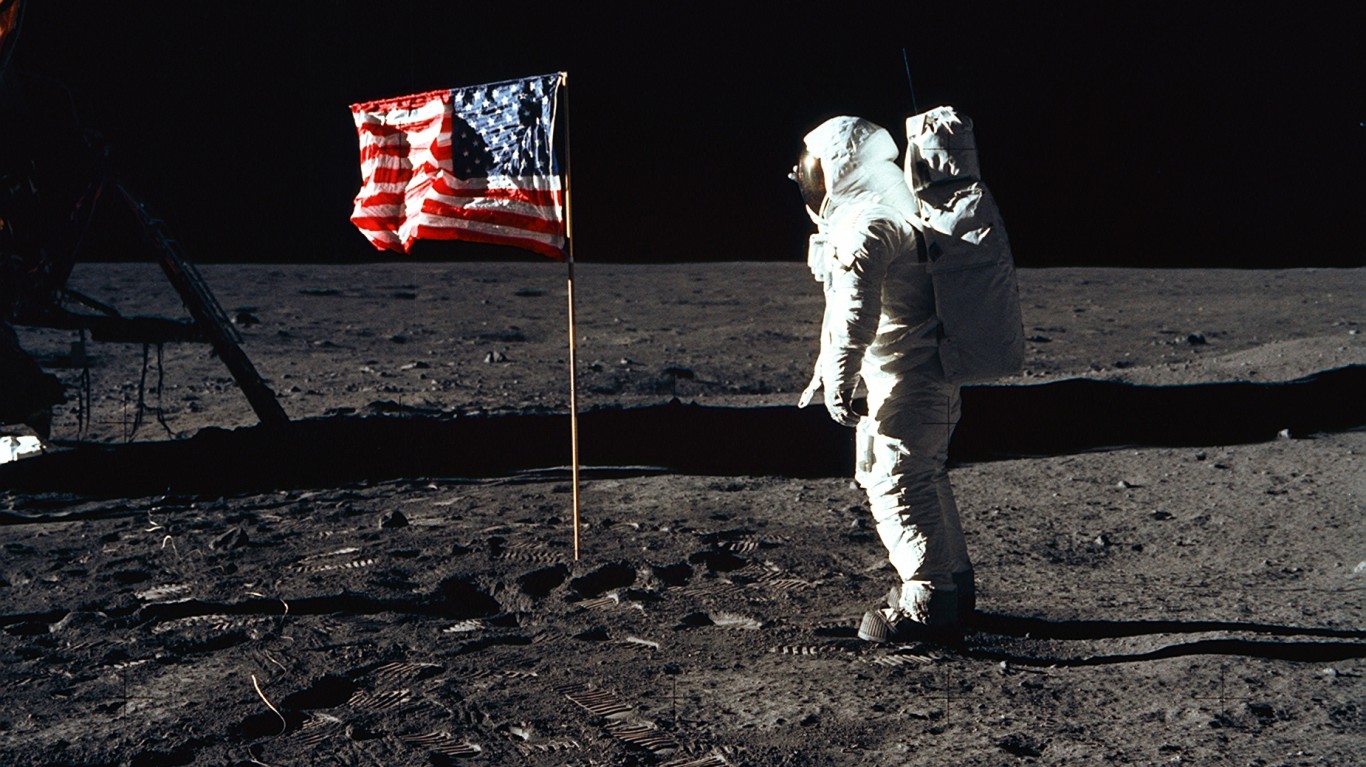
Published:

Over the past 100 years, we’ve witnessed some of the most profound changes in human history.
Between a pandemic, wars, technological developments, progress in civil rights, and breakthroughs in science and medicine, the old order has been swept away, sometimes giving way to freer forms of governing and sometimes not.
Centuries-old empires crumbled as new ideologies — from communism to fascism — took root in many parts of the world. Wars in the early part of the 20th century led to the end of the colonial world and gave birth to new nations. These wars also cost millions of lives and trillions of dollars. These are the most expensive wars in U.S. history.
Throughout the past century, technological innovations transformed our lives in ways we never dreamed. Progressive ideas also emerged and changed the world as women, African Americans, and the LGBTQ community demanded, and often won, equal rights — from the ratification of the 19th Amendment in the United States to the legalization of same-sex marriage in many countries around the world. Even so, recent civil rights protests tell us the fight for equality is not over.
The COVID-19 pandemic that is ravaging the world in 2020 reminds us that for all of our scientific breakthroughs, we’re still vulnerable to deadly viruses that can shut down economies and disrupt society. People are hoping science can save Earth from the devastating changes to the climate that continue to imperil the ecosystems of our planet. In the coming years, natural disasters may have an increasingly impactful role on the course of history. Here are 26 disaster scenarios caused by climate change.
To determine the most important event the year you were born, 24/7 Tempo drew on research materials and media sources to compile its list. Deciding the most important event in a given year is by its nature a subjective exercise. In reaching our decisions, we chose the event that had the most far-reaching impact, even if it was not necessarily the most famous event in a given year.
Click here for the most important event every year since 1920
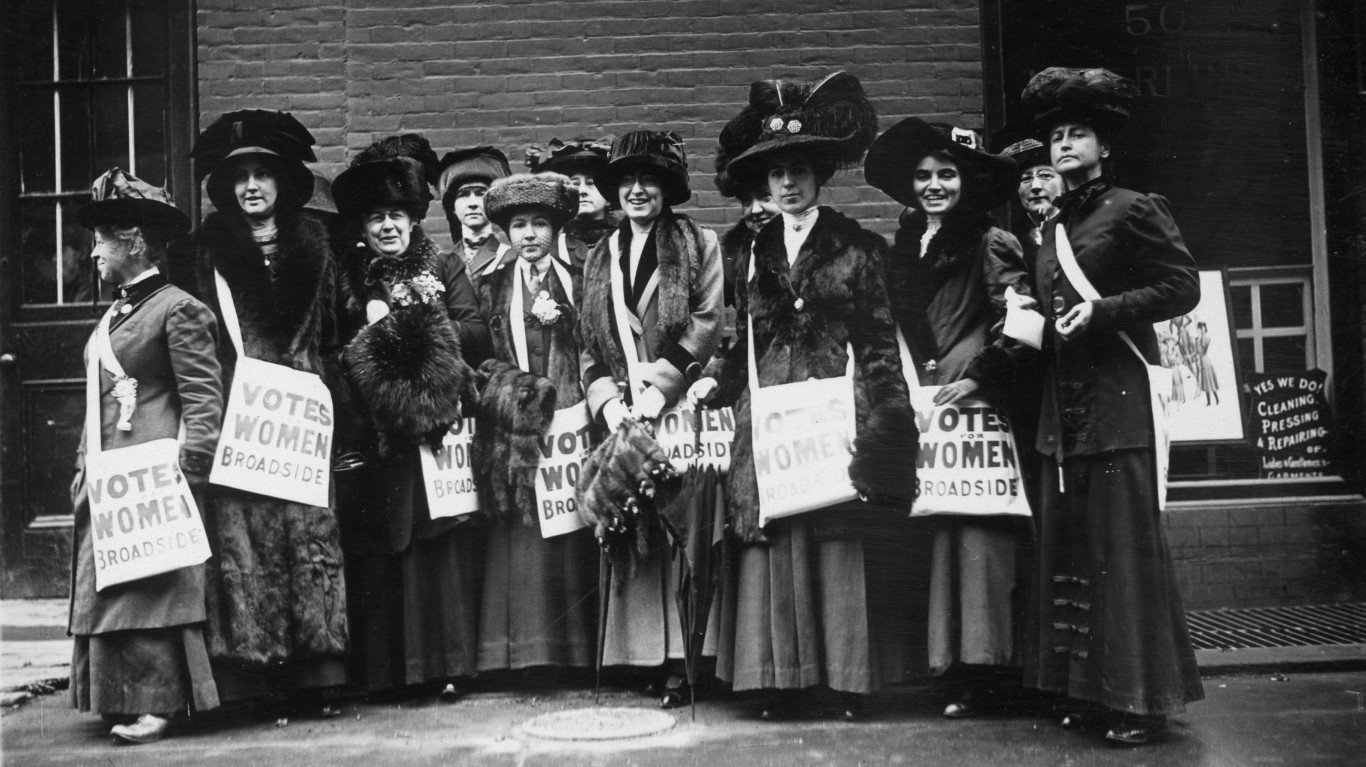
1920: Women’s Suffrage
> Date: Aug. 26
> Location: Washington D.C.
Though the United States was founded under democratic principles, only a minority of its population — in the beginning only white landowning males over the age of 21 — could actually vote. But after the 19th Amendment of the Constitution was passed, women finally gain a voice and the right to cast their ballots, though the voting rights fight was far from over for many African American women, especially in the South.
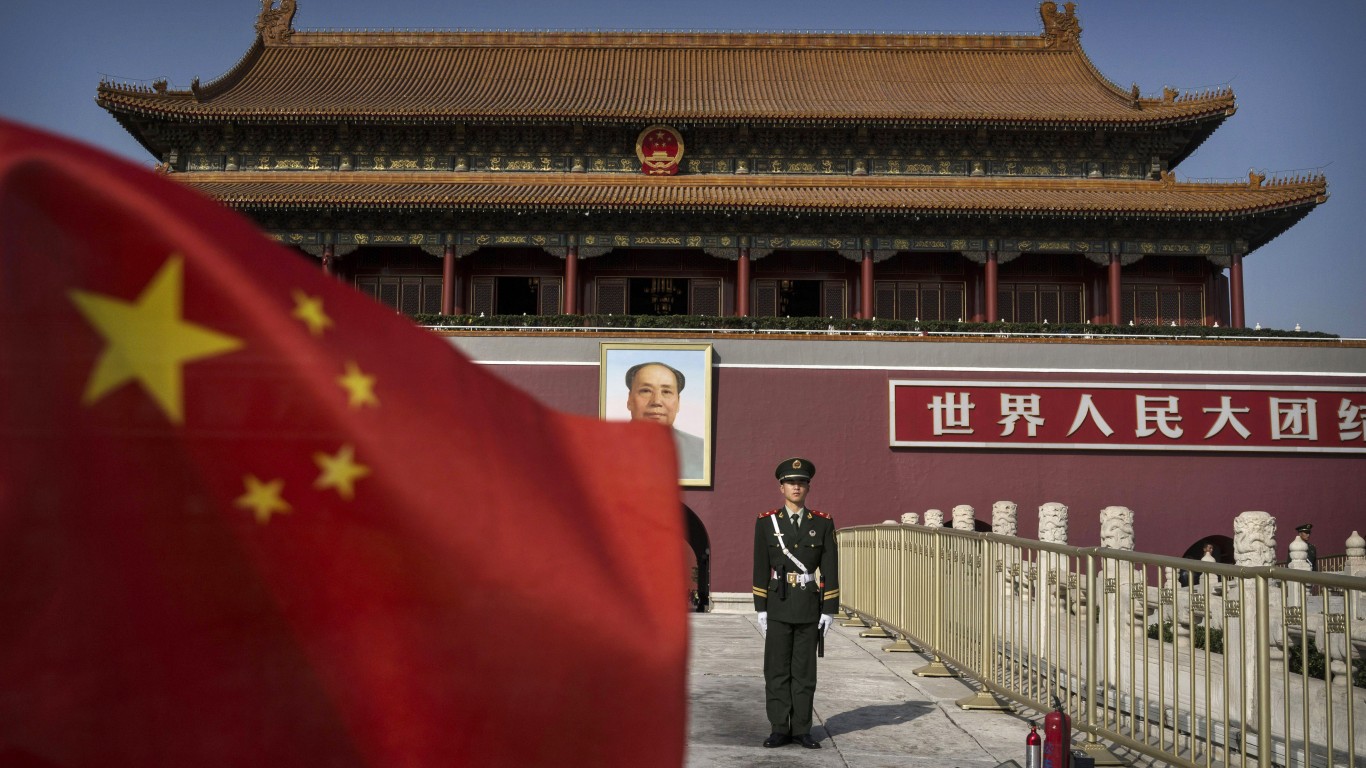
1921: Chinese Communists Rise
> Date: July 1
> Location: Beijing
In a prequel to the rise of Mao Zedong and Red China, the Chinese Communist Party is founded and three weeks later it convenes its first National Congress that is attended by Mao. It would take another 28 years before the Republic of China becomes the People’s Republic of China.
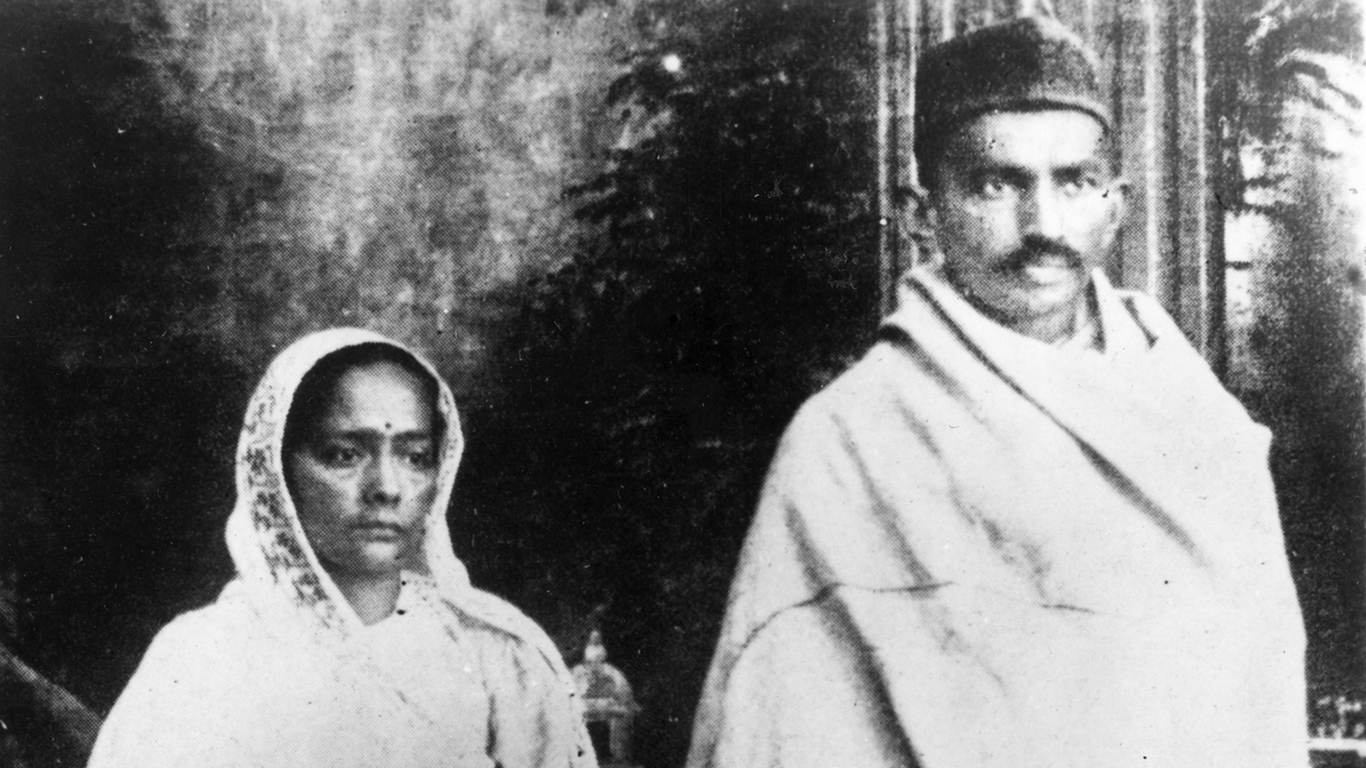
1922: British Empire Shrinks
> Date: Feb. 28
> Location: London
The British Empire was at its peak toward the end of World War I, commanding a global population estimated to be as many as 570 million people, or about a fourth of the world’s population at the time. The empire’s size began to shrink in 1920, when Britain declared limited independence for Egypt, which leads to full independence two years later.
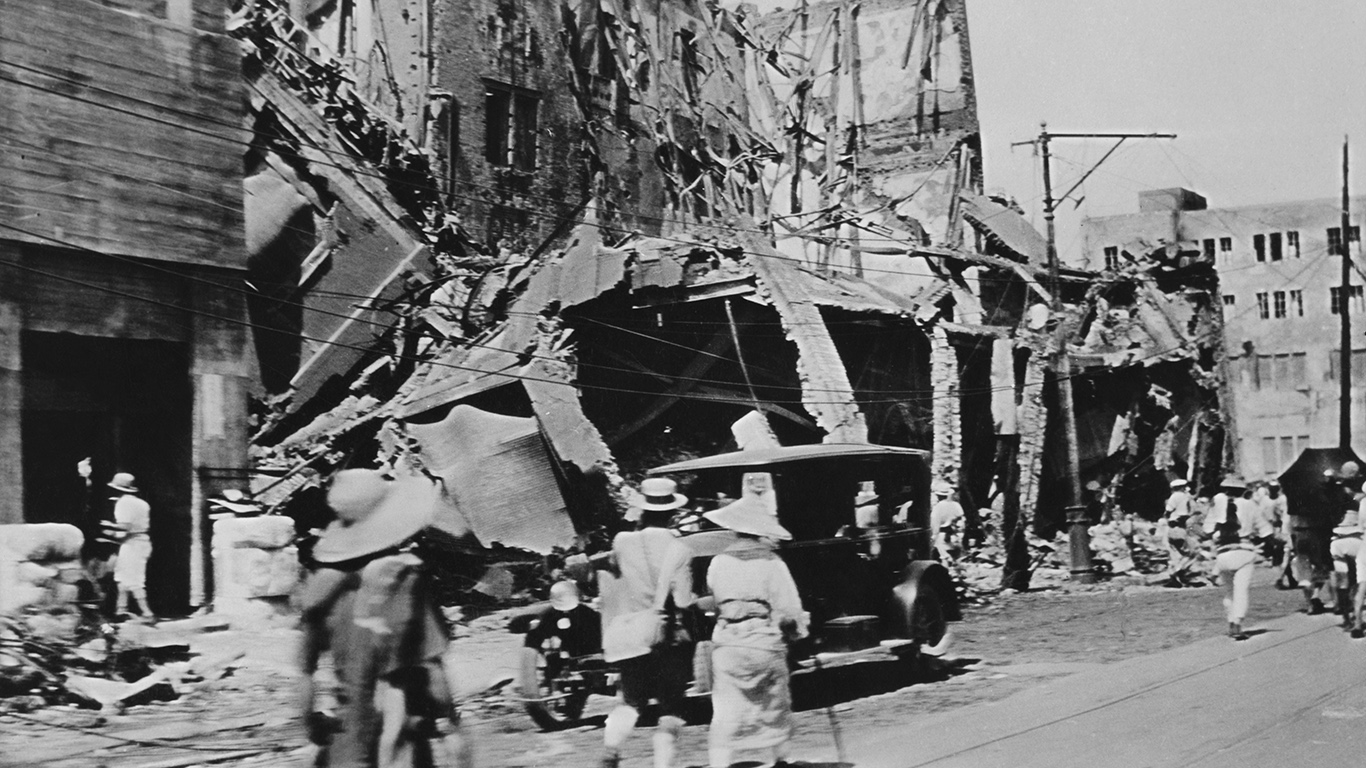
1923: Great Kanto Earthquake
> Date: Sept. 1
> Location: Tokyo, Yokohama, Japan
The Great Kanto earthquake, also known as the Tokyo-Yokohama earthquake, strikes the Japanese mainland at noon on Sept. 1, 1923, with a magnitude of 7.9 on the Richter scale. The death toll is estimated at 140,000 people. The force of the temblor destroys hundreds of thousands of homes that either collapse or are engulfed in fire. The quake sets off a tsunami that reaches a height of almost 40 feet at Atami in the Sagami Gulf, killing 60 people there. The most significant outcome of the catastrophe is the rebuilt Tokyo would become a modern metropolis.
[in-text-ad-2]
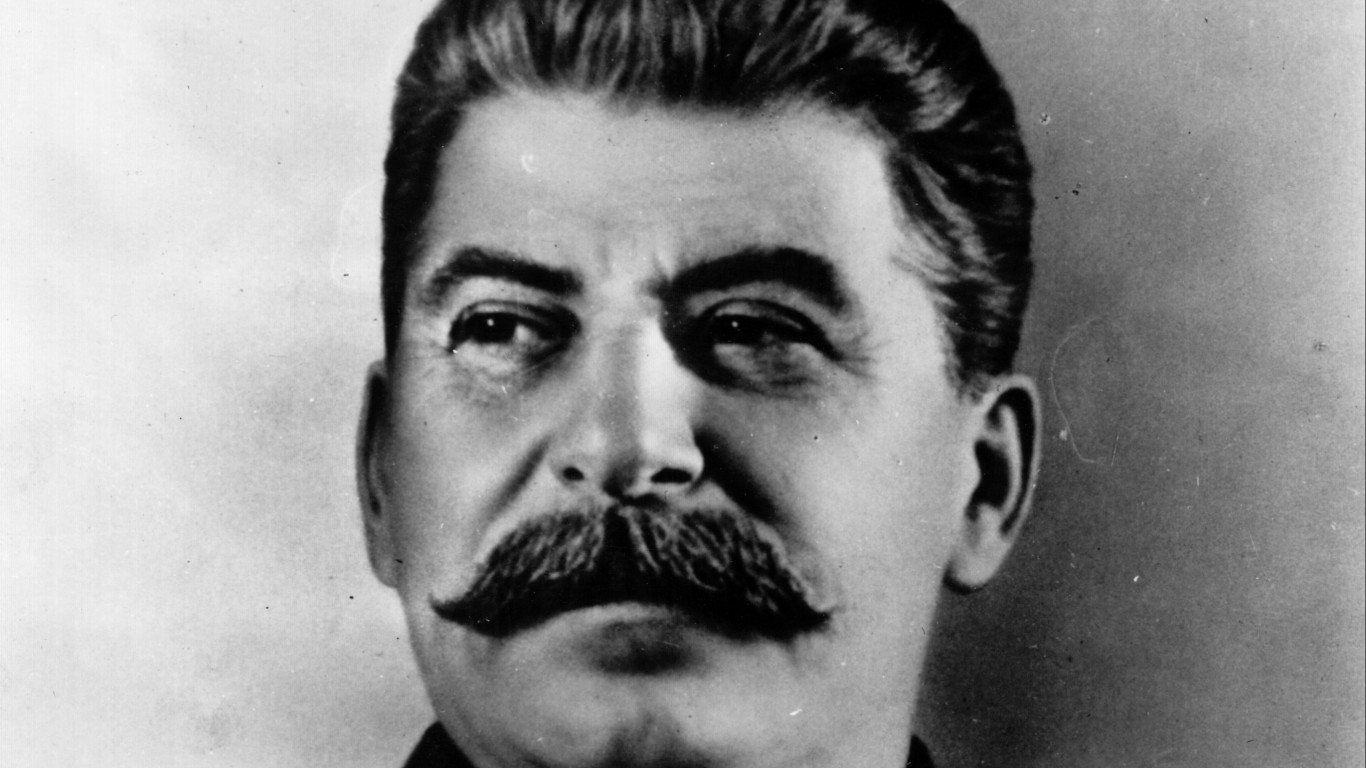
1924: From Lenin to Stalin
> Date: Jan. 21
> Location: Moscow
Following the death of Vladimir Lenin on Jan. 21, the new leader of the Soviet Union, Joseph Stalin, immediately begins a purge of political rivals. Some are simply moved to different positions, while others, like Leon Trotsky, the presumed successor to Lenin, are exiled. Stalin’s paranoia grows as he takes control of the nation, and with it the level of violence and killing of anyone perceived to be a threat to his power and control.

1925: Scopes Monkey Trial
> Date: July 10
> Location: Dayton, Tennessee
After teaching the theory of evolution in a Tennessee high school, the state prosecutes science teacher John Thomas Scopes because state law prohibits such teaching as it runs counter to biblical beliefs. The trial pits well-known Christian fundamentalist and former presidential candidate William Jennings Bryan against renowned attorney Clarence Darrow. The jury rules against Scopes, forcing him to pay a fine of $100 (about $1,498 in 2020 dollars). It would take another 43 years before the U.S. Supreme Court would rule that laws punishing people for teaching evolution violate the First Amendment.

1926: U.S. Starts Numbered Highway System
> Date: Nov. 11
> Location: U.S.
In a precursor to the modern interstate highway system, the federal government introduces a national highway numbering system in an effort to standardize roadways, especially local roads and trails with names unfamiliar to outsiders. The U.S. Numbered Highway System makes it easier for the growing number of car owners to figure out how to get from one city or town to the next and opens the way for the great American road-trip tradition.
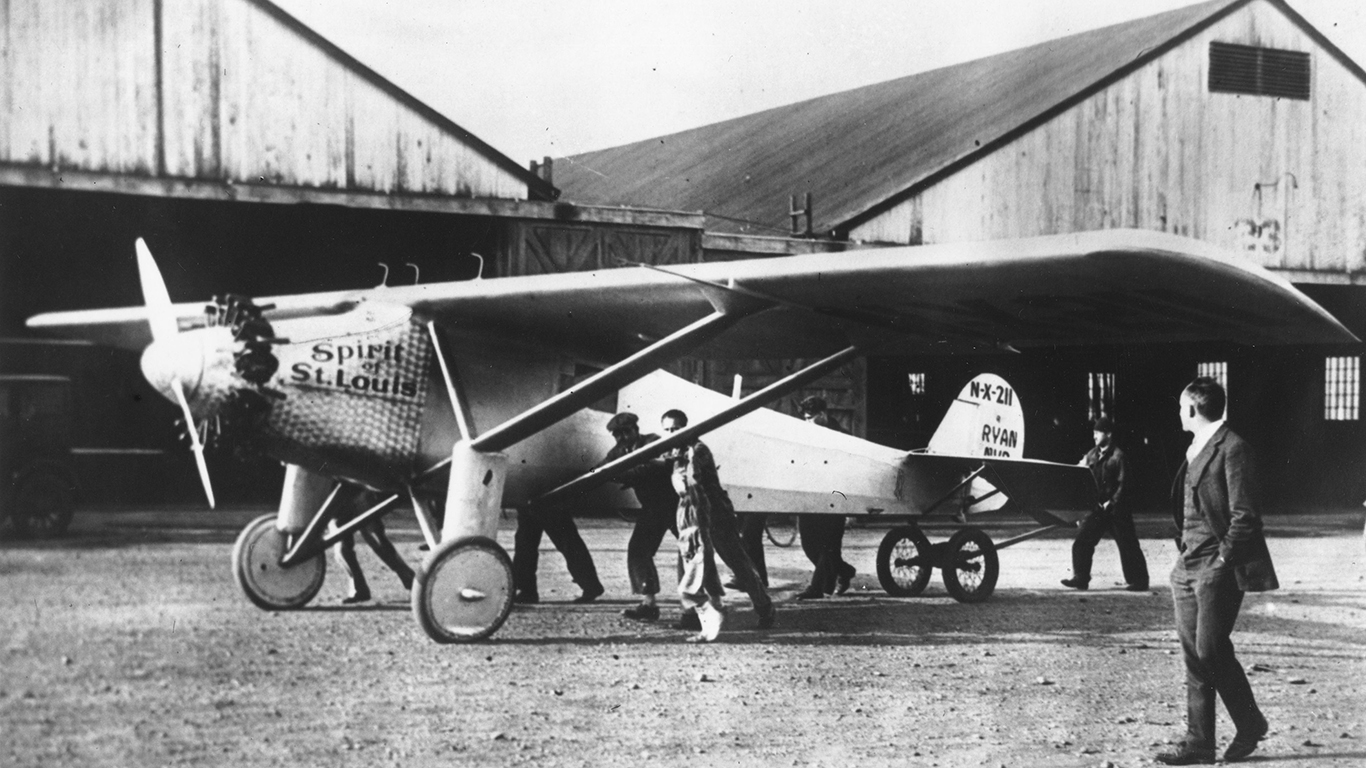
1927: Lindbergh Nonstop to Paris
> Date: May 21
> Location: New York to Paris
When the monoplane The Spirit of St. Louis touches down at Le Bourget Field in Paris on the evening of May 21, Charles Lindbergh becomes the first person to fly over the Atlantic Ocean nonstop, making him one of the heroes of the age. His feat fires the imagination of aspiring aviators about the commercial possibilities of flight. Lindbergh would stay in the news, but for regrettable reasons. A strong advocate for American isolationism in the 1930s, he is criticized for his admiration of Nazi Germany’s aircraft industry. Also, his infant son would be killed during a bungled kidnapping attempt in 1932.
[in-text-ad]
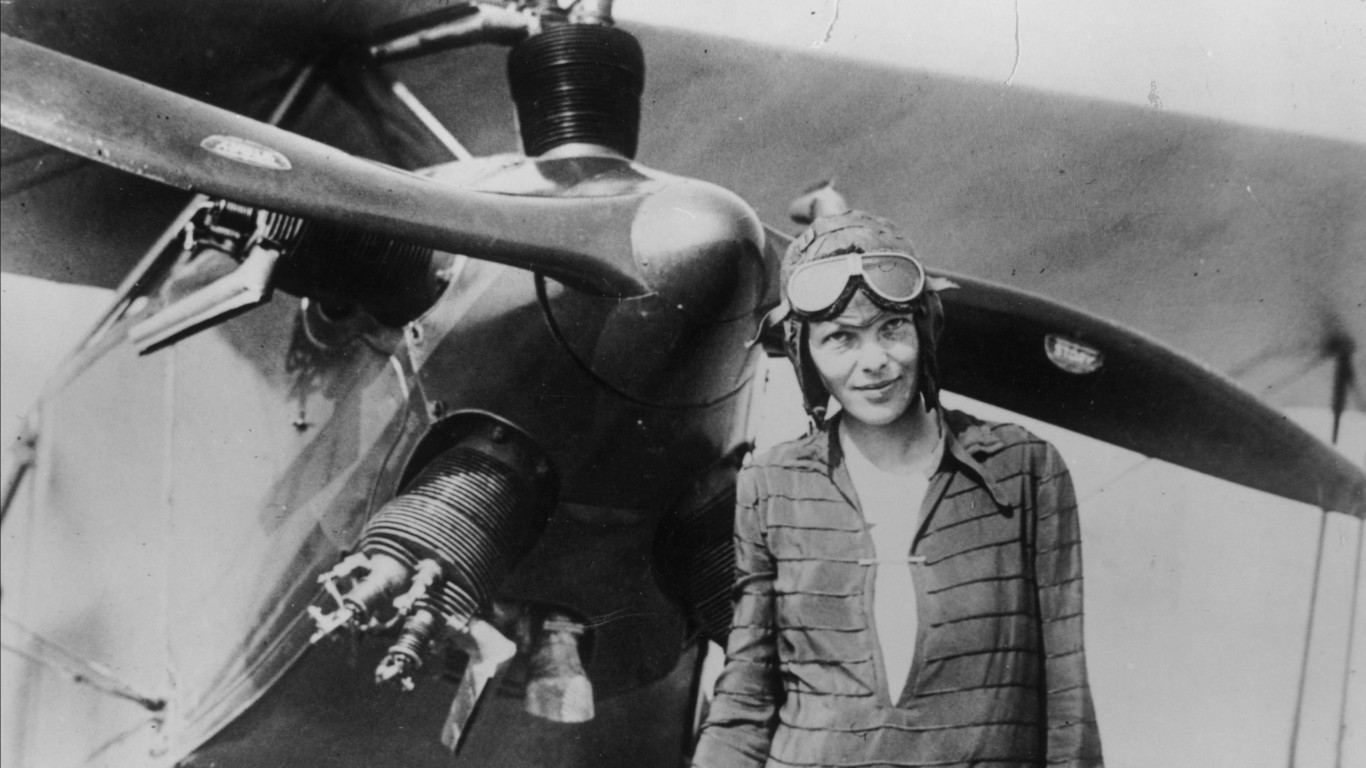
1928: Earhart Crosses Atlantic
> Date: June 17-18
> Location: Wales
Amelia Earhart becomes the first woman to pilot a plane across the Atlantic, from Newfoundland to Wales, making her an American national heroine and feminist icon who would go on to set numerous aviation records. She would later set another record as the first person — man or woman — to fly solo from Hawaii to the U.S. mainland. Earhart and her co-pilot Fred Noonan would vanish over the Pacific Ocean in 1937 during Earhart’s attempt to circumnavigate the globe. Recent evidence has emerged indicating Earhart may have sent distress signals after surviving a crash, possibly on the remote Gardner Island in the western Pacific Ocean.
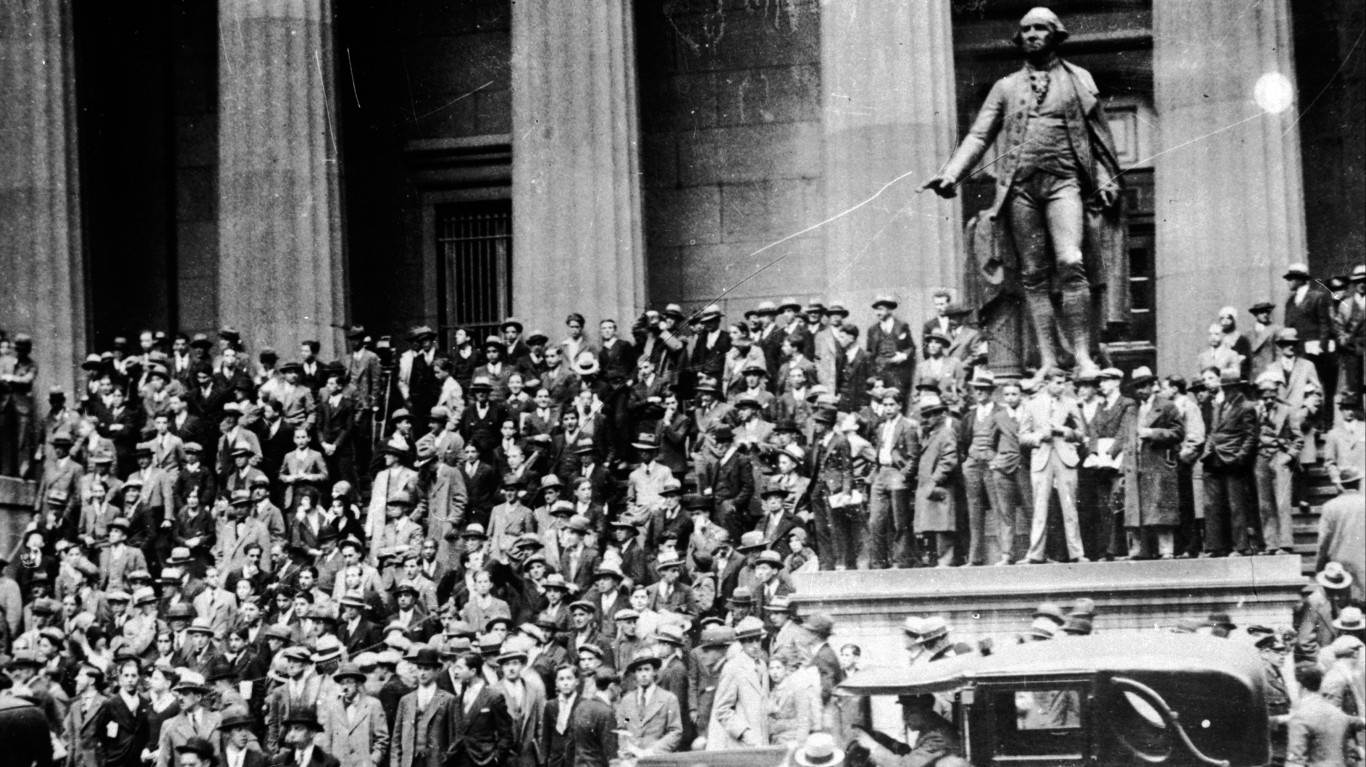
1929: Wall Street Crashes
> Date: Oct. 24-29
> Location: New York City
The “Roaring Twenties” come to a halt on Black Tuesday in October 1929, when stocks take a nosedive, contributing to the Great Depression. Reasons for the worst economic downturn in American history include over-lending by weakly regulated banks, excessive stock price valuation, too many stocks purchased on margin, unrestrained exuberance that sends millions of people to convert their savings into stocks, tightening of the credit by the Federal Reserve, and an agricultural drought.
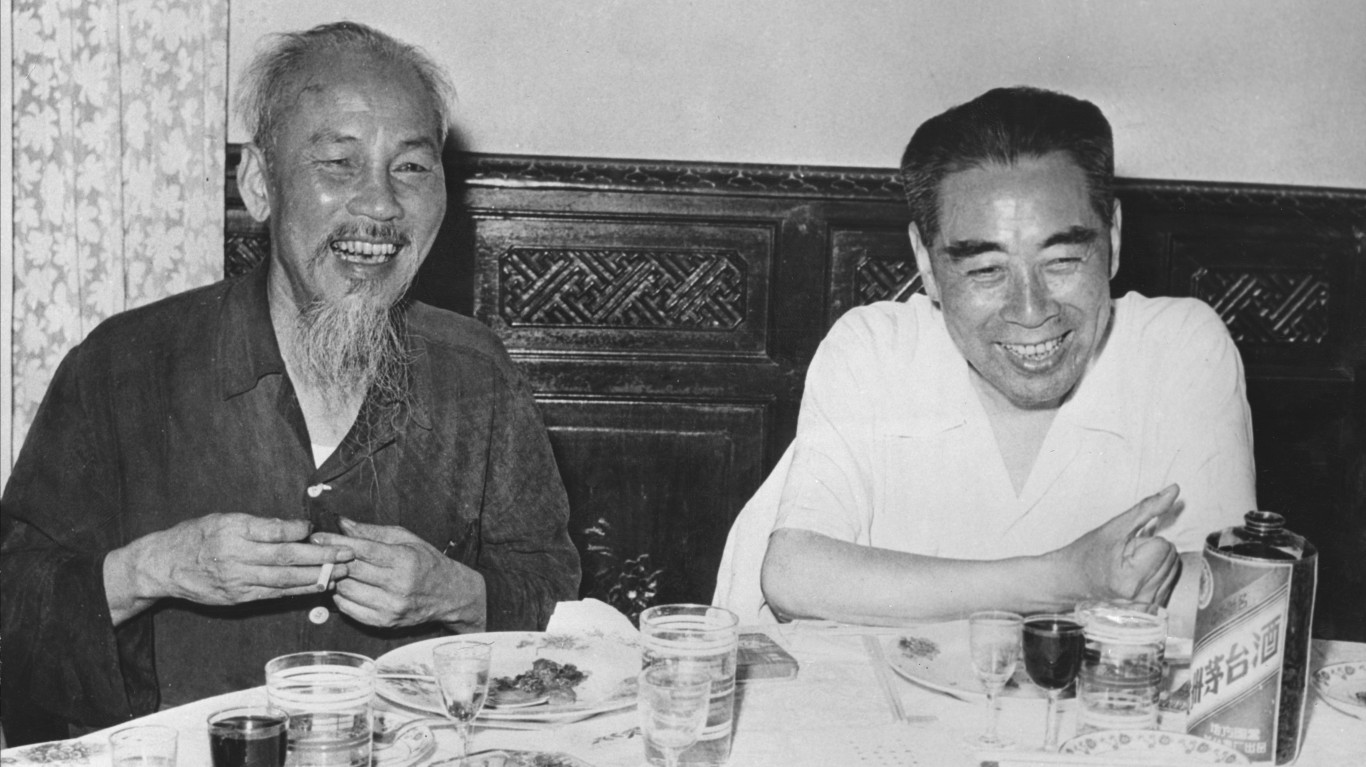
1930: Ho Chi Minh Rises in Vietnam
> Date: Feb. 2
> Location: Hanoi
In an event that would have repercussions for U.S. foreign policy decades later, Vietnamese independence fighter Ho Chi Minh founds the Communist Party of Vietnam as part of his effort to oust French colonial occupiers. “Uncle Ho,” as he was known to his many supporters, was inspired by the Russian Bolsheviks, who oppose the Tsarist autocracy, seeing parallels between that struggle and the fight against the foreign occupiers of his country.
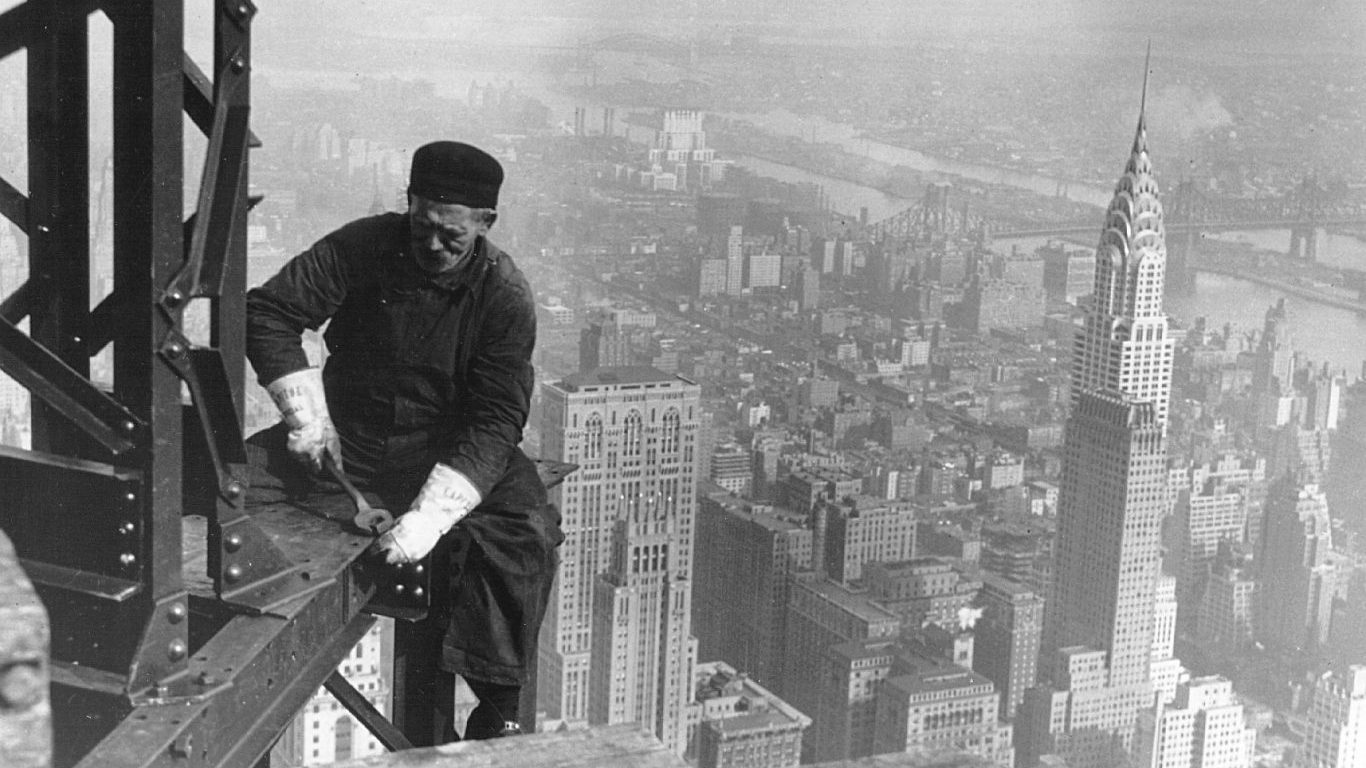
1931: Empire State Building Completed
> Date: May 1
> Location: New York City
U.S. President Herbert Hoover inaugurates the completion of the Empire State Building on May Day. It becomes the tallest building of the iconic Manhattan skyline until the construction of the World Trade Center Towers are completed in 1973. Incredibly, the 86-story office building took only 13 months to build, with construction starting in March of the previous year.
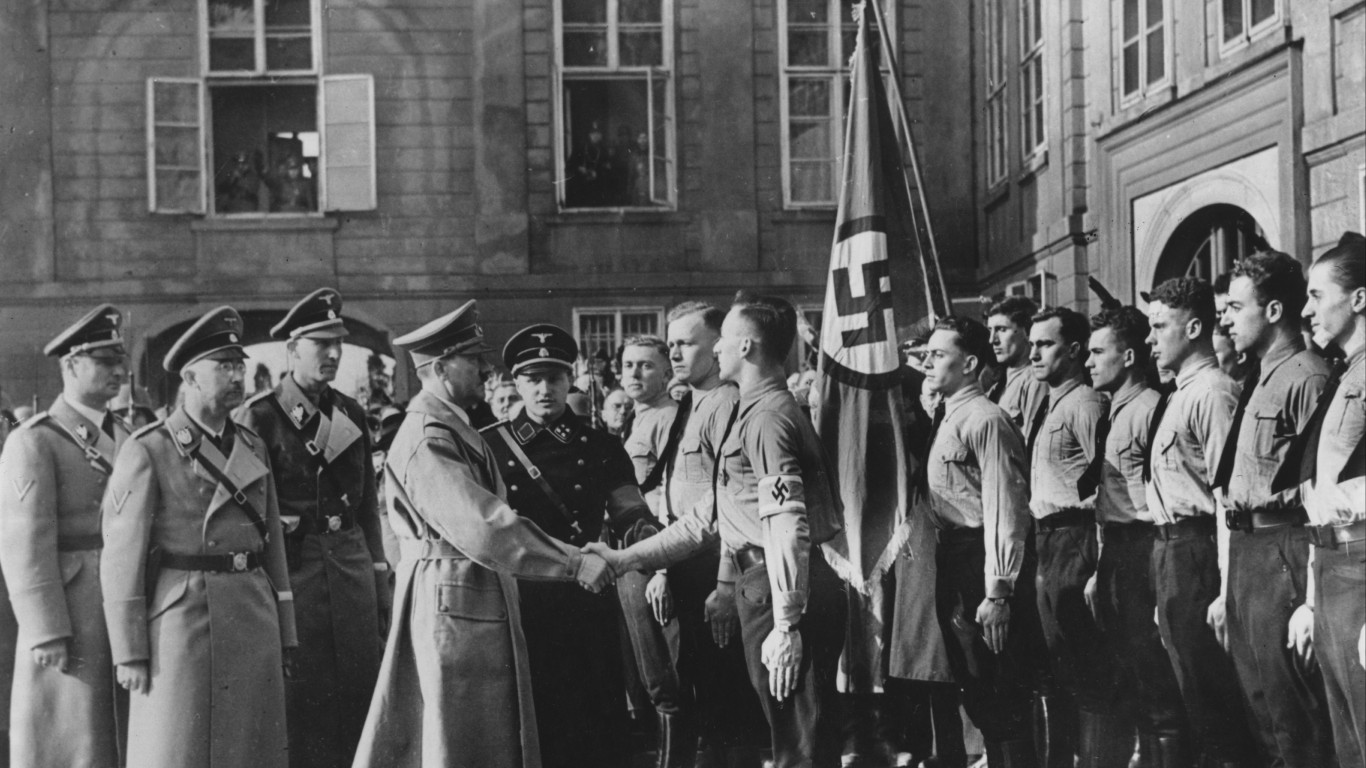
1932: Hitler Becomes German
> Date: Feb. 25
> Location: Germany
Seven years after Adolf Hitler renounces his Austrian citizenship, a fellow member of the Nazi Party gets him a low-level government job, which comes with automatic citizenship. This opens the way for him to run for office. Already a well-known party activist, it takes Hitler only two years from receiving his citizenship status to becoming the leader of Germany.
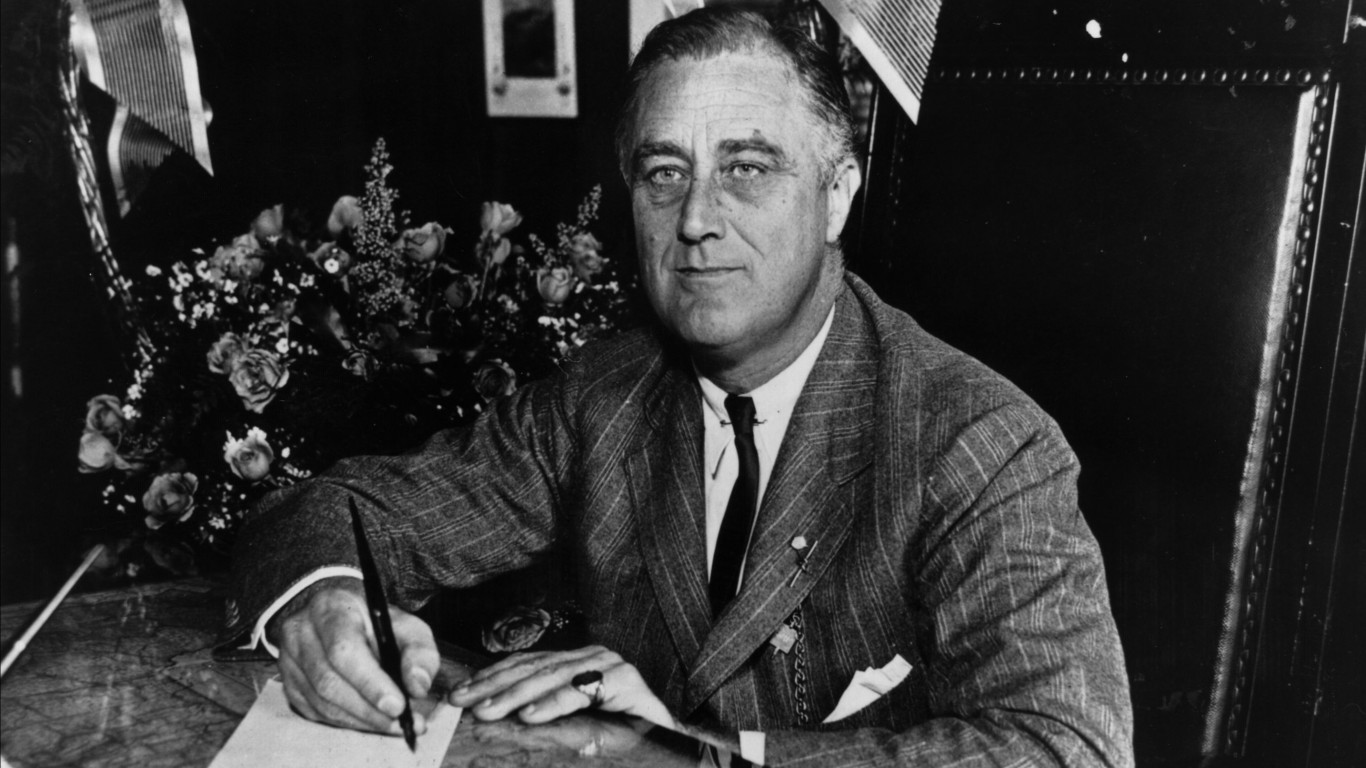
1933: FDR Elected
> Date: March 12
> Location: Washington D.C.
With the Great Depression sending millions of Americans to soup kitchens and chasing whatever work they can find, newly elected President Franklin Delano Roosevelt begins his weekly “Fireside Chats” as Americans are eager for guidance and solace during those dark times. FDR’s first radio talk explains to Americans in plain language why he ordered that banks would close temporarily at different time in different parts of the country. The purpose, he explains, is to curb panic rushes of withdrawals, which has been hurting efforts to stabilize the banking system.
[in-text-ad-2]
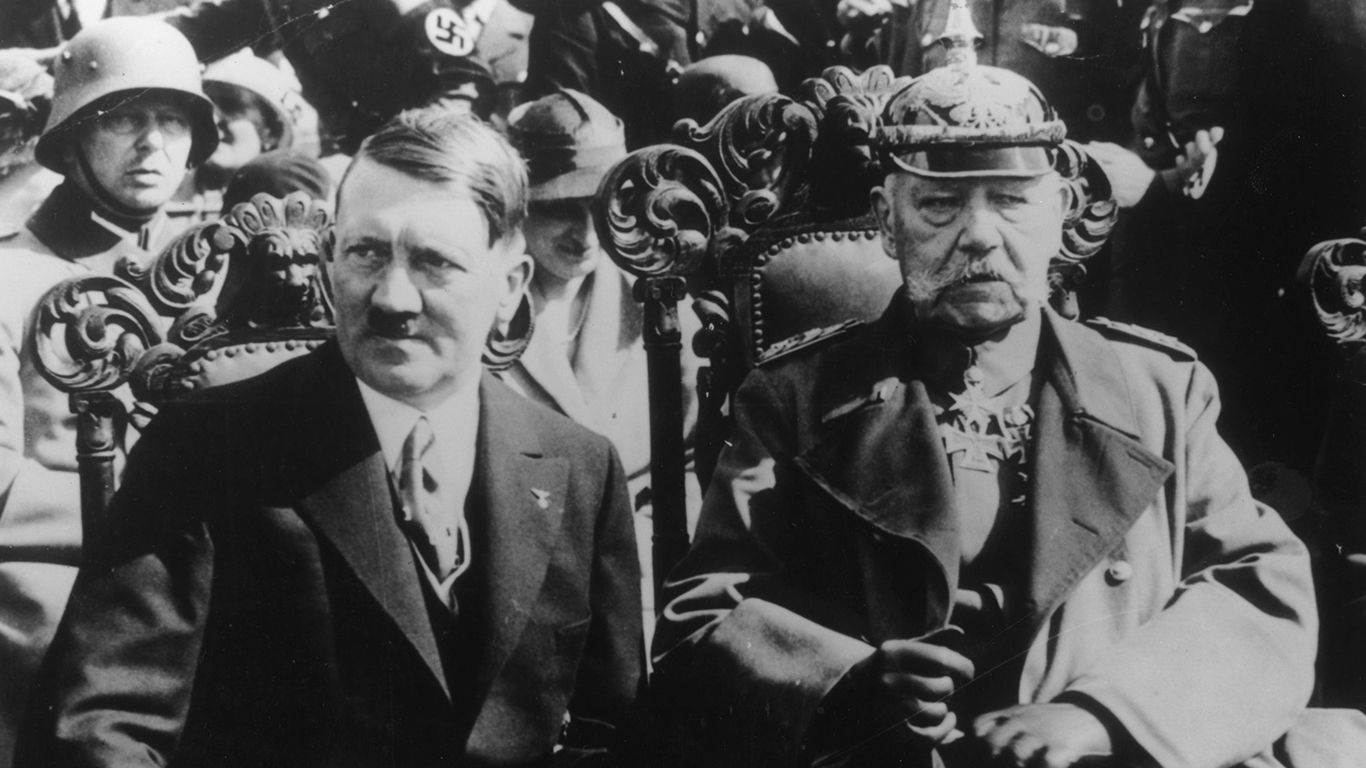
1934: Hitler Consolidates Power
> Date: June 30
> Location: Berlin
Germans, who had been suffering from a disastrous economic depression in 1929-30, begin to embrace the ideas of the Nationalist Socialist Workers Party — the Nazi Party. It becomes the largest party after the 1932 elections. In 1933, Adolf Hitler is appointed chancellor of Germany. After President Paul von Hindenburg dies in 1934, Hitler then purges members of his own party — the bloody Night of the Long Knives — with the help of Nazi storm troopers and becomes the unquestioned leader of Germany.
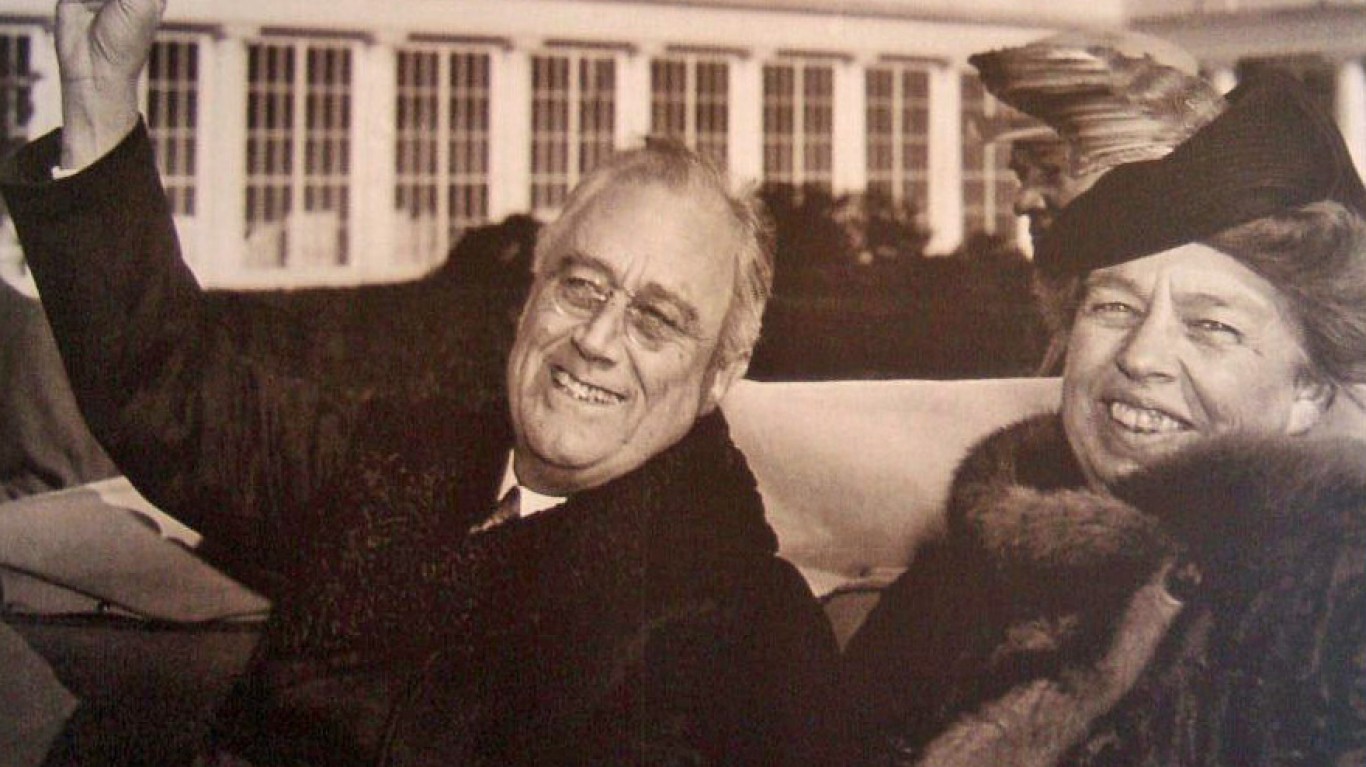
1935: FDR Launches New Deal
> Date: Aug. 14
> Location: Washington D.C.
President Roosevelt, grappling with the Great Depression, signs into law his signature Social Security Act, a law that creates the country’s first retirement security system. Earlier that year, as part of his “New Deal” policy, the president established the Works Progress Administration, a massive economic stimulus program, putting millions of Americans to work building the country’s public infrastructure.

1936: Owens Flouts Nazis
> Date: Aug. 3
> Location: Berlin
As the concept of racial purity and superiority dominates Germany in the 1930s, African-American sprinter Jesse Owens of Oakville, Alabama, shows them who is the master racer. During the 1936 Summer Olympics in Berlin, and under the gaze of Adolf Hitler, Owens wins four Olympic gold medals for the 100-meter and 200-meter sprints, the long jump, and the 400-meter relay.
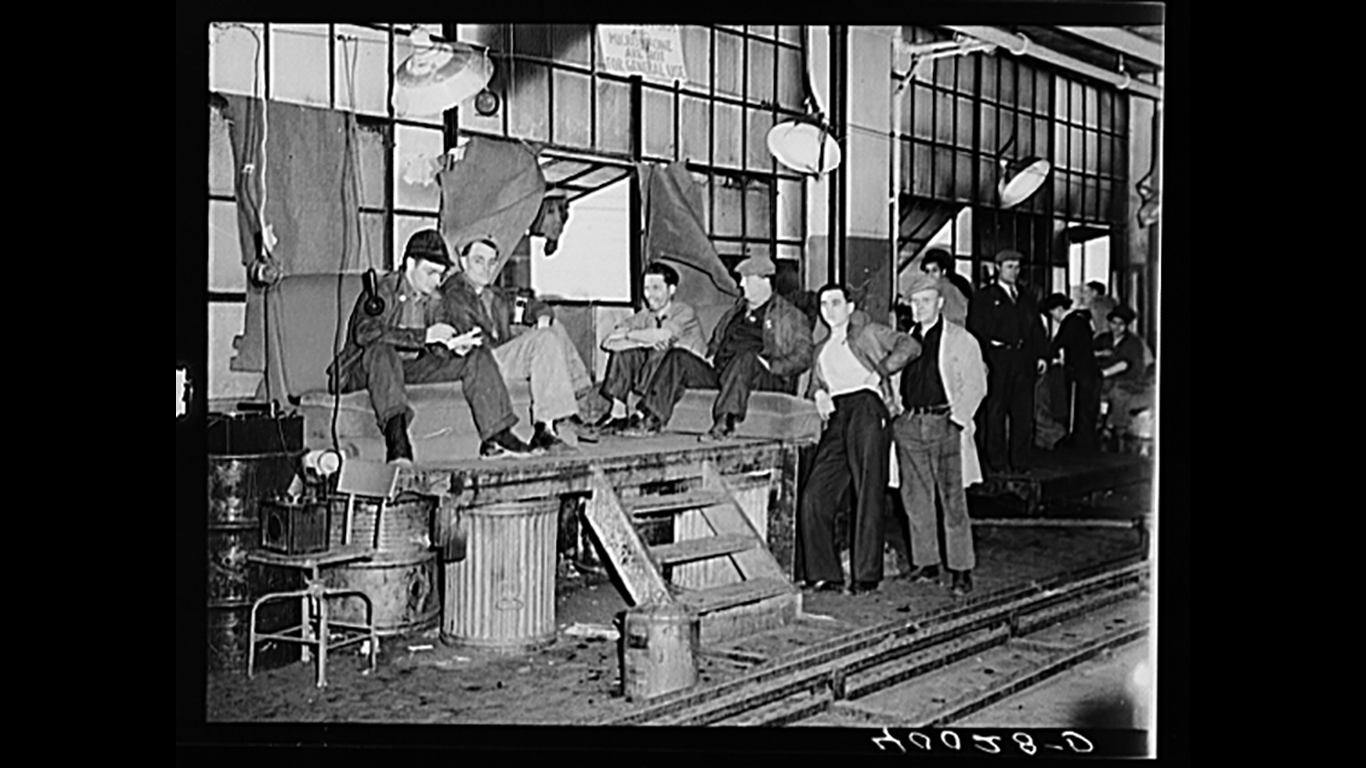
1937: UAW Changes Car Industry
> Date: Feb. 11
> Location: Flint, Michigan
Nearly two years after the establishment of the United Automobile Workers (UAW), the union scores a major victory in Flint, Michigan. Workers at the General Motors Fisher Body Plant Number One lay down their tools and occupy the factory, demanding union representation, a fair minimum wage, safer working conditions, and not to outsource labor to non-union plants. Despite efforts by GM and local police to extricate them from the plant, including shutting off the heat, cutting off food supply, and attacks that leave 16 workers and 11 police officers injured, the strike lasts 44 days. The strike leads to an agreement between GM and the UAW, which includes a 5% pay raise and permission to talk in the lunchroom.
[in-text-ad]
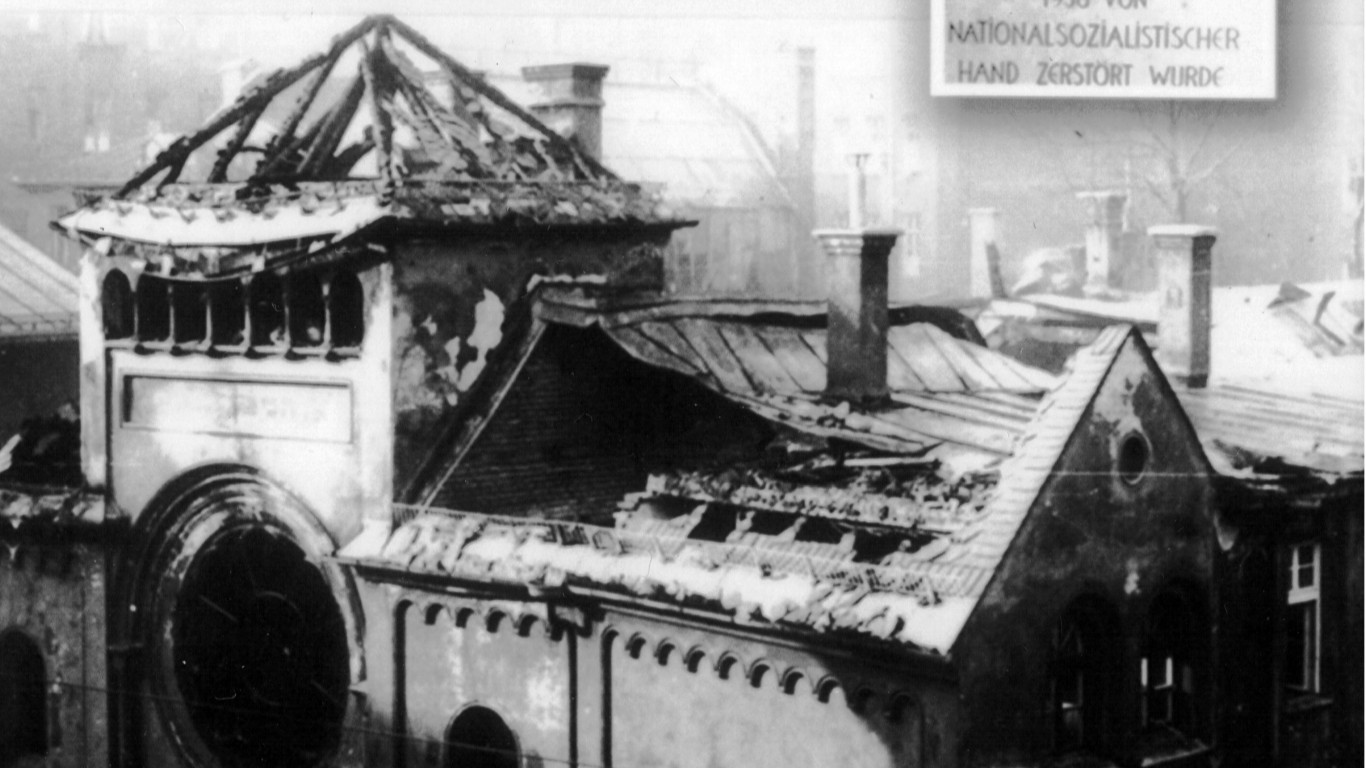
1938: Anti-Semitism Surges
> Date: Nov. 9
> Location: Germany, Austria, Sudetenland
Growing anti-Semitic scapegoating amid Germany’s crippling economic conditions culminates in the Kristallnacht, or “Night of Broken Glass,” a pogrom sparked by a speech from German propaganda minister Joseph Goebbels. Storm troopers and other Nazi groups are ordered to attack and destroy Jewish businesses, homes, and houses of worship. In one night of attacks in Germany, Austria, and the German-speaking area of the Sudetenland in Czechoslovakia, dozens of Jews are killed and tens of thousands are rounded up and sent to concentration camps.
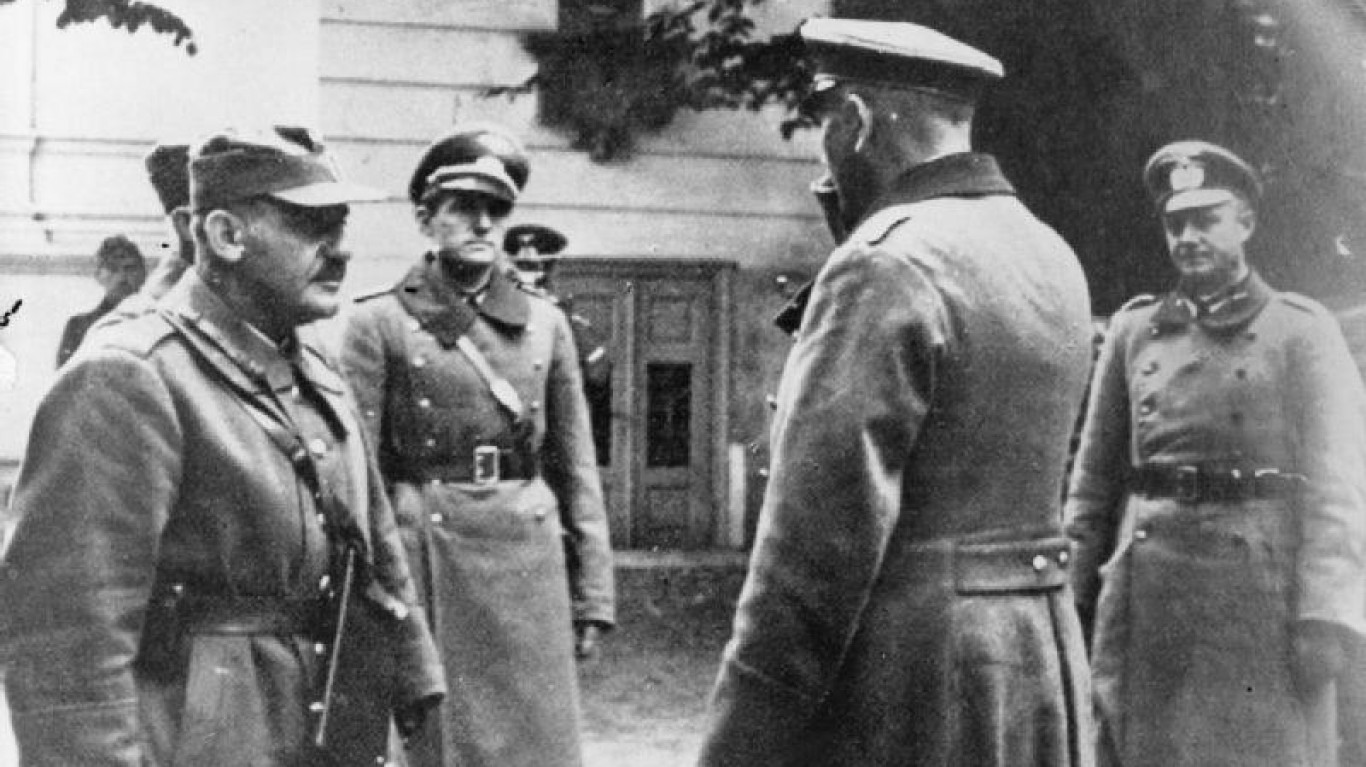
1939: World War II Starts
> Date: Sept. 1
> Location: Westerplatte, Poland
Under the cover of predawn darkness, a German battleship floats quietly into the center of Danzig Harbor and opens fire on a Polish stronghold in Westerplatte, the first shots of World War II. In the following weeks, Nazi forces, including 2,000 tanks and 1,000 aircraft, would shatter Polish defenses and surround Warsaw, which surrenders 26 days after the Danzig Harbor attack.
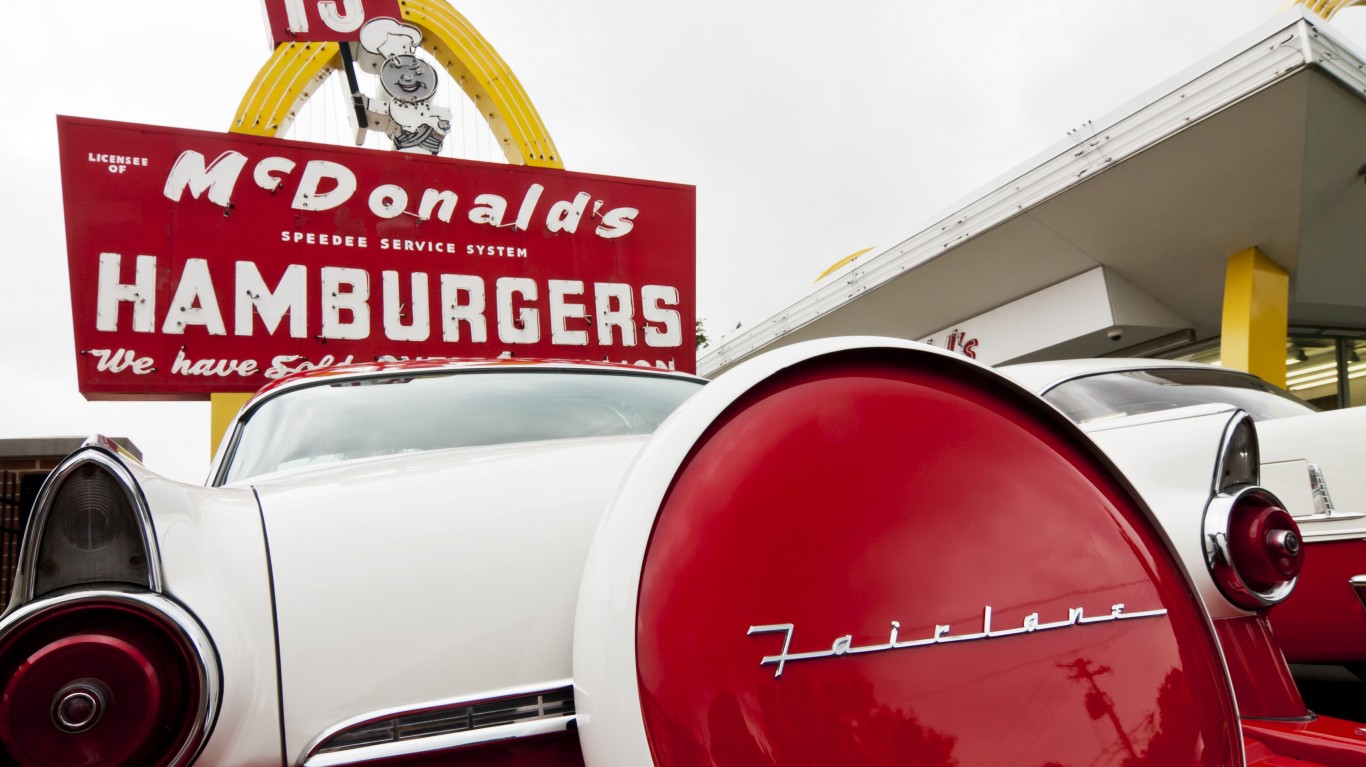
1940: McDonald’s Founded
> Date: May 15
> Location: San Bernardino, California
Brothers Richard and Maurice McDonald open McDonald’s Barbecue Restaurant, offering BBQ ribs, pork sandwiches, and 23 other menu items. Eight years later, they would restructure their popular local business to focus on hamburgers, milkshakes, and fountain sodas, emphasizing speed, a simple menu, and low prices. In the 1950s, businessman Ray Kroc would buy out the brothers and grow McDonald’s into one of the world’s largest restaurant chains.

1941: Pearl Harbor
> Date: Dec. 7
> Location: Oahu, Hawaii
Knowing the U.S. is gearing up to engage them in the Pacific Ocean theater of World War II, Japan deploys a massive air attack on U.S. Navy ships parked at Pearl Harbor. The surprise assault by 353 Japanese aircraft leads to the deaths of 2,403 people, including 1,177 sailors aboard the ill-fated USS Arizona, one of 19 vessels that were damaged or destroyed in the attack. Nearly 330 aircraft were also damaged or destroyed. The United States declares war on Japan the next day and three days later against Germany and Italy.
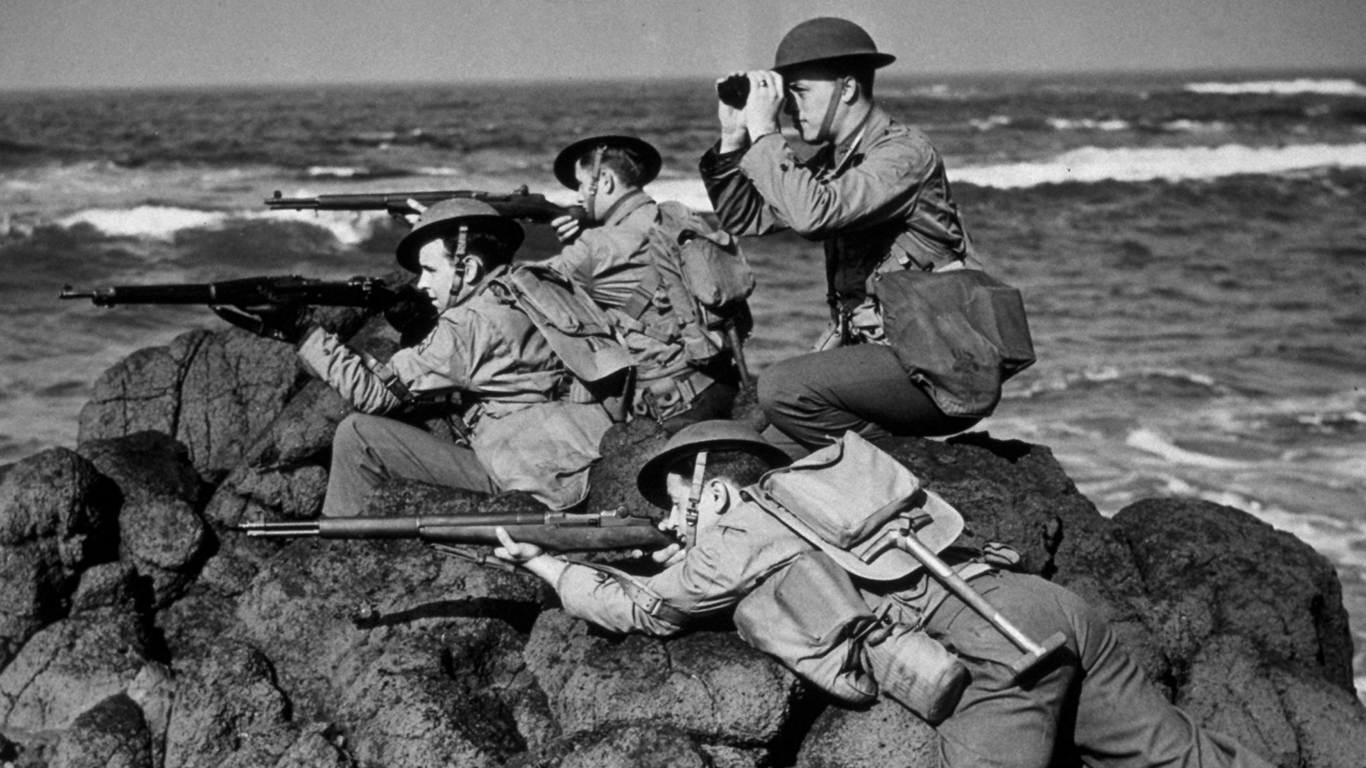
1942: GIs Arrive in Europe
> Date: Jan. 26
> Location: Northern Ireland
The first U.S. troops destined to fight in Europe in the world’s greatest war arrive in Northern Ireland. It is the beginning of a military buildup that would culminate in the invasion of France more than two years later. Before then, the United States was providing only material support to its ally across the Atlantic, while building up what President Roosevelt called the “Arsenal of Democracy” in anticipation for the inevitable entry of the United States into the war in Europe.
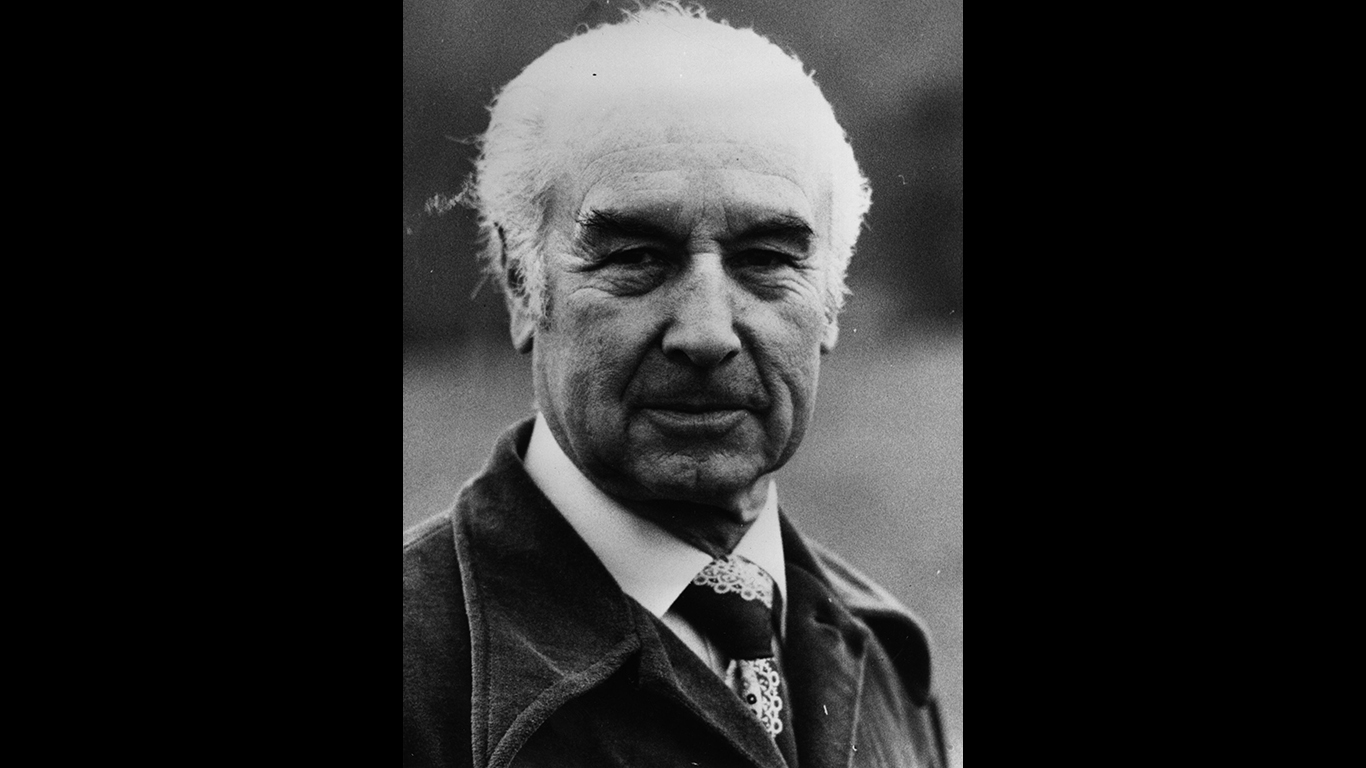
1943: Invention of LSD
> Date: April 19
> Location: Basel, Switzerland
Swiss chemist Albert Hoffman had been studying the potential medicinal value of lysergic compounds when he accidentally exposed himself to LSD-25, which he had created years earlier in his lab. This was the first LSD trip, a quarter-century before the counterculture endorses the hallucinogenic compound. Hoffman describes the “not unpleasant” experience as “uninterrupted stream of fantastic pictures, extraordinary shapes with intense, kaleidoscopic play of colors.” Hoffman takes a second dose and writes a paper about his discovery. The U.S. Army tests the drug on soldiers numerous times from 1955 to 1967, briefly toying with the idea of using LSD as a weapon to disorient enemy soldiers during combat.
[in-text-ad-2]
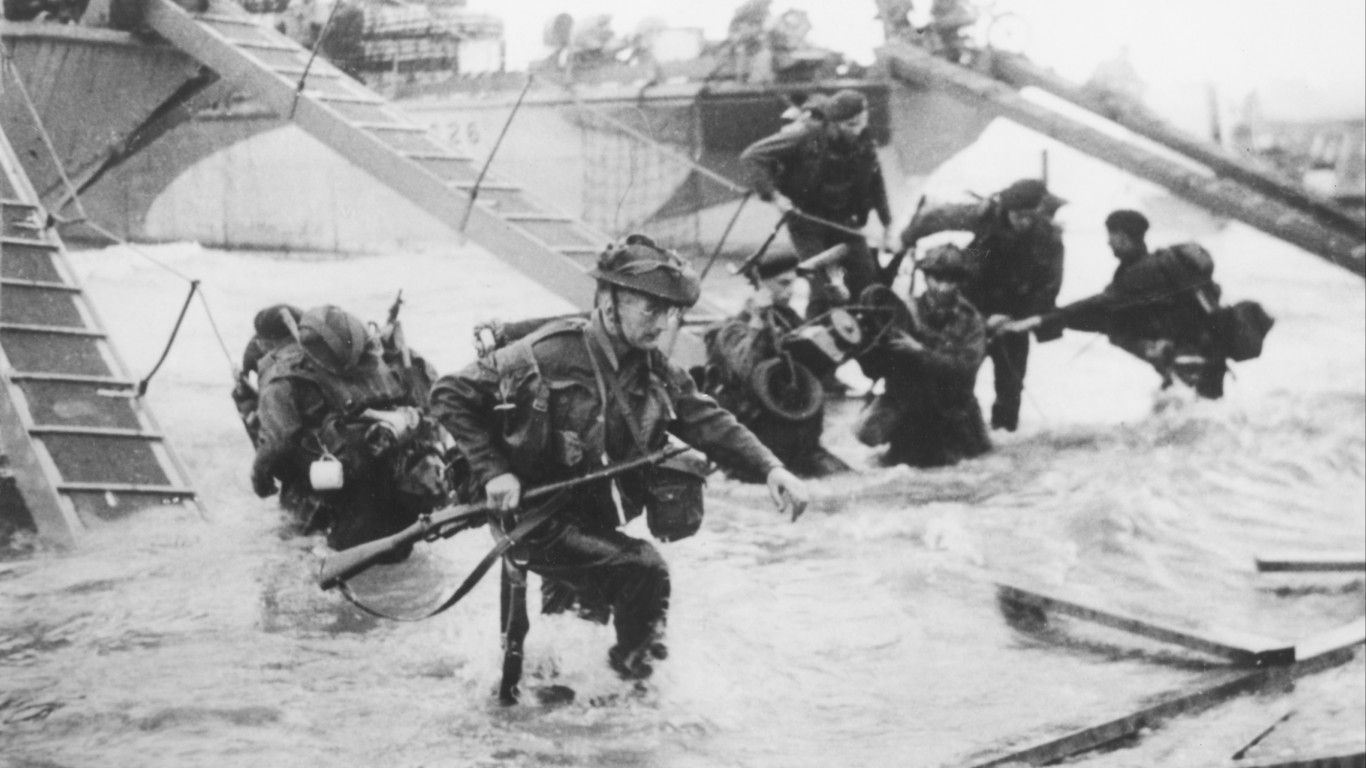
1944: D-Day
> Date: June 6
> Location: Normandy France
The plan for the biggest one-day military campaign in history, the invasion of Normandy by Allied forces to push the Nazis out of France, is hatched in extreme secrecy a year earlier. The plan is conceived during the Quebec Conference by Canadian Prime Minister William Lyon Mackenzie King, British Prime Minister Winston Churchill, and U.S. President Franklin Roosevelt. The invasion starts at 6:30 a.m. on five beaches, and over the next 24 hours about 4,900 Allied soldiers are killed, many of them the instant the doors of their Higgins transport boats opened directly into German machine gun fire.
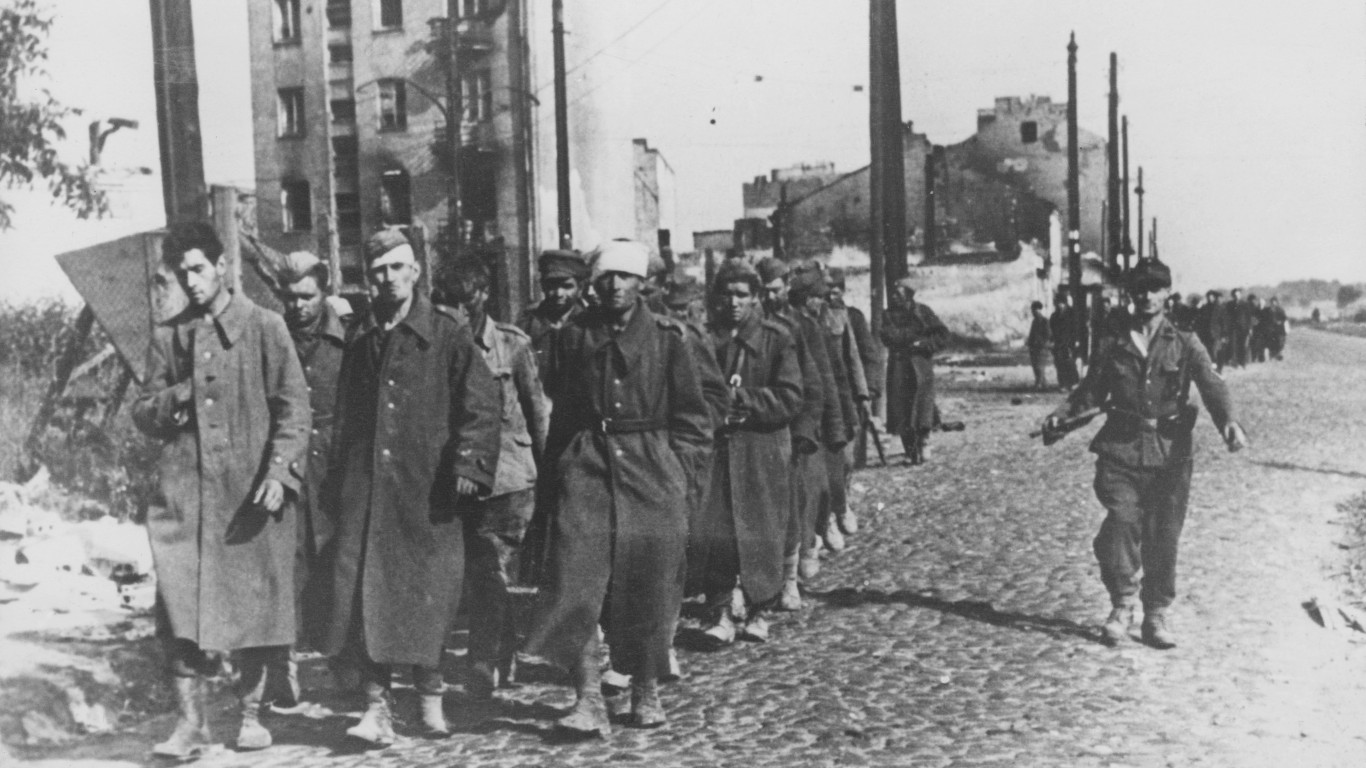
1945: World War II Ends
> Date: Sept. 2
> Location: Multiple
The surrender of Japan marks the end of World War II amid one of the most tumultuous years of the 20th century. Earlier in the year, leaders of three nations — Benito Mussolini, Franklin Roosevelt, and Adolf Hitler — die and Nazi Germany surrenders. Though the surrender of Japan was inevitable, the prospect of a horrific Allied assault on the Japanese mainland convinces the United States to drop atomic bombs on Hiroshima and Nagasaki. The atomic bomb attacks, along with the entry of the Soviet Union in the war against Japan, compel the Japanese to surrender.
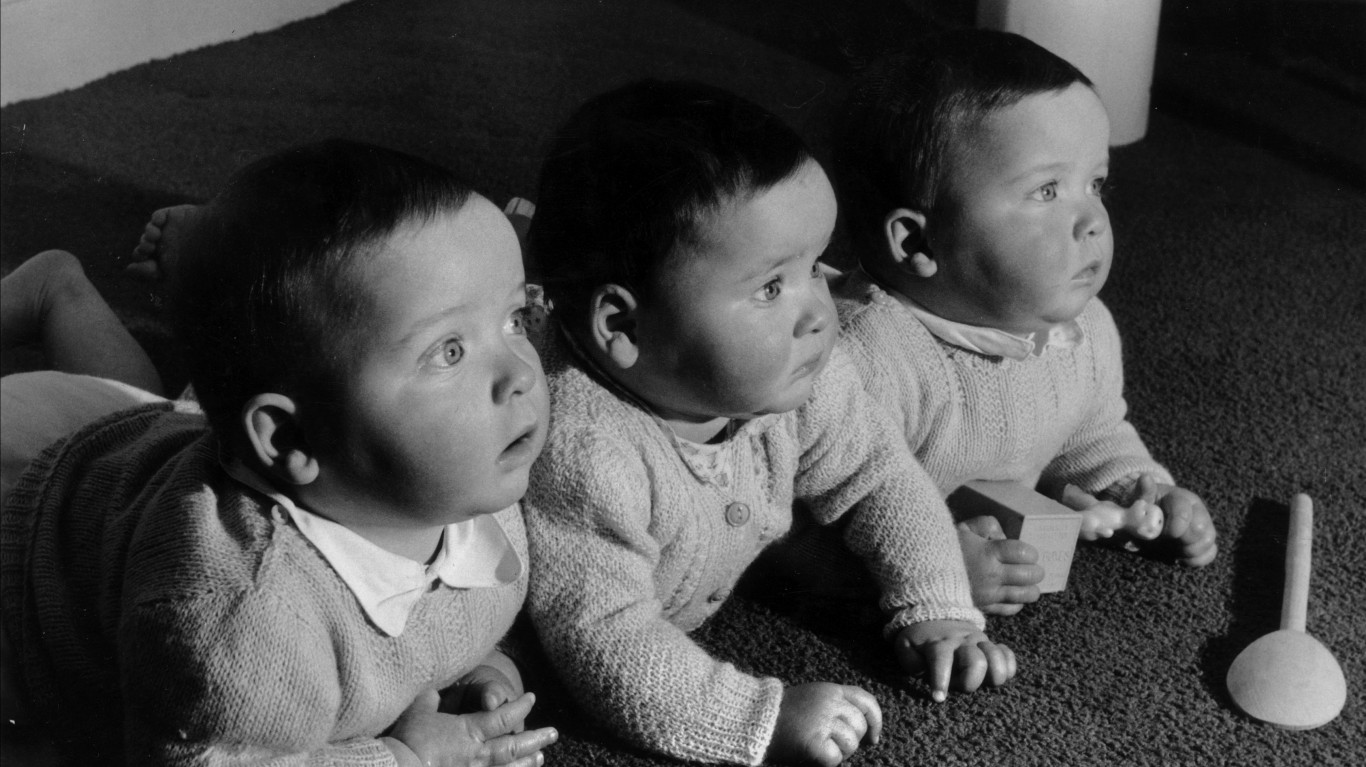
1946: Baby Boom Starts
> Date: Jan. 1
> Location: U.S.
More American babies are born – 3.4 million – in 1946 than in any year in U.S. history up to then. The number of births grows to 4 million per year from 1954 to 1964, the last year of the baby boomer generation, the biggest generation at that point in history.
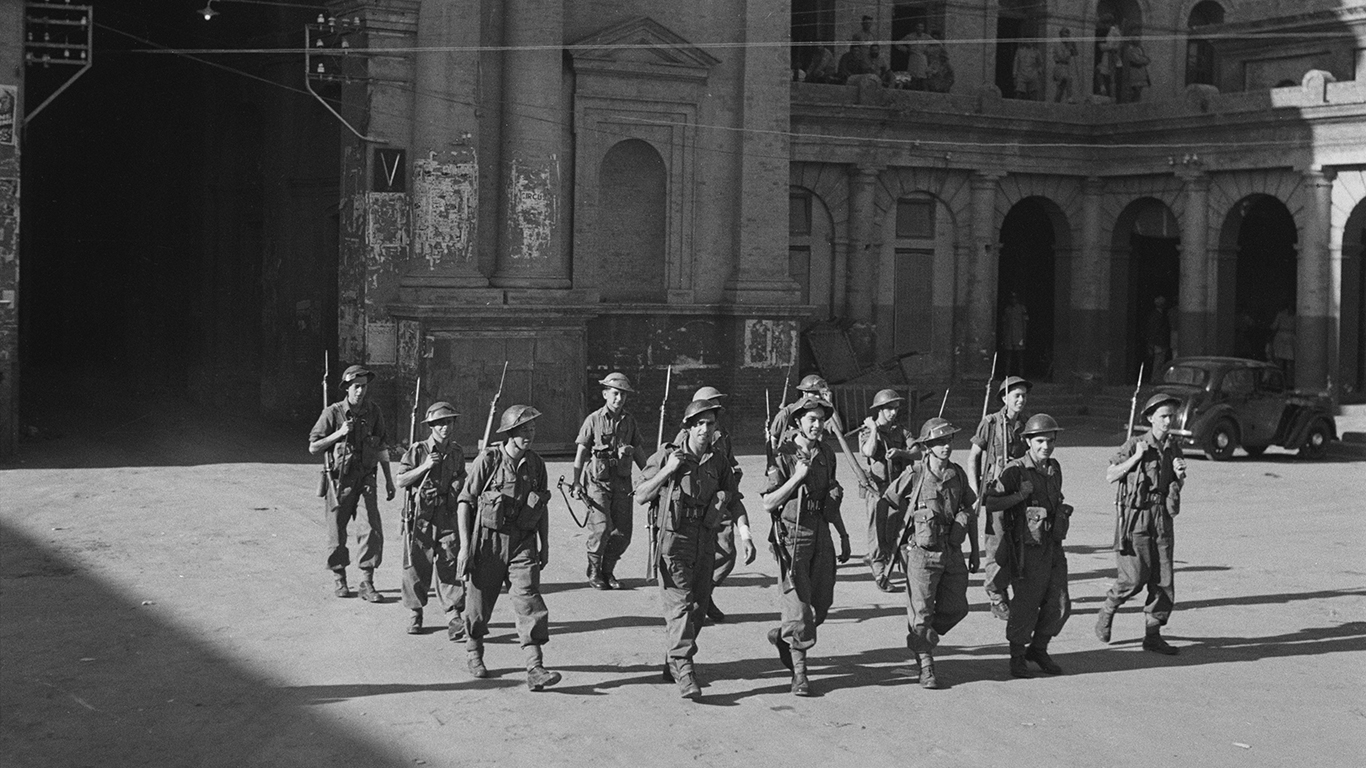
1947: India Gains Independence
> Date: Aug. 15
> Location: Washington D.C
The sun sets on the British Empire in India in 1947, as the Asian nation becomes the world’s largest democracy. Independence is the culmination of decades of work by Mahatma Gandhi, Jawaharlal Nehru, and Indian nationalists committed to throwing off the yoke of British colonialism. The transition to independence comes at a price. The subcontinent is partitioned into two nations, Hindu-majority India and Muslim-majority Pakistan. Violence erupts between Hindus and Muslims as Hindus migrate to India and Muslims shift to Pakistan. It is estimated that 1 million people die during the migration.
[in-text-ad]
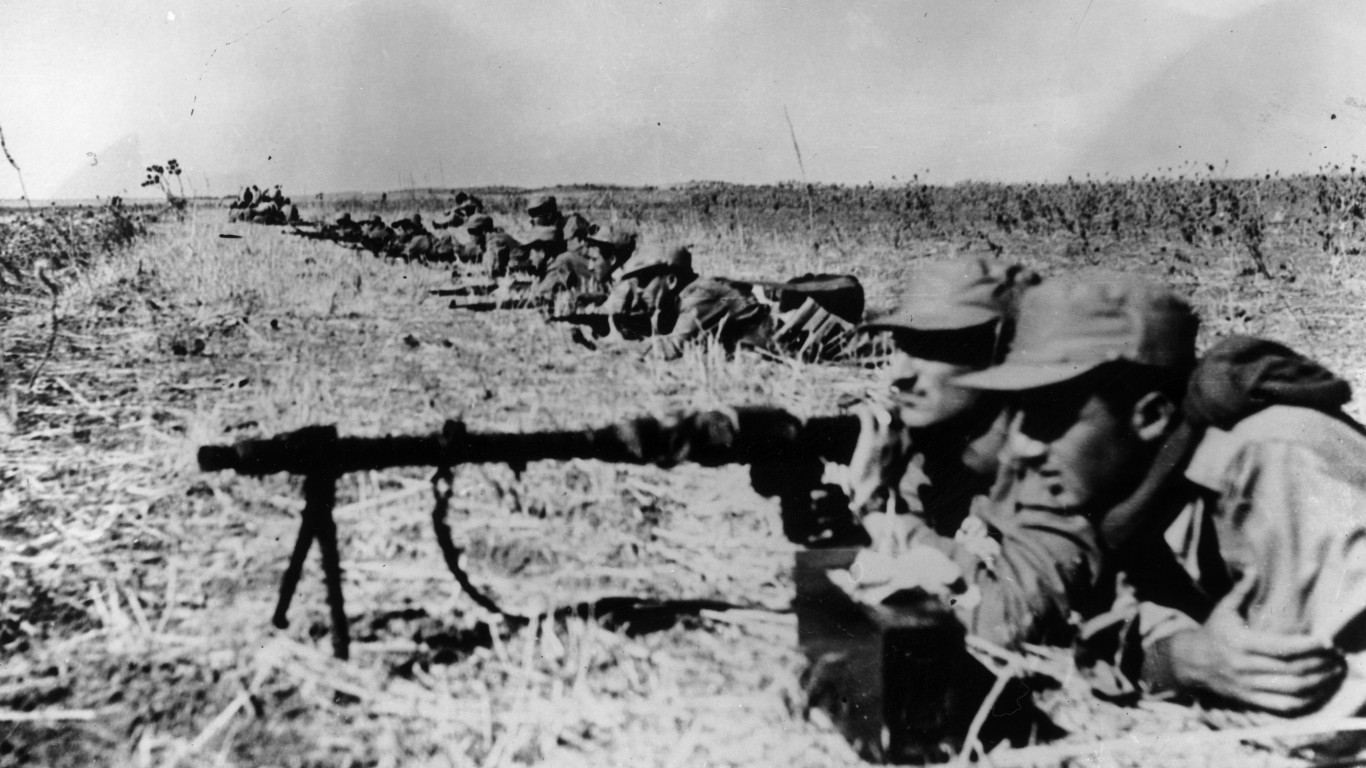
1948: Birth of Israel
> Date: May 15
> Location: Middle East
After Israel declares its independence following a UN resolution, neighboring Arab states with troops from Egypt, Iraq, Syria, Transjordan (now Jordan), Lebanon, and Saudi Arabia attack the former British-controlled Palestinian mandate. The Arab-Israeli War ended with an armistice that leaves Israel with some territories as Egypt and Jordan retains control over the Gaza Strip and the West Bank, respectively.
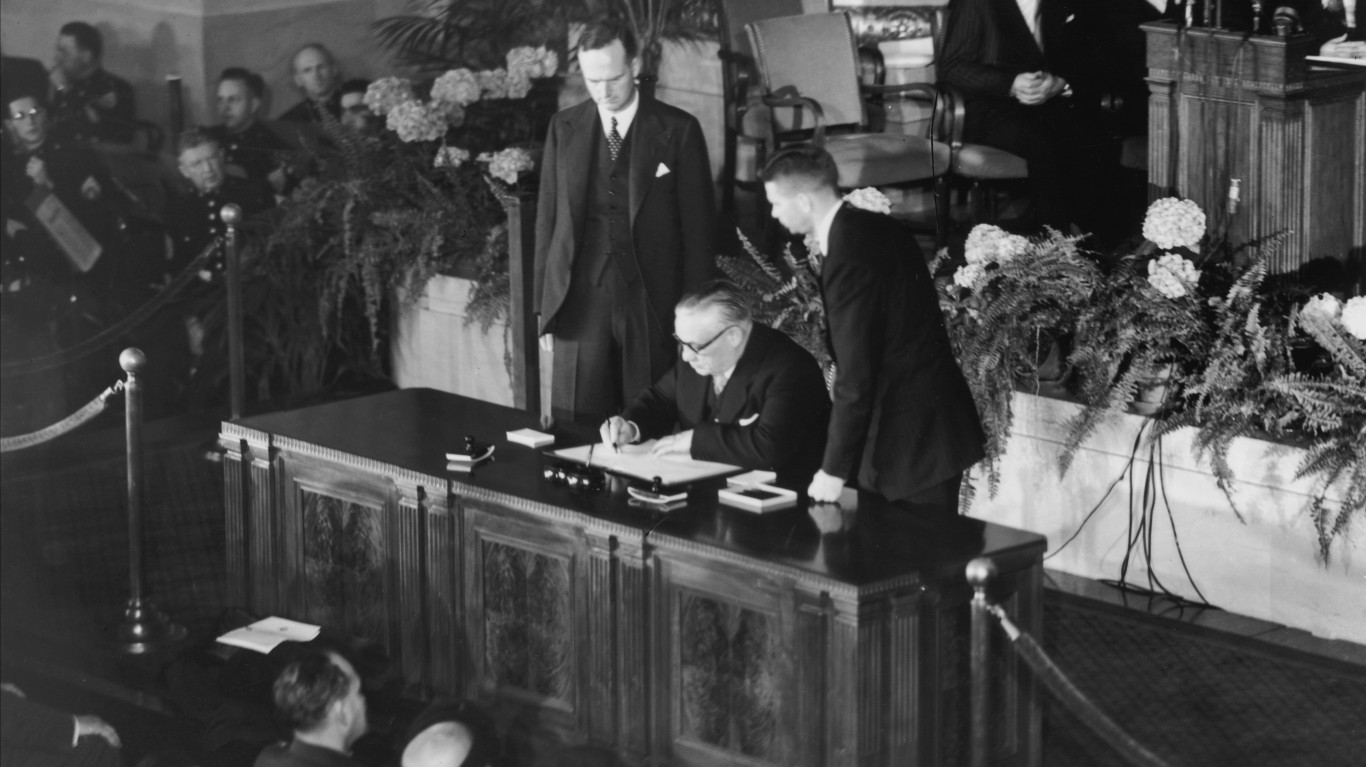
1949: NATO Founded
> Date: April 4
> Location: Washington D.C.
With the Cold War worsening, the Soviet Union detonates its first nuclear bomb and quickly exerts its influence over Eastern Europe. It attempts to do the same in Western Europe, which is still recovering from the massive destruction of World War II. To respond to the Soviet threat, U.S. and Western European allies form the North Atlantic Treaty Organization. Fundamentally, NATO simply states that an attack on any NATO member would be considered an attack on all NATO members. Cold War tensions ratchet up later that year when the communists take over China, the world’s most populous nation.
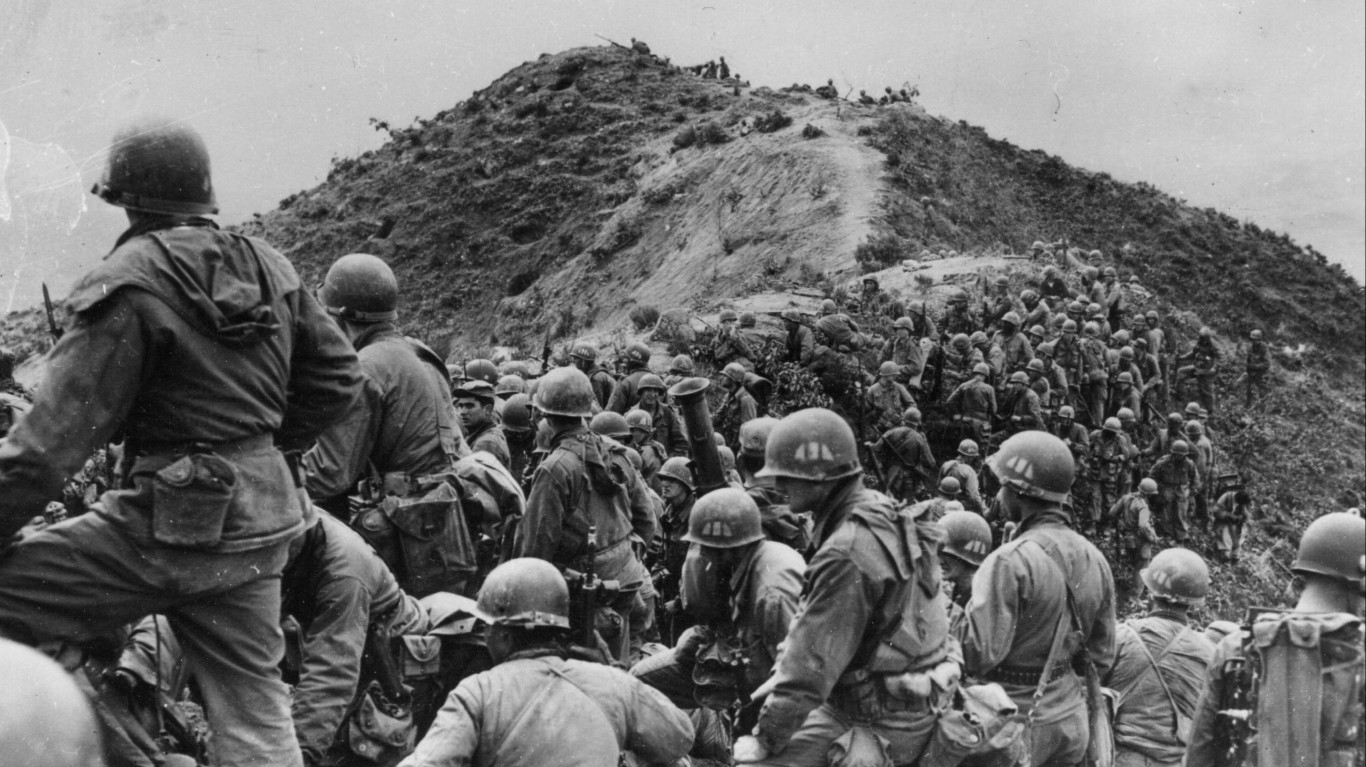
1950: Korean War Starts
> Date: June 25
> Location: Korea
The North Korean People’s Army crosses the 38th parallel into South Korea, eliciting almost an immediate response from U.S. President Truman, and starting the Korean War — a proxy battle between the United States and the People’s Republic of China. Three years later, a ceasefire would halt the war. The uneasy relations between North Korea and South Korea last to this day.
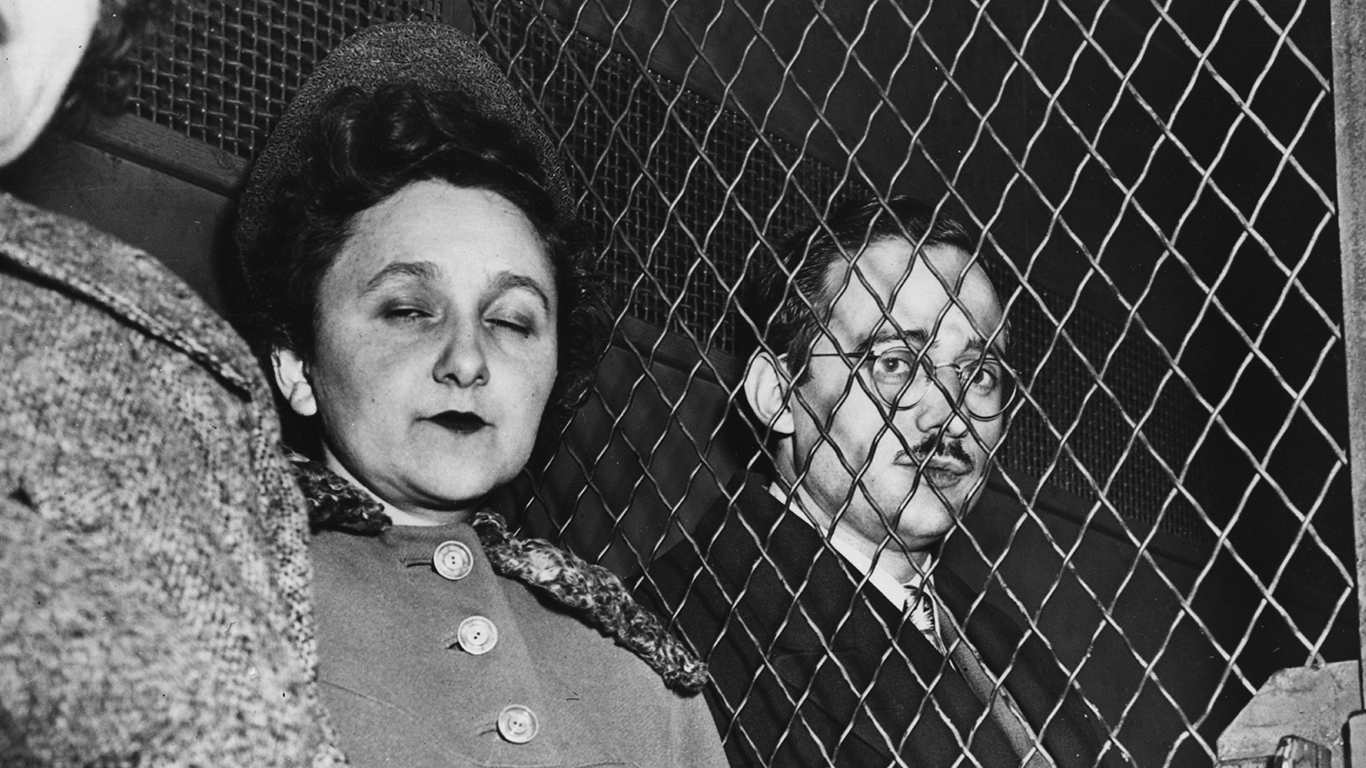
1951: Rosenbergs Sentenced
> Date: March 29
> Location: New York City
Husband and wife Julius and Ethel Rosenberg are convicted of espionage for their part in passing along atomic secrets to the Soviet Union during and after World War II. They are executed two years later. Not everyone is convinced of their involvement in the scheme. Supporters claim they are scapegoats swept up in the Cold War hysteria of the time. Documents revealed decades later would show the detailed extent of Julius Rosenberg’s involvement in the spy ring, though Ethel’s participation in the scheme remains inconclusive.
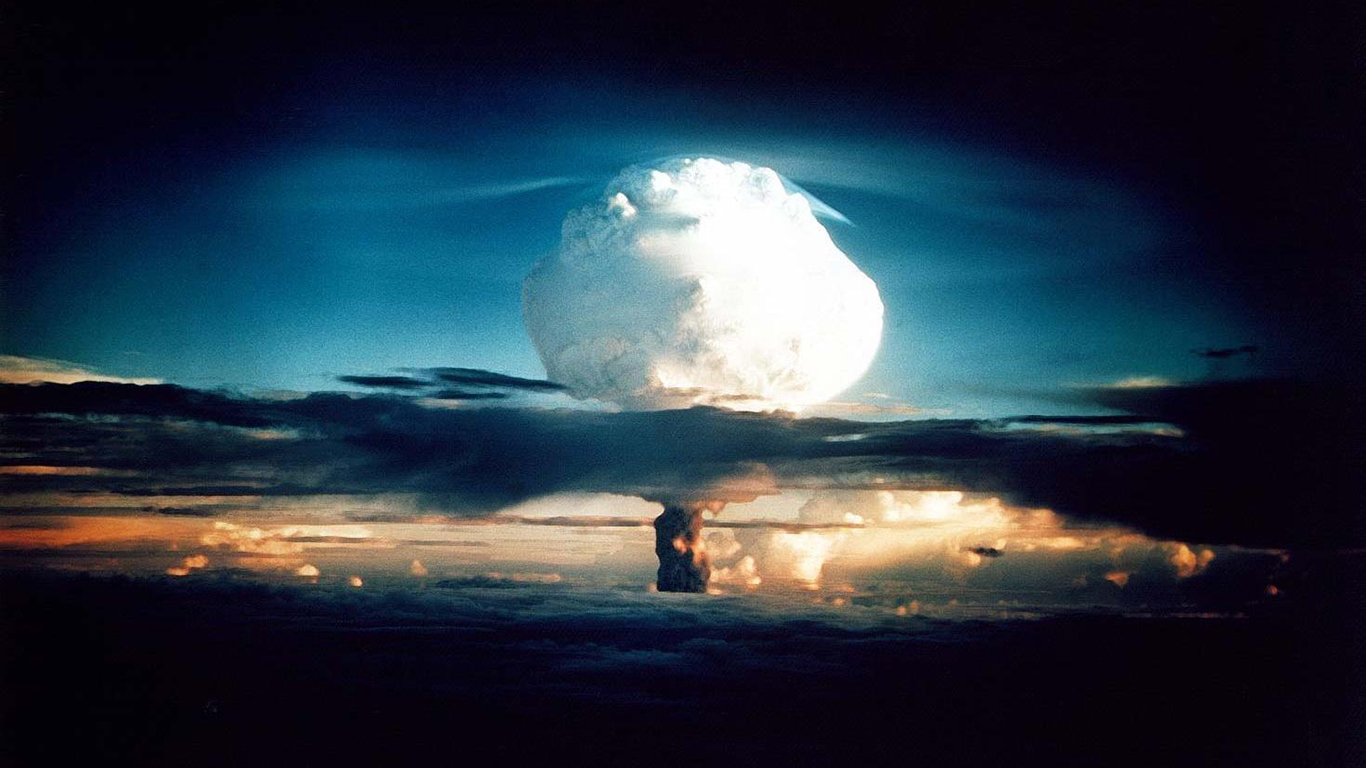
1952: First Hydrogen Bomb Test
> Date: Nov. 1
> Location: Marshall Islands
The United States successfully detonates its first hydrogen bomb, a second generation thermonuclear device, in the Marshall Islands as part of Operation Ivy, one of a series of nuclear bomb tests. From 1946 to 1958, the United States used the remote Pacific Marshall Islands as its nuclear weapons testing site, detonating a total of 67 nuclear tests.

1953: The Dawn of DNA
> Date: Feb. 28
> Location: Cambridge, England, U.K.
Cambridge University scientists James Watson and Francis Crick announce they have discovered the fundamental behavior and double-helix structure of DNA. Though scientists had been aware of DNA since the 1860s and its role in genetic inheritance since 1943, Watson and Crick were the first to explain how DNA works to replicate itself and pass on genes from one generation to the next.
[in-text-ad-2]
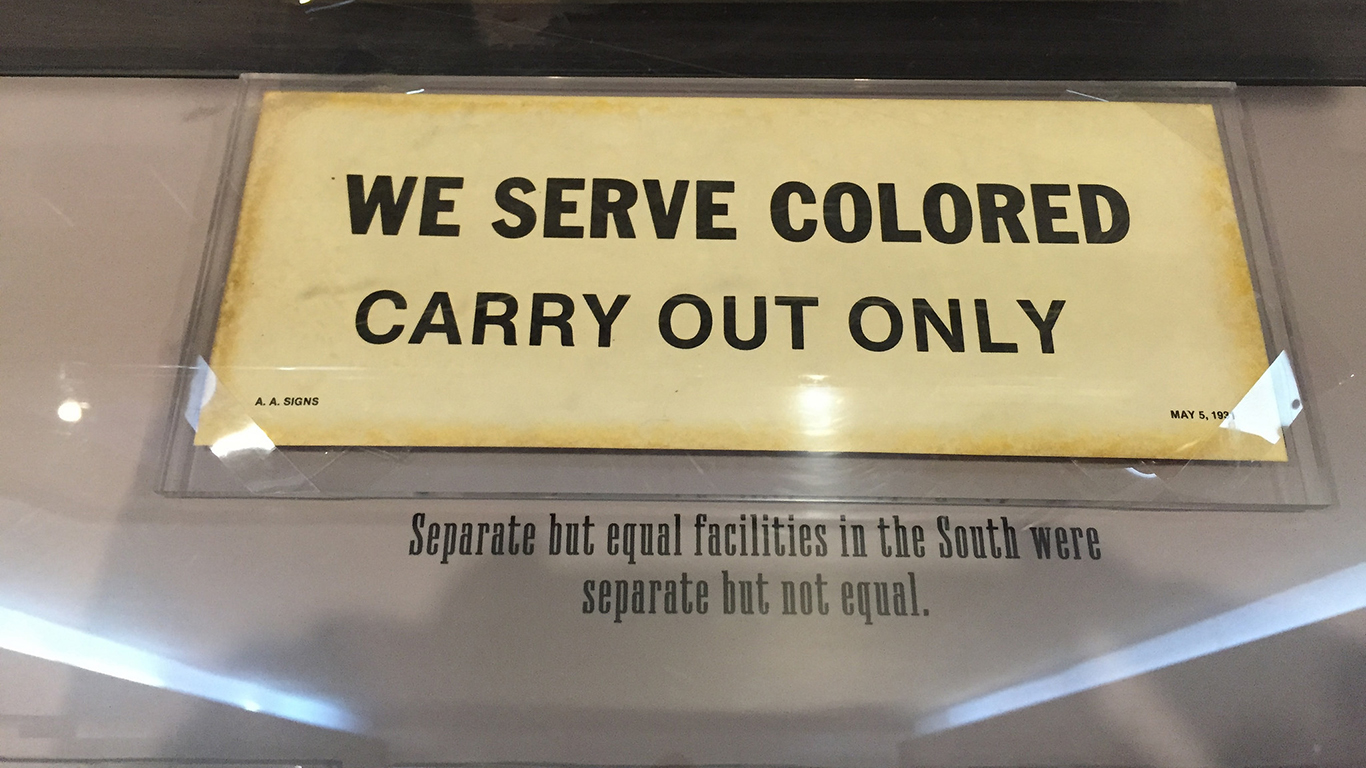
1954: Brown vs. Board of Education
> Date: May 17
> Location: Washington D.C.
In a landmark case involving Linda Brown of Topeka, Kansas, who had to cross a railroad track to reach an all-black elementary school even though an all-white school was closer, the U.S. Supreme Court rules that the segregated school system was unconstitutional on the basis of the Equal Protection Clause of the 14th Amendment of the Constitution. The clause would be used again by the courts to reverse state-level racial segregation practices and ordinances.
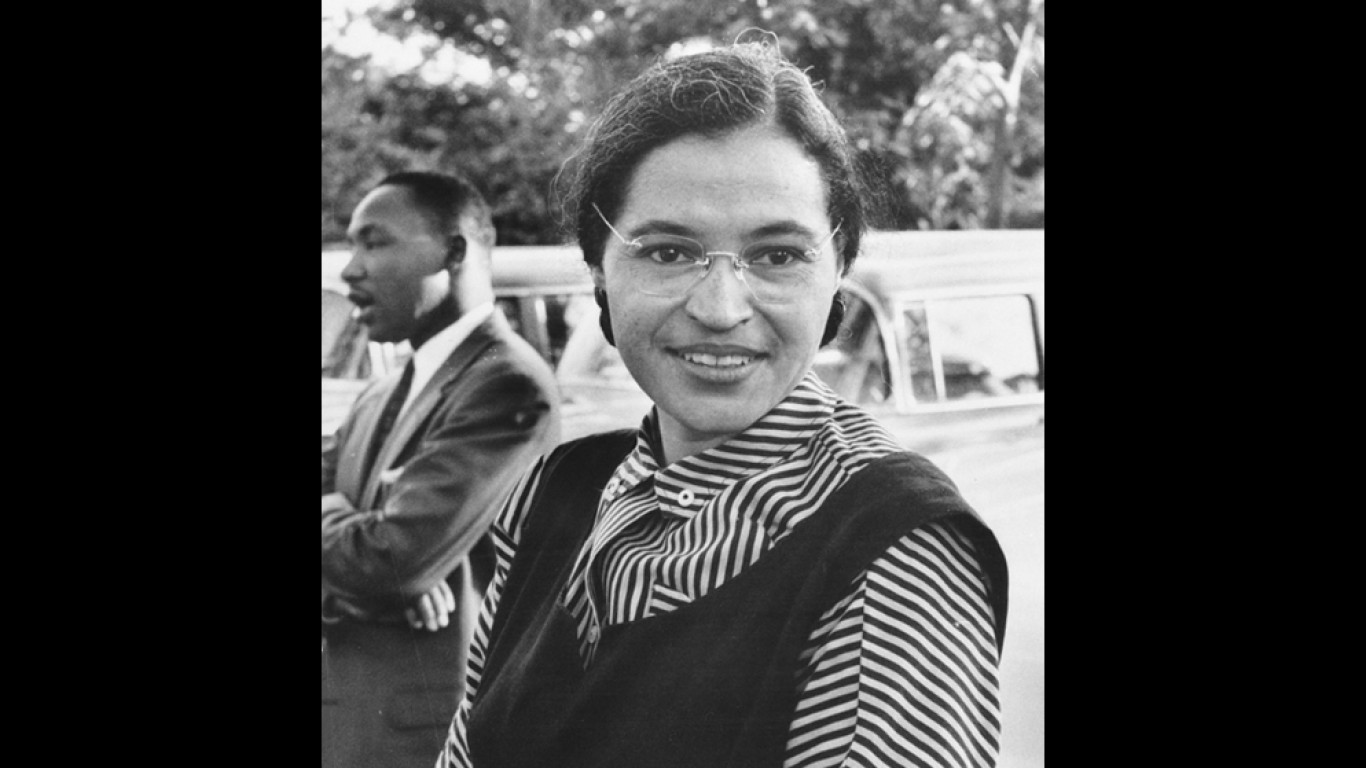
1955: Parks Starts a Movement
> Date: Dec. 1
> Location: Montgomery, Alabama
Rosa Parks makes history by refusing to give up her seat to a white passenger on a Montgomery bus. The arrest of Parks for insisting to remain seated leads to the Montgomery Bus Boycott and the ascent of a young pastor named Martin Luther King, Jr., as a local activist leader to advance the civil rights cause. A successful federal lawsuit by the NAACP against the city leads to the desegregation of the Montgomery bus system on Dec. 21 of the following year.
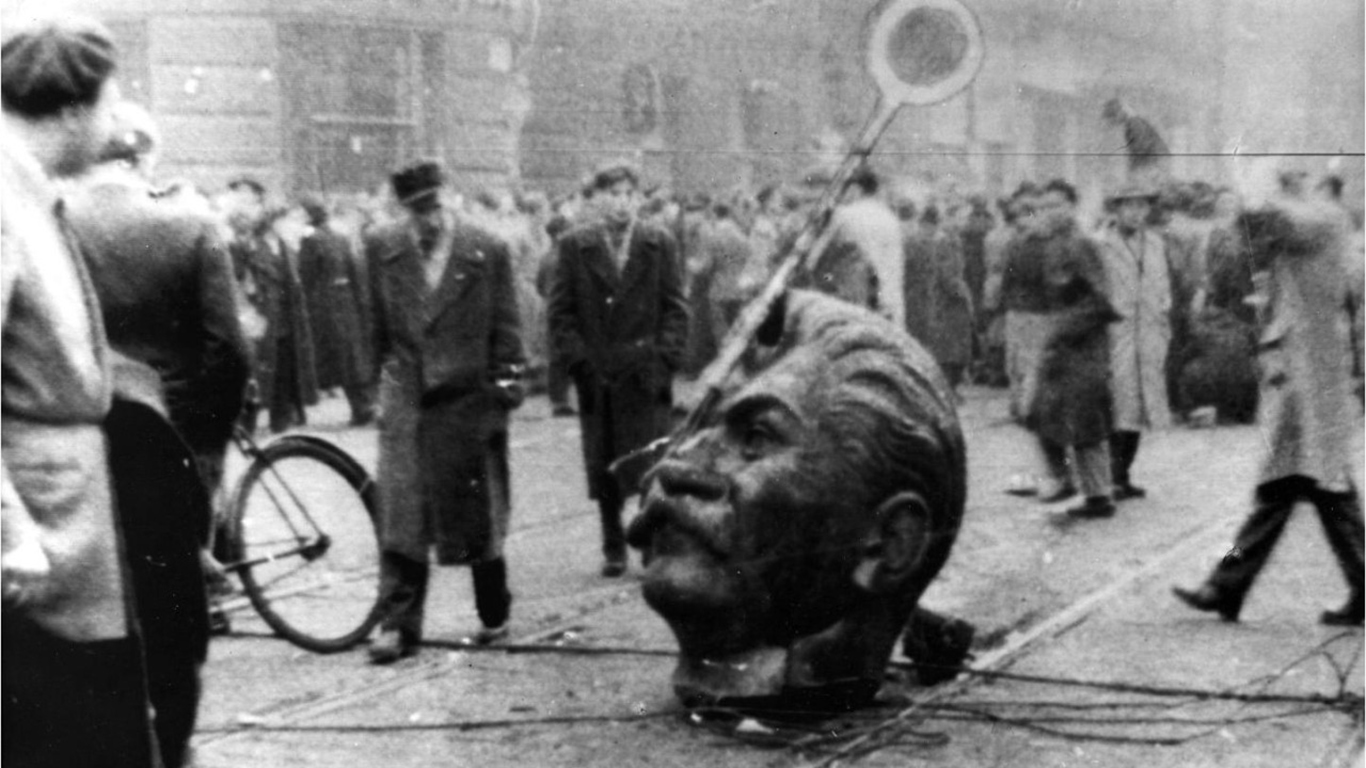
1956: Hungary Suppressed
> Date: Nov. 4
> Location: Budapest
Cold War tensions escalate when Hungarians take to the streets, demanding democratic reforms. Three days later, Red Army troops invade Hungary, killing thousands. Nine days after the incursion, Budapest is occupied by the Soviet troops in one of the largest and most aggressive actions taken by the Soviet Union since the end of World War II.
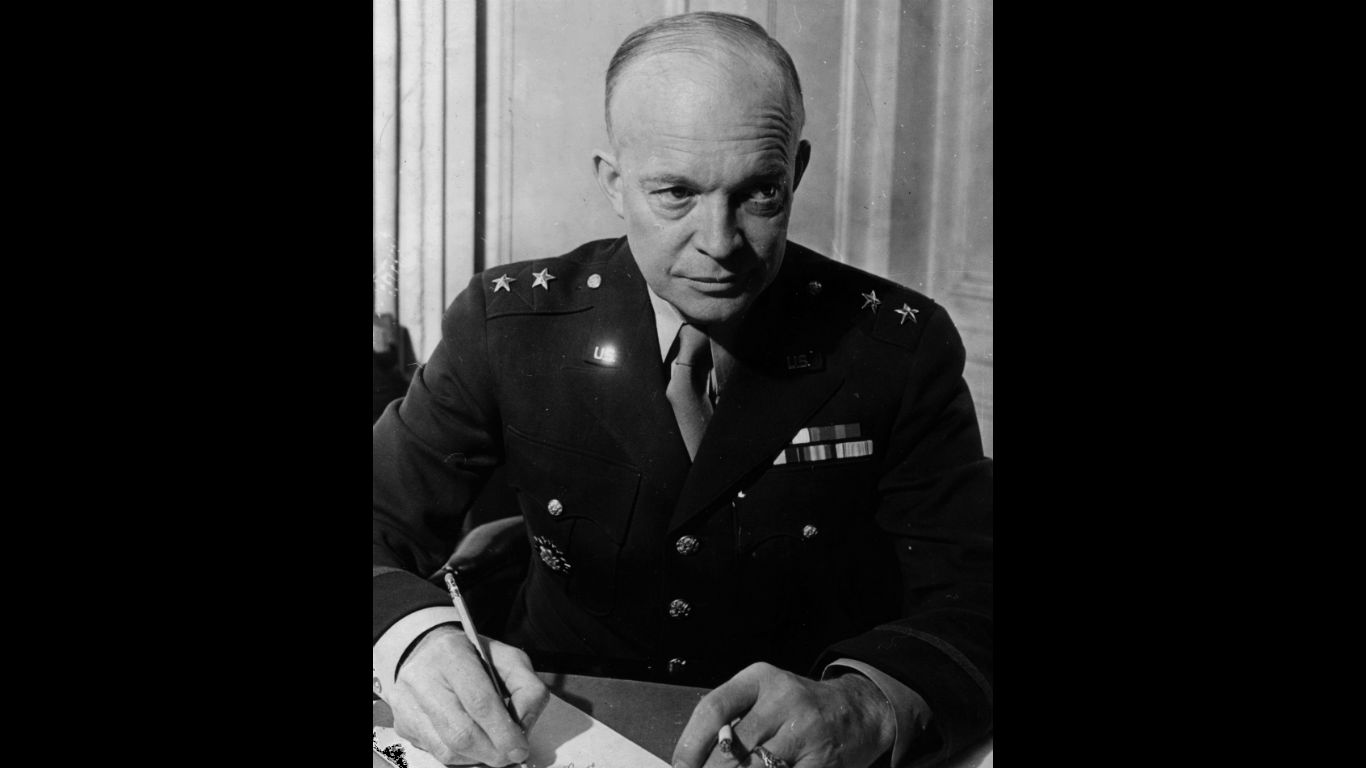
1957: The Little Rock Nine
> Date: Sept 24
> Location: Little Rock, Arkansas
U.S. President Dwight D. Eisenhower orders federal troops to protect nine African American high school students as they start classes at the all-white Little Rock Central High School in Arkansas. This would become one of the first high-profile actions by the federal government against state-level racial segregation.
[in-text-ad]

1958: US Launches First Satellite
> Date: Jan. 31
> Location: Cape Canaveral, Florida
The United States successfully launches Explorer 1, three months after the Soviet Union sent its first satellite, Sputnik, into orbit. The two superpowers would go on to send more satellites into space, creating a Cold War space race to build ever more sophisticated orbital communications devices.
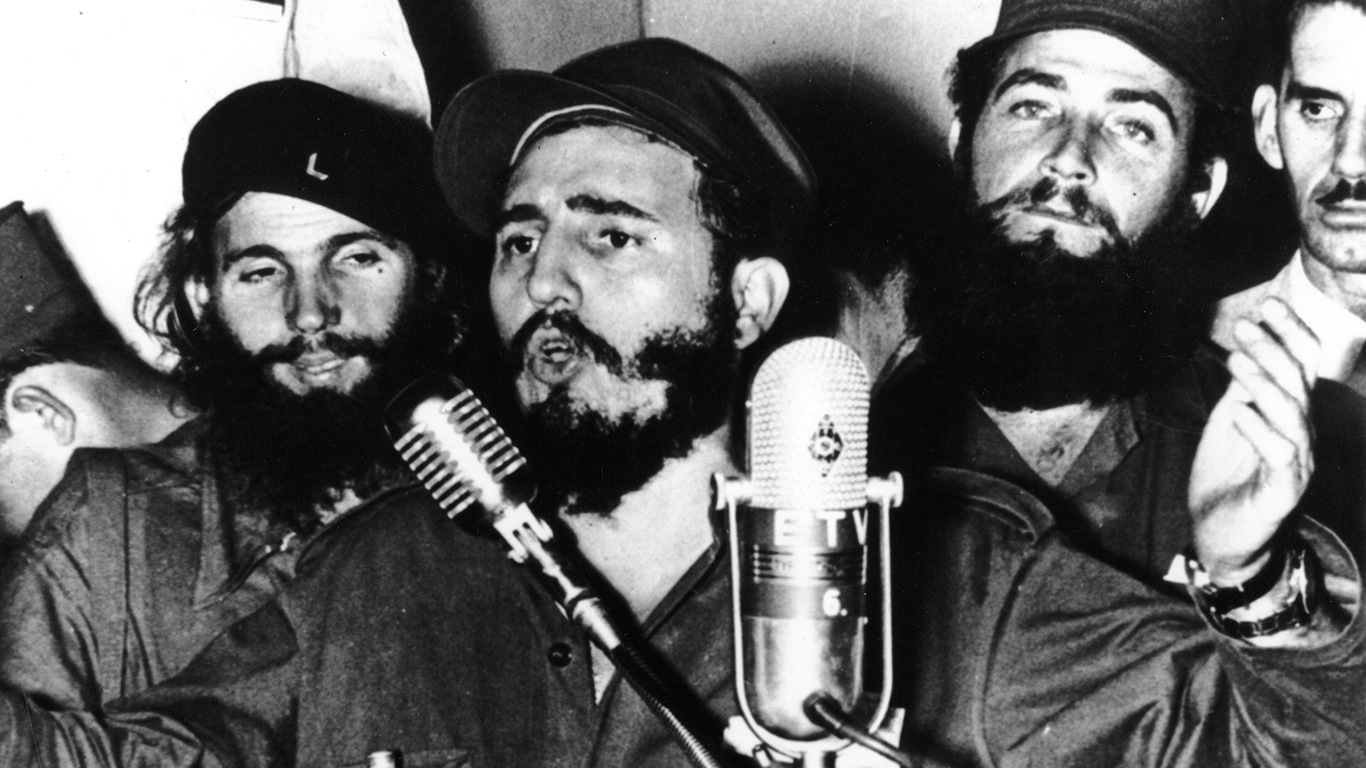
1959: Castro Takes Over Cuba
> Date: Jan. 1
> Location: Havana
U.S.-backed dictator Fulgencio Batista flees Havana as Fidel Castro’s forces advance on the Cuban capital. Days later, rebels led by Ché Guevara and Camilo Cienfuegos enter the city, followed two days later by Castro’s forces, who quickly consolidate power in Cuba, establishing a communist government in the Caribbean’s largest country.
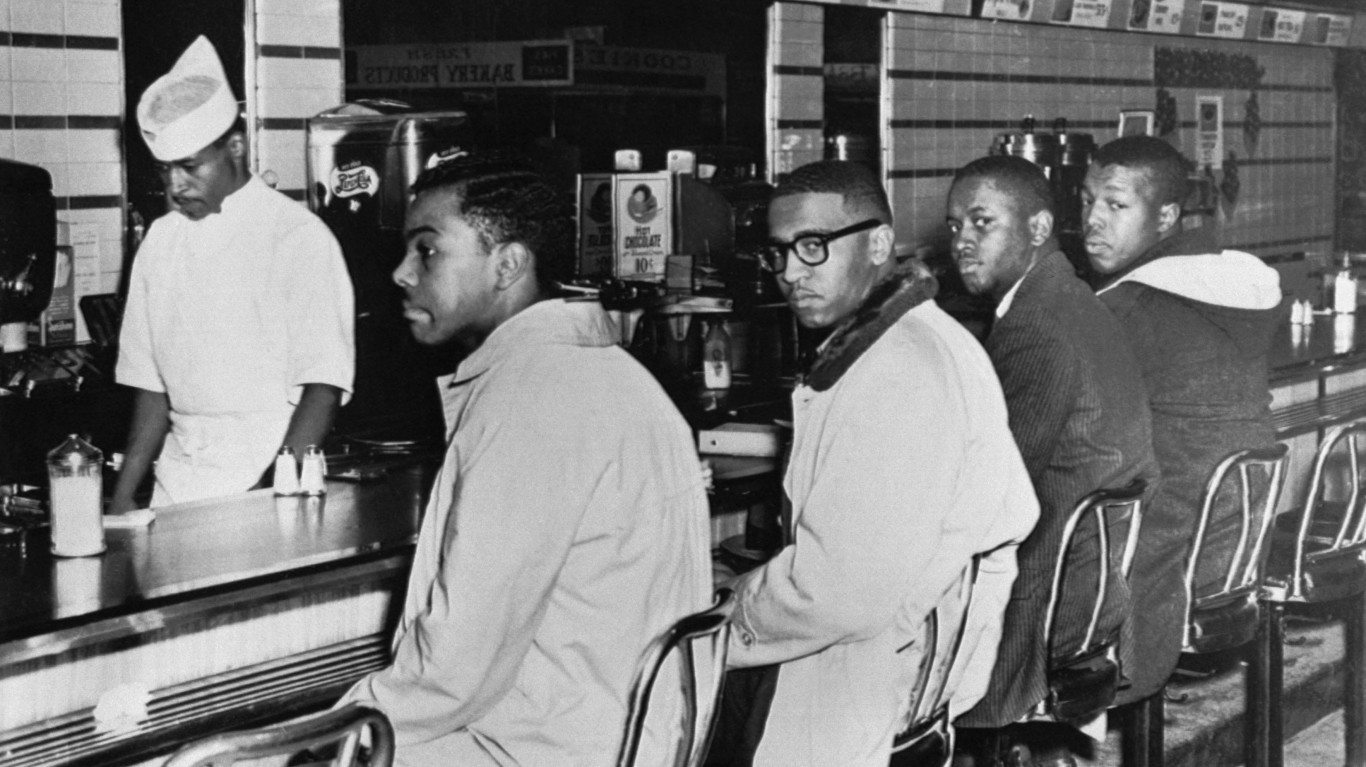
1960: Lunch Counter Sit-in
> Date: Feb. 1
> Location: Greensboro, North Carolina
When four African American college students — Ezell A. Blair, Franklin E. McCain, Joseph A. McNeil and David L. Richmond — sit down at a Woolworth’s lunch counter in Greensboro, North Carolina, and ask for service, they are denied. The young men refuse to leave, leading to a larger six-month protest that results in the desegregation of the lunch counter by that summer. The Greensboro Woolworth’s would close in 1993, and a section of the lunch counter be donated to the Smithsonian.
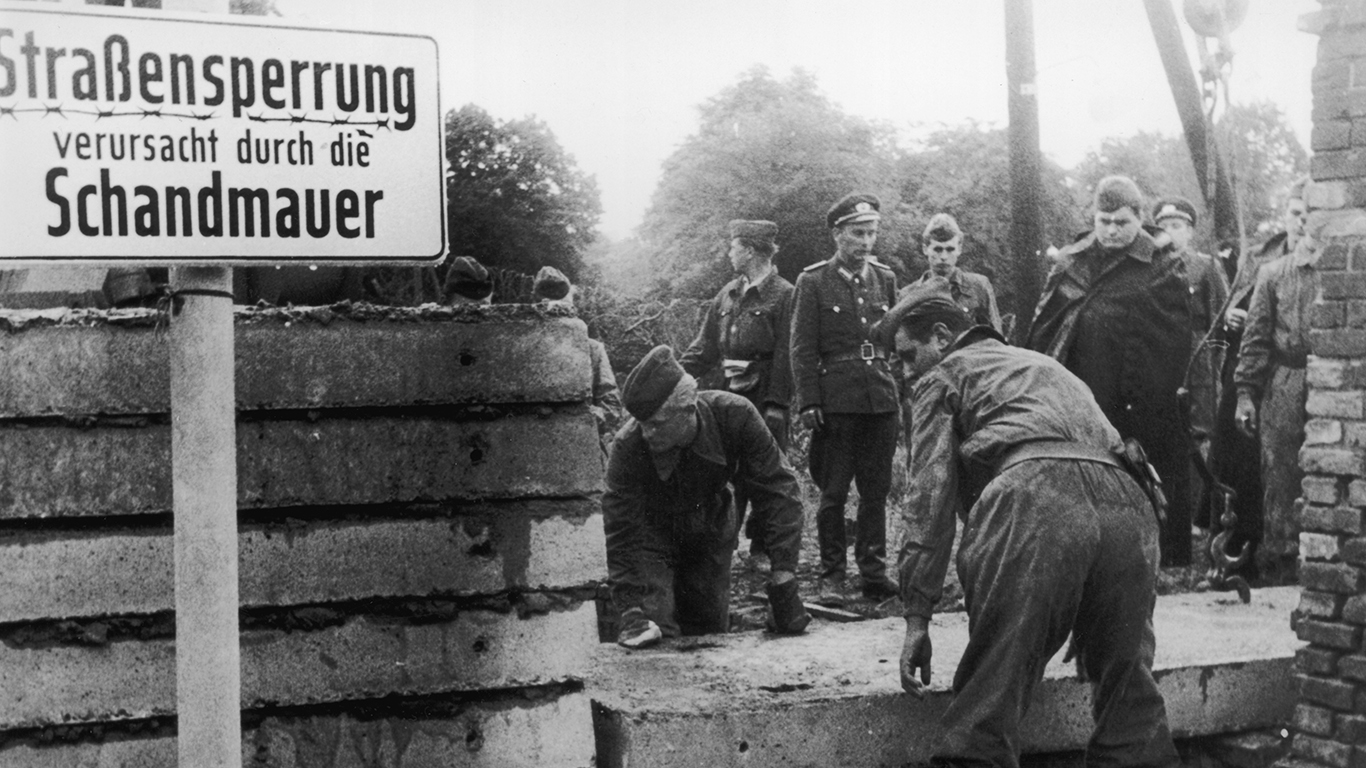
1961: Berlin Wall Built
> Date: Aug. 13
> Location: Berlin, East and West Germany
By the late summer of 1961, the loss of skilled workers such as teachers, engineers, and doctors to the West reaches crisis levels in East Germany. On Aug. 12, 2,400 East Germans cross into West Berlin, the most in a single day. The next day, with the approval of Soviet Premier Nikita Khrushchev, East Germany builds a wall that would extend 27 miles through Berlin, dividing families and friends for the next 28 years. The wall would serve as an enduring symbol of the Cold War, used by presidents John Kennedy and Ronald Reagan to inspire a divided city.
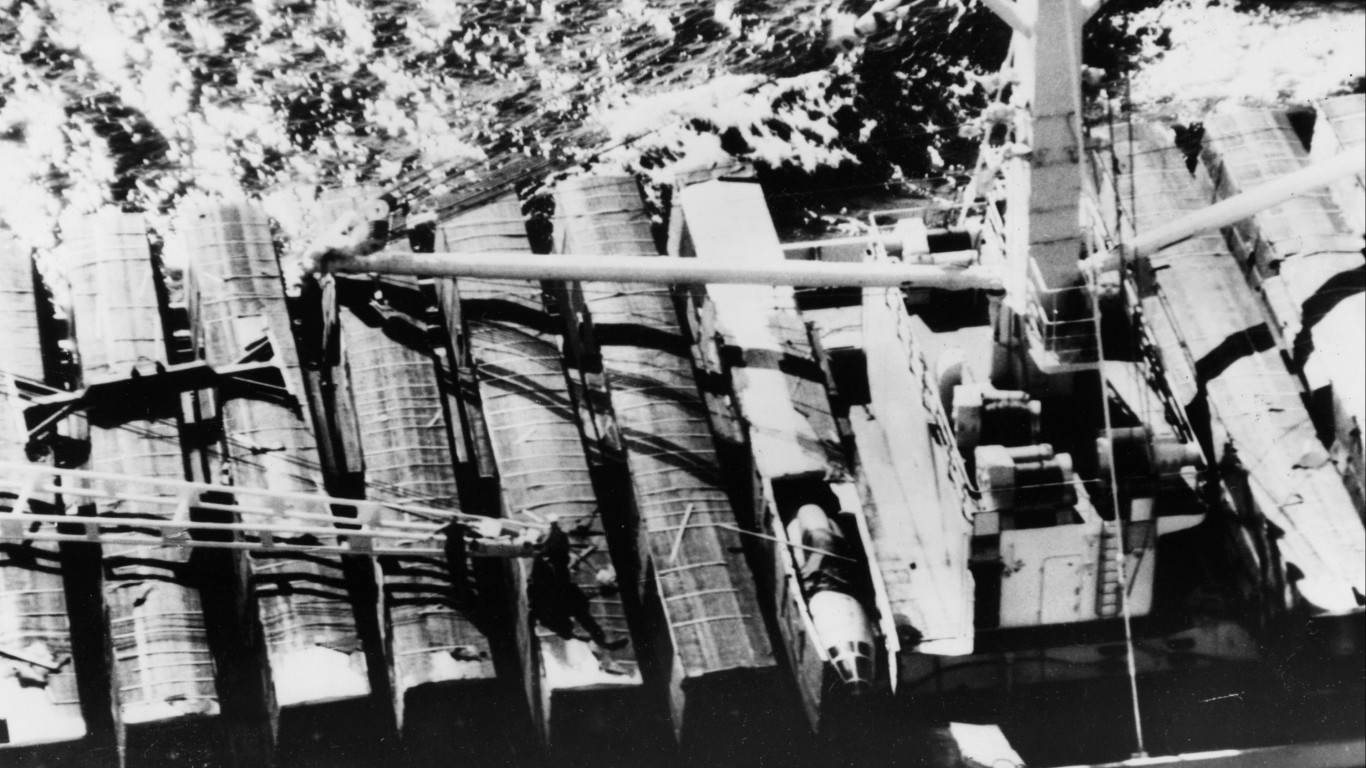
1962: Cuban Missile Crisis
> Date: Oct.16-28
> Location: Multiple
When the United States learns that the Soviet Union is building nuclear missile installations 90 miles south of Miami in communist Cuba, the Kennedy administration starts a naval blockade around the island, which is at times tested, and Kennedy demands the removal of the missiles.The standoff is widely considered to be the closest the two nuclear superpowers come to direct military confrontation. Cooler heads prevail. The Soviet Union offers to remove the missiles in exchange for a guarantee that the United States will not invade Cuba. In secret, the administration also agrees to withdraw U.S. missiles from Turkey.
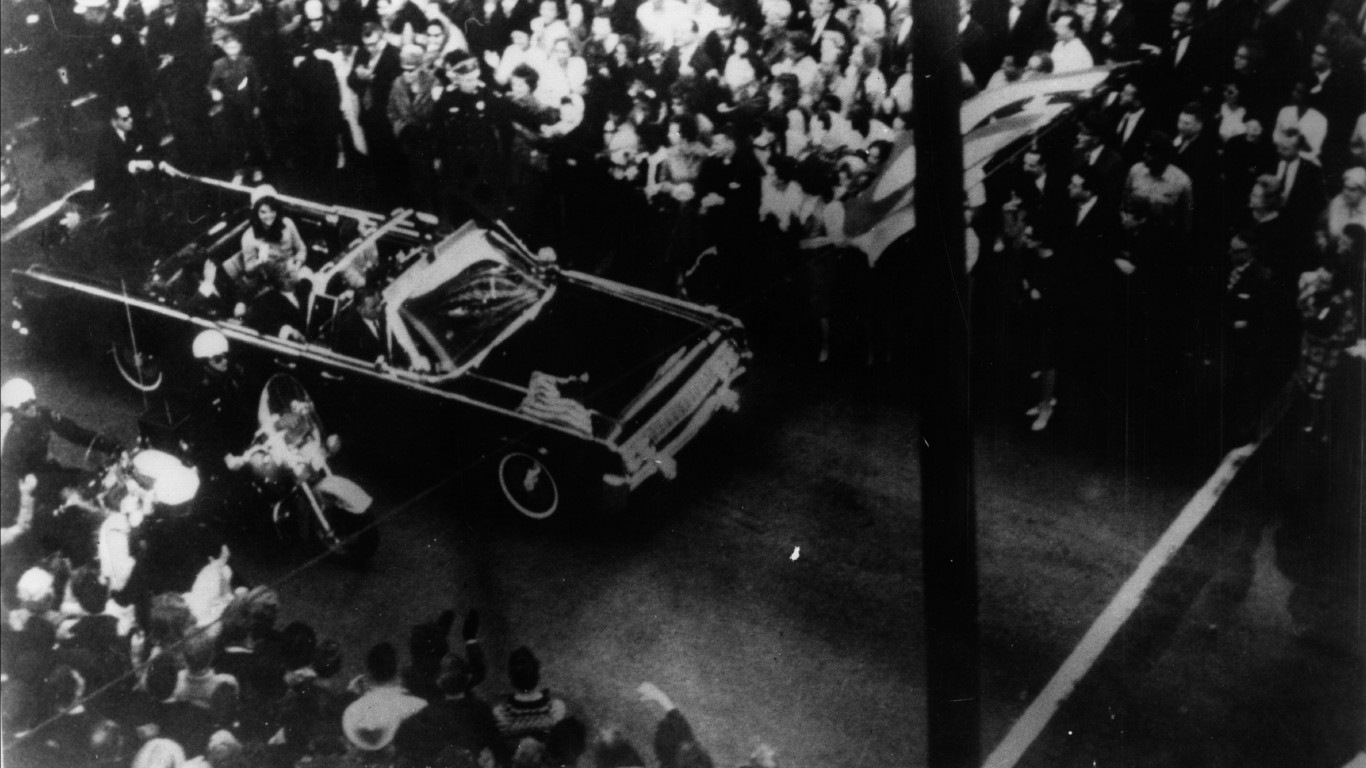
1963: JFK Assassinated
> Date: Nov. 22
> Location: Dallas
As President John F. Kennedy prepares for his re-election bid, he embarks on a multi-state tour starting in September 1963. He is murdered by a sharpshooter’s bullet fired by Lee Harvey Oswald at about 12:30 p.m. as his motorcade passed through Dealey Plaza in Dallas. Oswald himself is murdered two days later by nightclub owner Jack Ruby.
[in-text-ad-2]
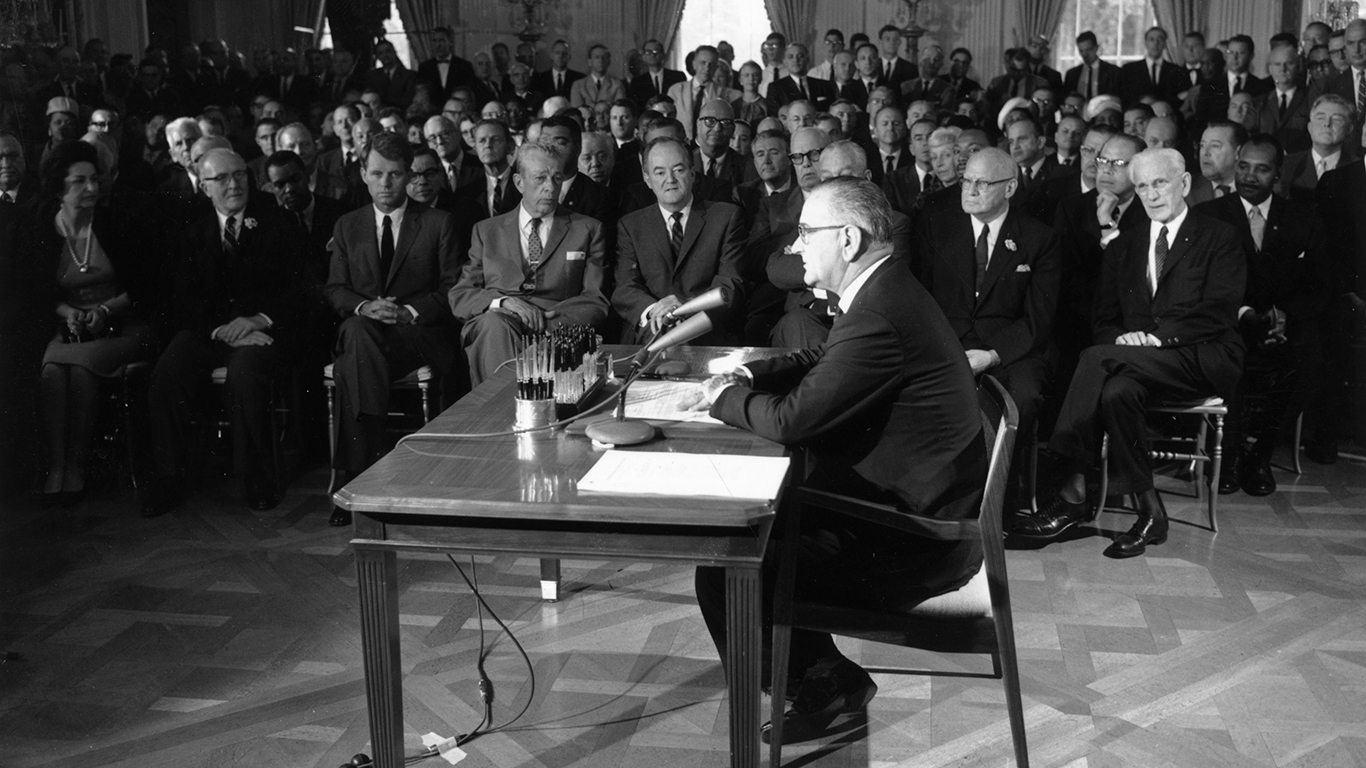
1964: LBJ’s “War on Poverty”
> Date: Jan. 8
> Location: Washington D.C.
Bogged down by the Vietnam War, President Lyndon B. Johnson struggles constantly to pivot away from the war to focus on his stated goals of reducing poverty, ending segregation, and establishing the social programs many Americans rely on to this day, including the immensely popular Medicare program. During his “War on Poverty” State of the Union Address of Jan. 8, 1964, LBJ outlines the need for the country to reduce poverty, end racial discrimination, attend to the health needs of the elderly, and other progressive goals. Later achievements during LBJ’s administration are the Civil Rights Act of 1964 and the Social Security Amendments of 1965.
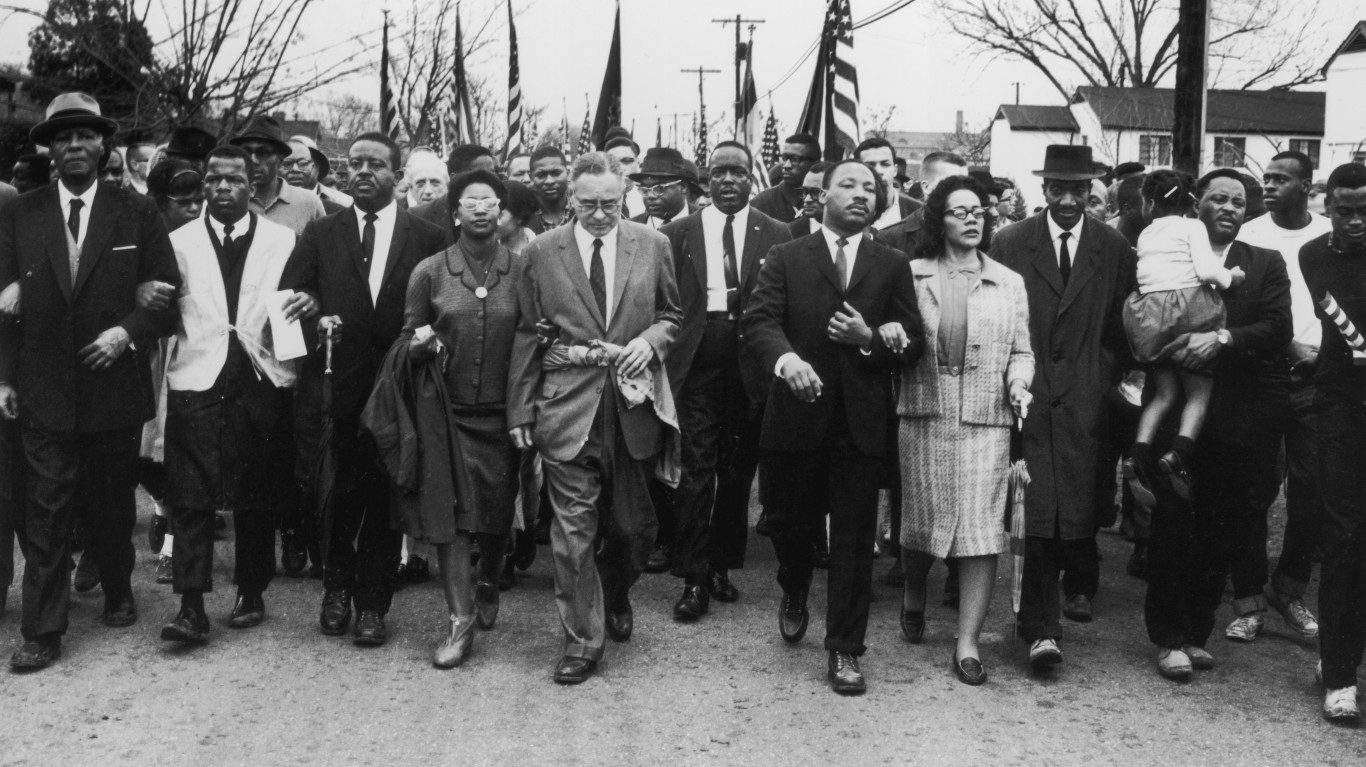
1965: Civil Rights Turns Violent
> Date: March 7
> Location: Selma, Alabama
The fatal shooting of protester Jimmy Lee Jackson by an Alabama state trooper sparks a march from Selma to Montgomery, Alabama. Hundreds of civil rights activists march in what becomes known as “Bloody Sunday.” Police would confront the marchers, led by John Lewis (who would serve as a House Democrat from Georgia) and others. As the activists cross the Edmund Pettus Bridge, police attack the protesters with tear gas and billy clubs, hospitalizing 50. Lewis would pass away in July 2020, his body crossing the Edmund Pettus Bridge for the last time in a horse-drawn carriage.

1966: Mao Purges Rivals
> Date: Aug. 13
> Location: Beijing
At the end of a weeklong session of the Communist Party Central Committee of the People’s Republic of China, Chairman Mao Zedong condemns the political elites, calling on China’s youth to rebel against the entrenched political hierarchy. It is the beginning of the decade-long Cultural Revolution that fundamentally transforms Chinese society. Intellectuals, members of the former Nationalist government, and people with ties to Western powers are persecuted, sent to re-education labor camps, or killed by the factions of Red Guards formed in the wake of Mao’s call to action.
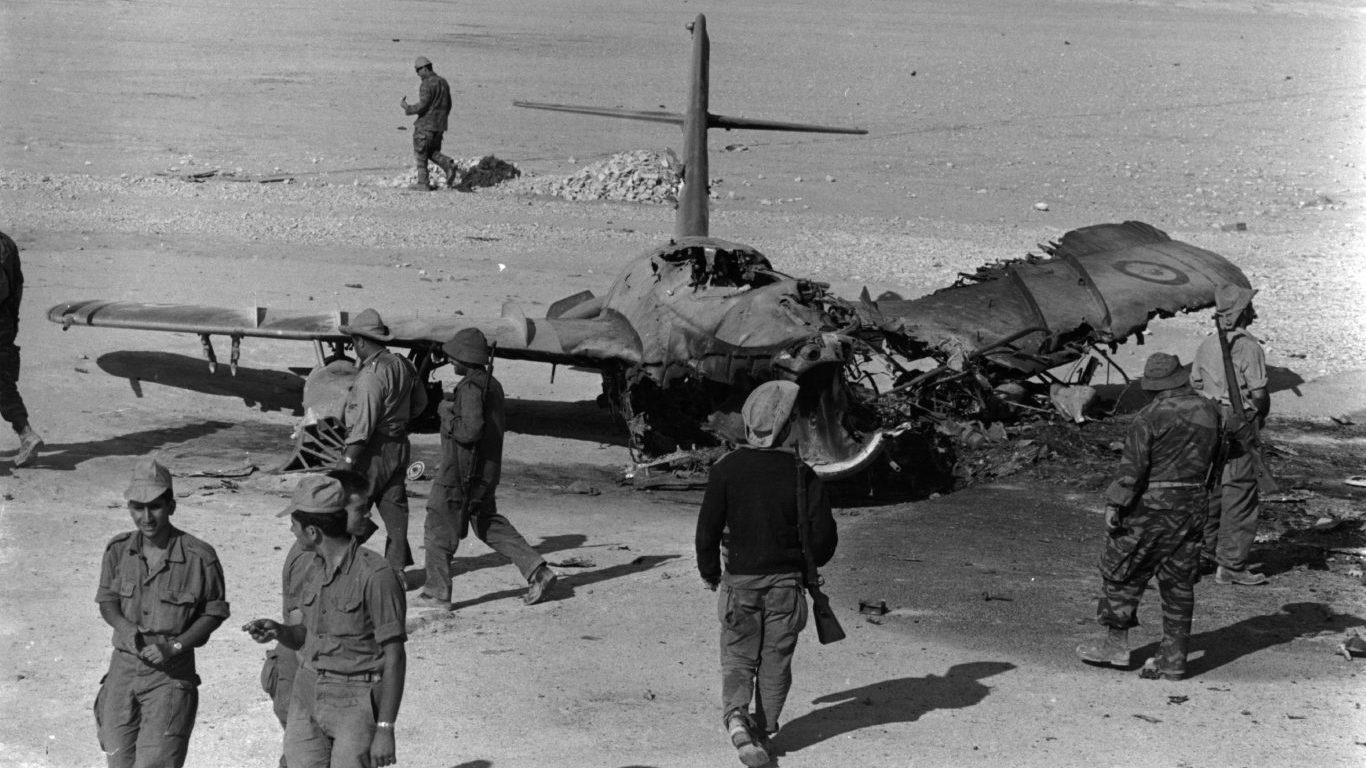
1967: Six-Day War
> Date: June 5
> Location: Middle East
Amid escalating tensions with its neighbors, Israel launches a pre-emptive strike that destroys most of Egypt’s air force. Syria, Jordan, and Iraq also attack Israel. As the war continues, Israel takes the Gaza Strip and the Sinai Peninsula from Egypt, captures East Jerusalem and the West Bank from Jordan, and in heavy fighting seizes the Golan Heights from Syria. A ceasefire went into effect on June 10.
[in-text-ad]
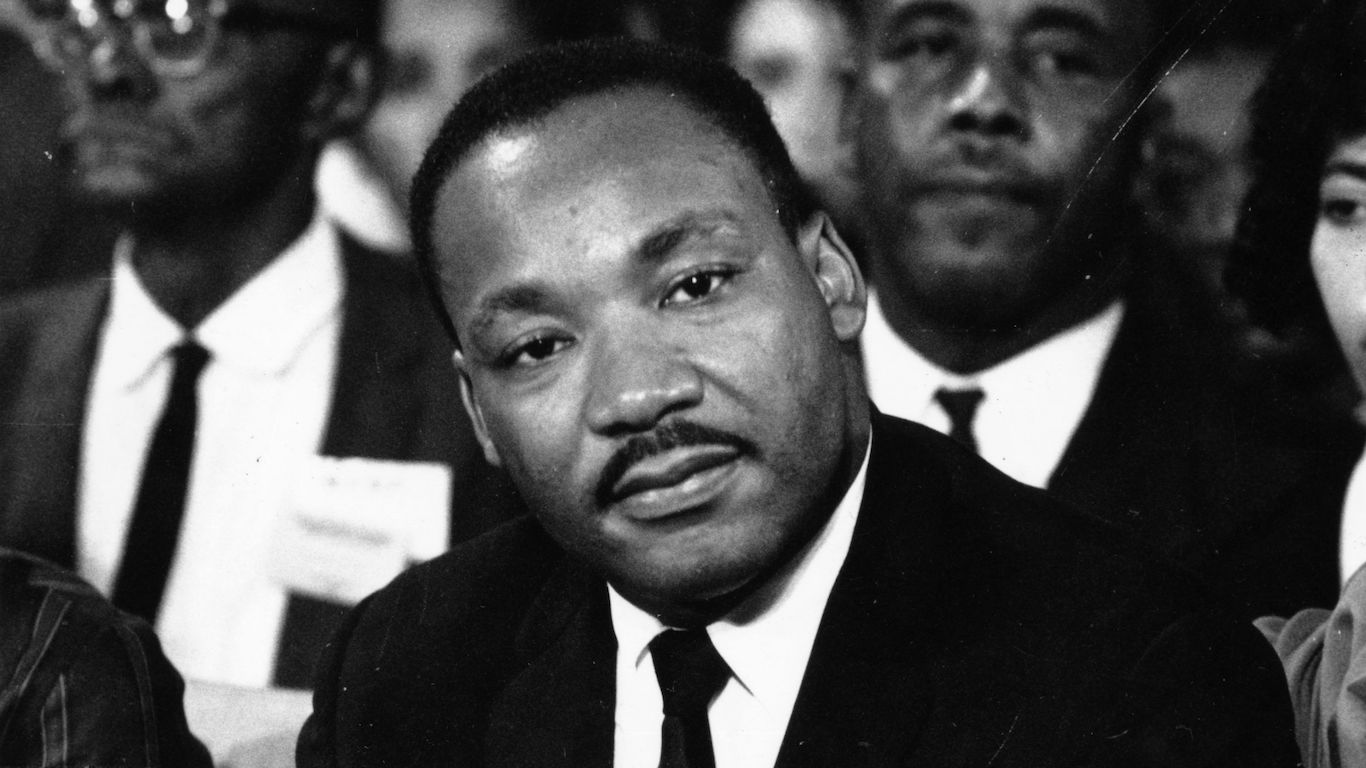
1968: King Assassinated
> Date: April 4
> Location: Memphis, Tennessee
Rev. Dr. Martin Luther King, Jr., is fatally shot by James Earl Ray as the civil rights icon stands on the balcony of the Lorraine Motel, a tragedy that sparks race riots nationwide. King’s influence in words and actions touch and move not only the nation, but the world, and resonate to this day. Two months later, on June 4, Democratic presidential candidate Robert F. Kennedy and brother of John F. Kennedy, is fatally shot by Sirhan Sirhan, an Arab Christian from Jerusalem, who believes Kennedy is “instrumental” in oppressing Palestinians.

1969: Landing on the Moon
> Date: July 20
> Location: Moon
President Kennedy’s goal of a manned lunar landing before 1970 is realized six years after his assassination. Neil Armstrong, Buzz Aldrin, and Michael Collins blast off from the Kennedy Space Center at 9:32 a.m. aboard the Saturn V rocket. After three days of travel, Armstrong and Aldrin land the Eagle module on the lunar surface as Collins remains in lunar orbit to pilot the module. Upon their return to Earth, the three astronauts are put in 21-day quarantine to ensure they do not bring back any lunar contagions.
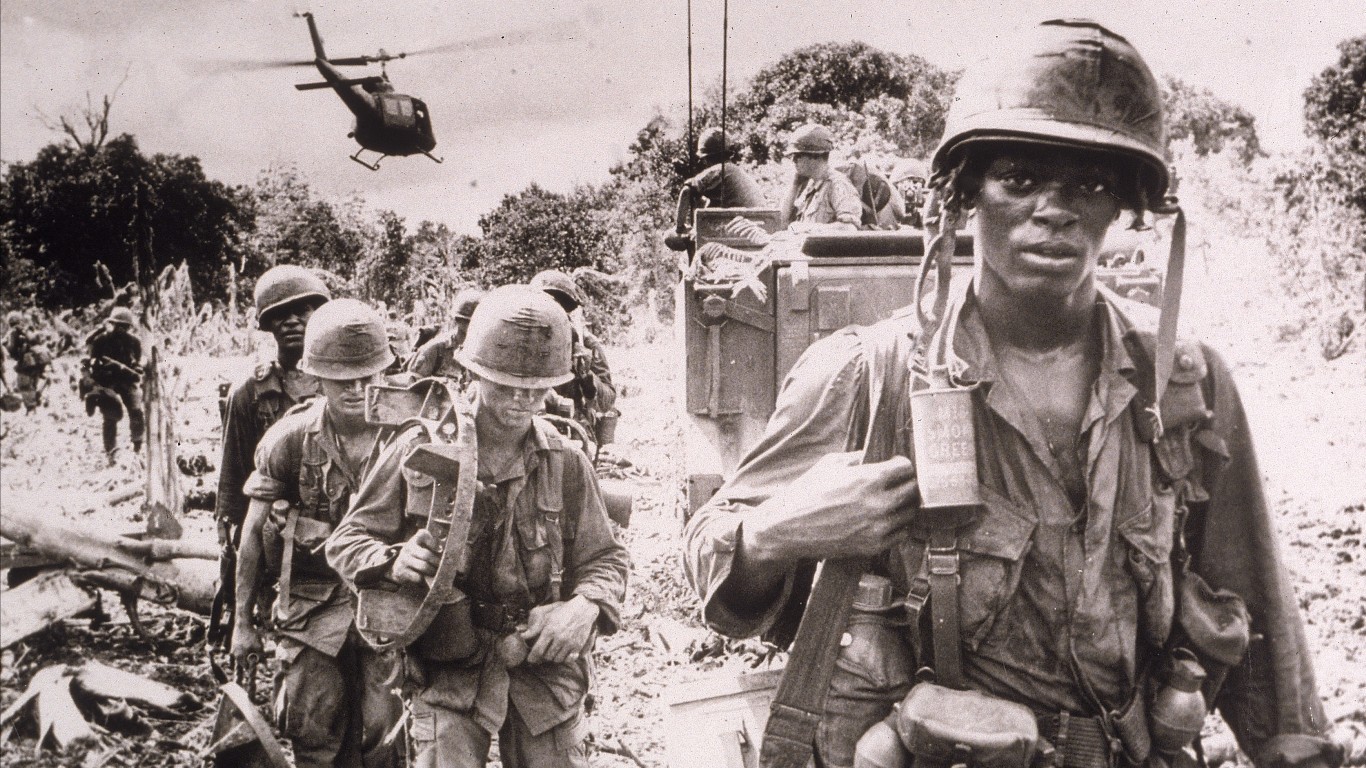
1970: War In Asia Widens
> Date: April 29
> Location: Eastern Cambodia
Although the United States should be scaling back U.S. troop presence in Vietnam, President Richard Nixon approves an operation with the South Vietnamese to invade Cambodia to oust Northern Vietnamese forces there. The Cambodian incursion inflames anti-war protests in the United States as it is perceived to be an escalation of U.S. military involvement in Southeast Asia.
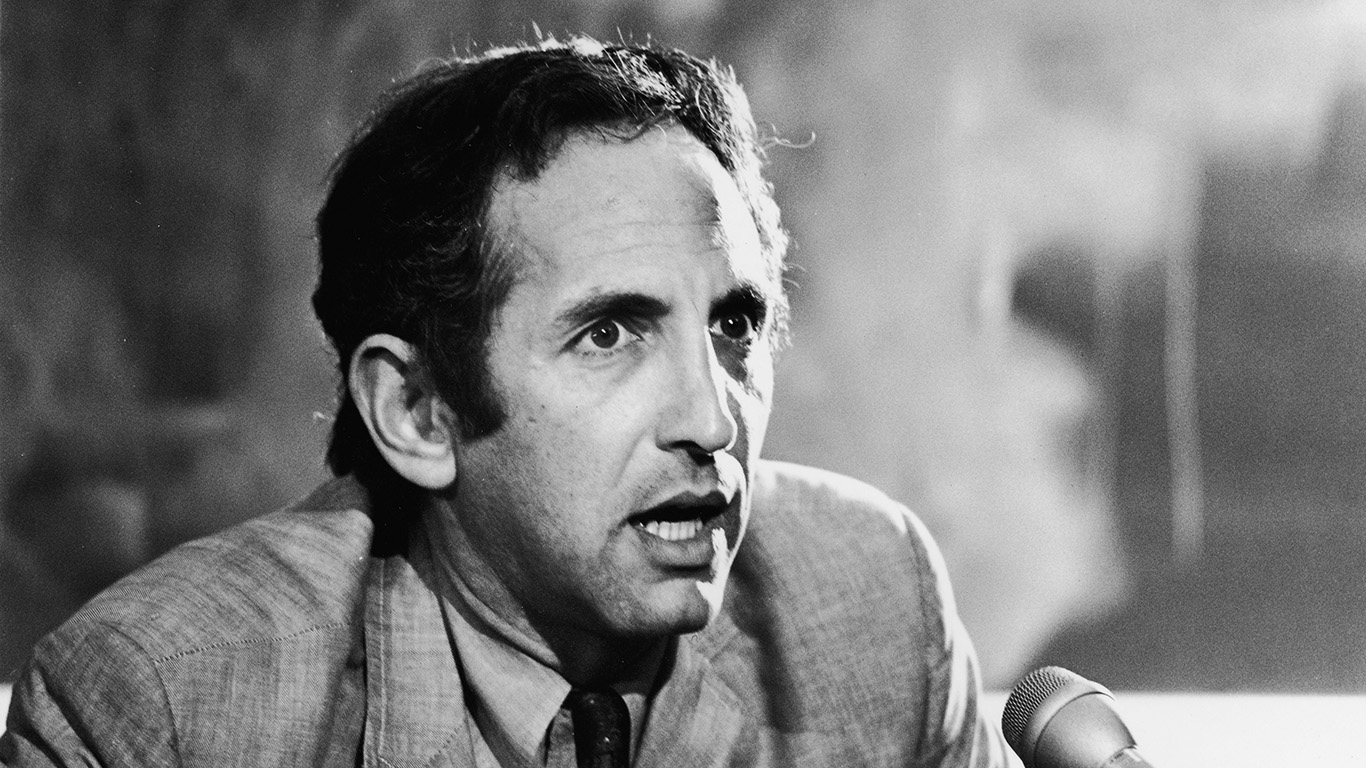
1971: Pentagon Papers
> Date: Feb. 8
> Location: Laos
The Pentagon Papers, a study by the U.S. Department of Defense about the country’s involvement in the Vietnam war, are released and published first in The New York Times, then other newspapers. The documents expose several missteps and how several administrations have misled the American public regarding the war in Vietnam. They also reveal an expanded campaign in Cambodia and Laos, especially clandestine bombing in Laos, which today is considered the heaviest bombardment in history.
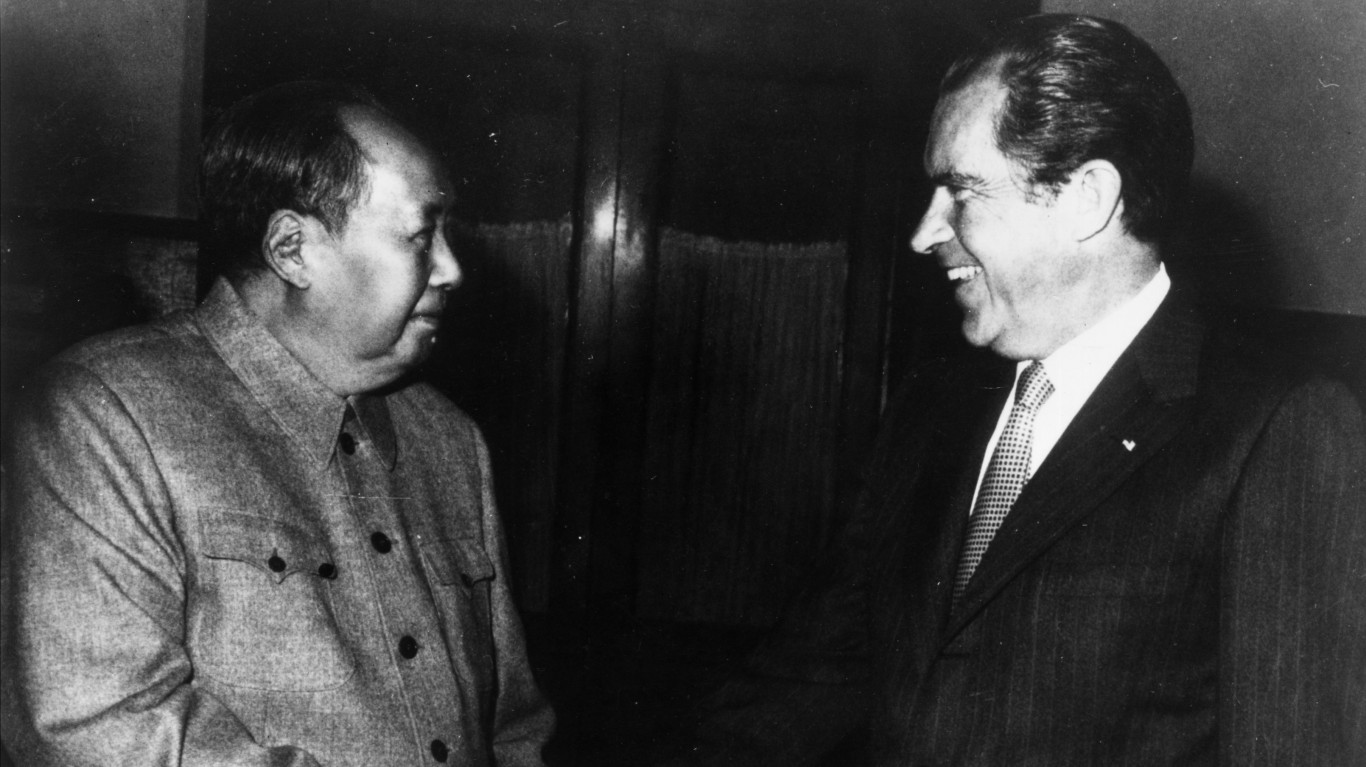
1972: Nixon Goes To China
> Date: Feb. 21
> Location: Beijing
President Richard Nixon, a virulent anti-communist earlier in his political career, surprises the American public by traveling to Beijing, China, for a week of talks in a historic first step toward normalizing relations between the United States and the People’s Republic of China. Until this trip, the United States and communist China were de facto enemies, fighting proxy wars in the Korean Peninsula in the 1950s and South Vietnam at the time of Nixon’s visit.

1973: Roe v. Wade
> Date: Jan. 22
> Location: Washington D.C.
In a landmark 7-2 decision that will be known as Roe v. Wade, the Supreme Court rules that under the Due Process Clause of the 14th Amendment, states cannot completely bar a woman’s decision to terminate her pregnancy. However, the court adds that as the pregnancy develops, the state can balance a woman’s right to privacy with its interest in preserving the “potentiality of human life.” As a result, states can ban abortion in the third trimester except in cases where a pregnancy affects a woman’s health.
[in-text-ad-2]
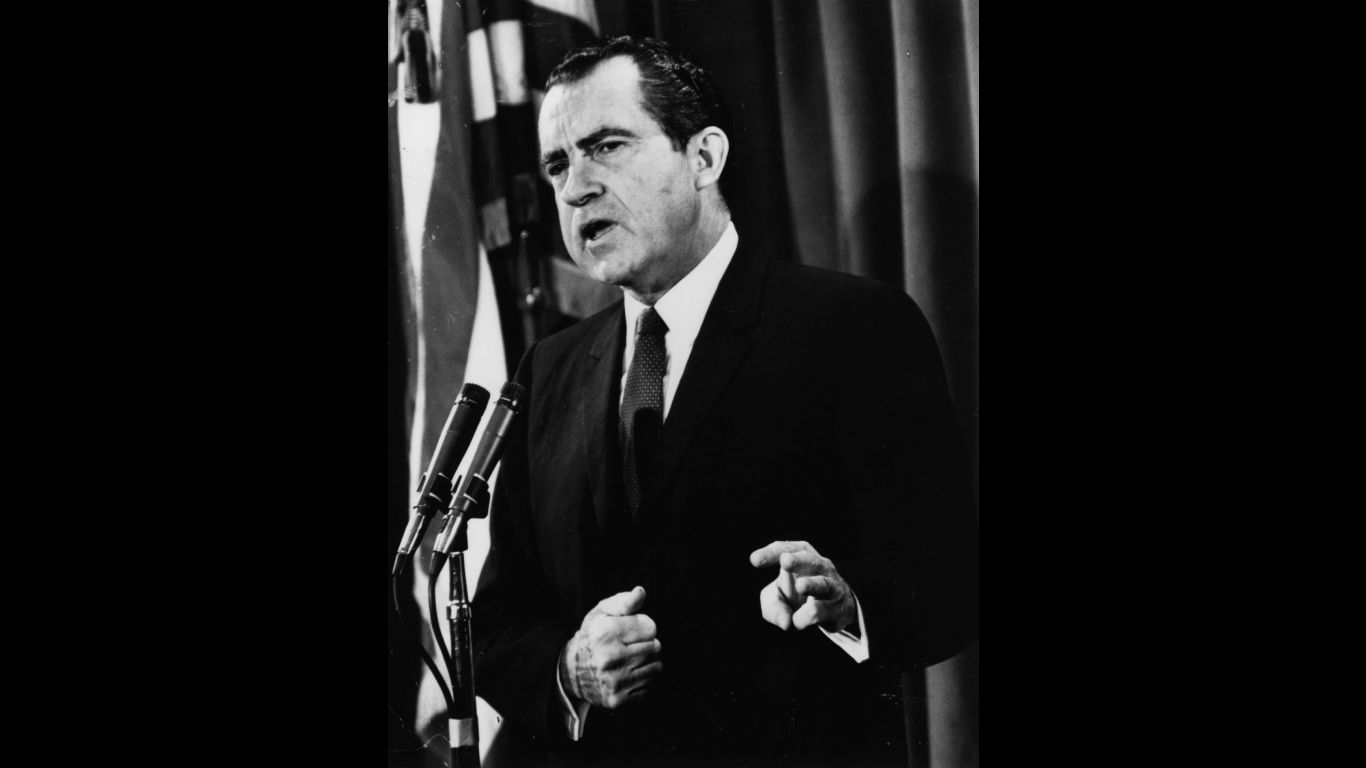
1974: Nixon Resigns Out
> Date: Aug. 8
> Location: Washington D.C.
President Richard Nixon announces his resignation amid impeachment proceedings stemming from the Watergate scandal and his administration’s attempt resist a congressional investigation. The scandal exposes abuses of power by the White House after five burglars were busted breaking in to the Democratic National Committee headquarters in the Watergate office complex in Washington, D.C. Nixon becomes the only president in U.S. history to resign.
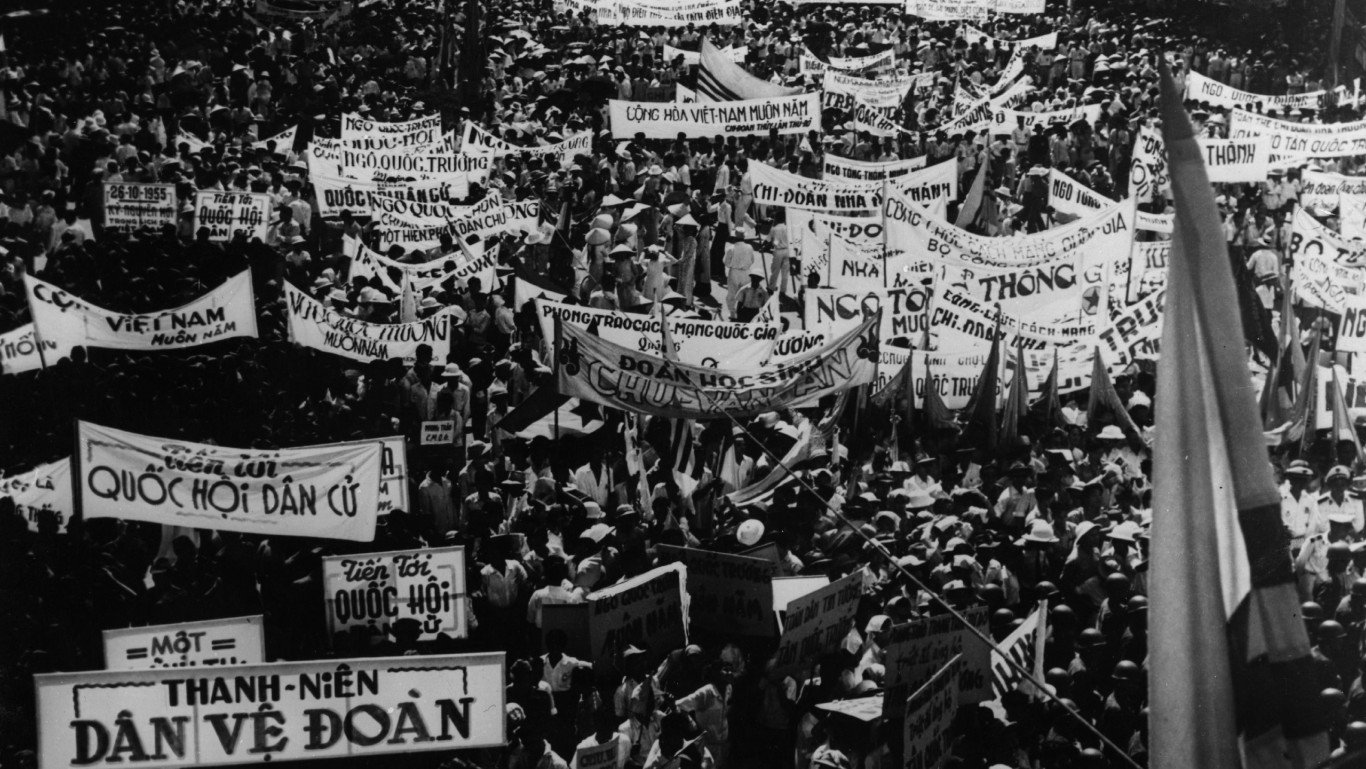
1975: Saigon Falls
> Date: April 30
> Location: South Vietnam
Two years after the last American troops leave Vietnam, communist troops from North Vietnam capture Saigon, ending nearly two decades of relentless war in the rice paddies and jungles of that Southeast Asian nation. The final tally of war dead for the United States is 58,202.
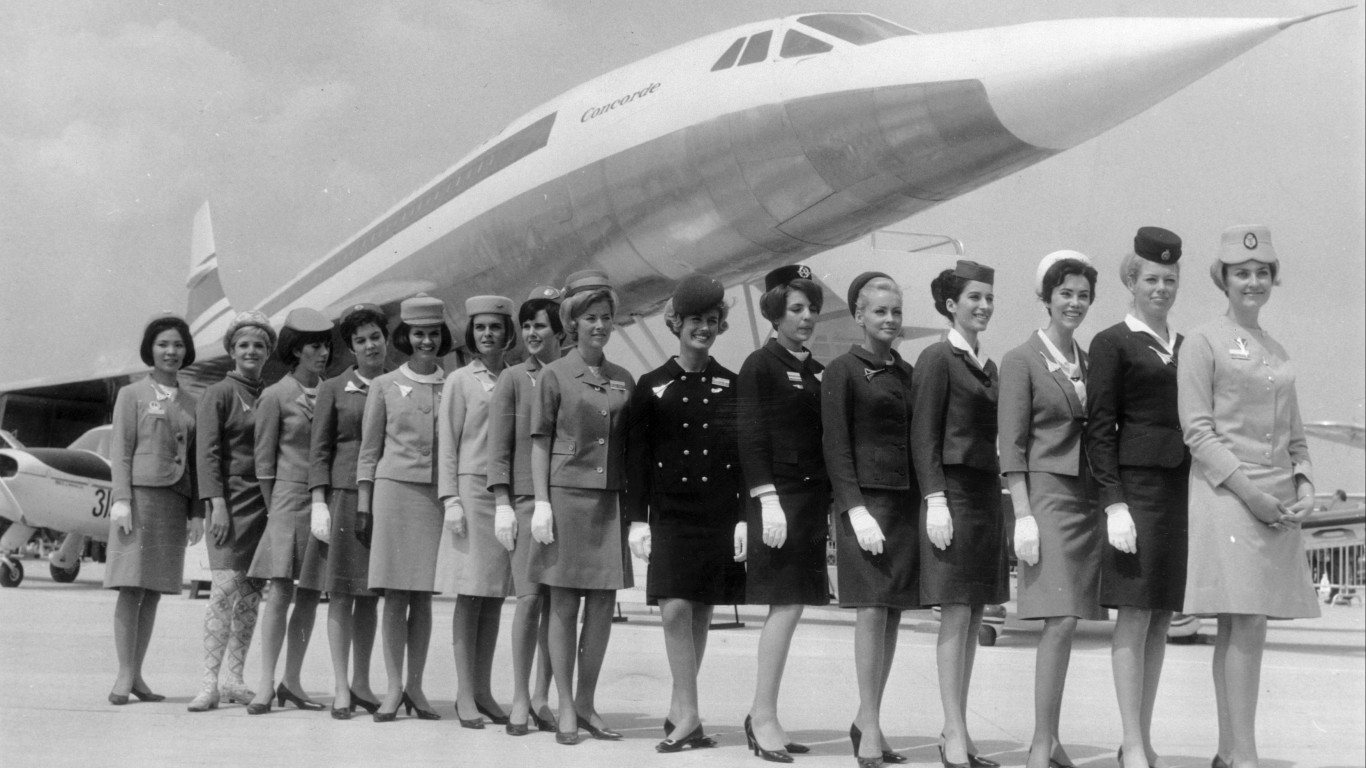
1976: The Concorde Changes Air Travel
> Date: Jan. 21
> Location: London and Paris
Two supersonic Concorde jets take off simultaneously — one from London to Bahrain, operated by British Airways, and the other from Paris to Rio de Janeiro via Dakar in Senegal, operated by Air France — marking the first time paying passengers enjoy commercial travel at faster than the speed of sound. Though travel by one of the 16 Concordes ever put into service could slash travel time from New York to London in half, the high cost of maintenance, soaring ticket prices, as well as a fatal accident in 2000, sealed the fate of the narrow, slope-nosed aircraft.

1977: Rise of the PC
> Date: Jan.uary
> Location: Chicago
Personal home computers began to emerge in the 1970s, but many of the earliest versions resembled calculators that would plug into televisions sets. By 1977, however, the desktop home computer begins to resemble their more modern versions – with an accompanying attached or separate computer screen and a magnetic tape or floppy disk storage device. The Commodore PET is unveiled at the Consumer Electronics Show in Chicago that year, while the first Apple II and Radio Shack’s TRS-80 go on sale.
[in-text-ad]
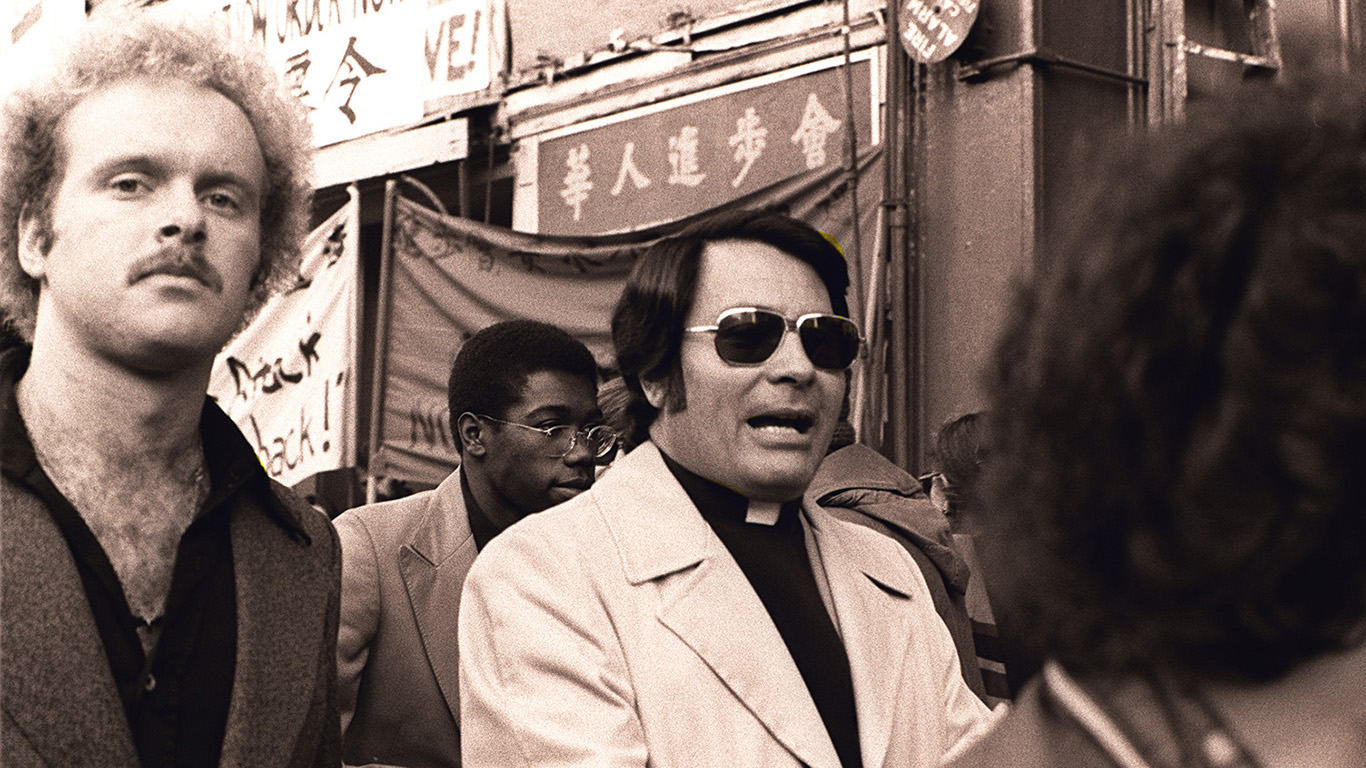
1978: Cult’s Mass Suicide
> Date: Nov. 18
> Location: Jonestown, Guyana
More than 900 people die in one of worst recorded acts of cult-related mass murder-suicide after most of the victims and perpetrators drink a powdered drink mix dosed with cyanide. Most of the victims are Americans, devotees of Peoples Temple cult leader Jim Jones, a former Methodist-trained preacher who built a following and led the flock to Guyana. Among the dead are 276 children who drink the poison. A small number of cult defectors are killed by Peoples Temple gunmen who also slay California congressman Leo Ryan, who had gone to Guyana to investigate Jonestown.
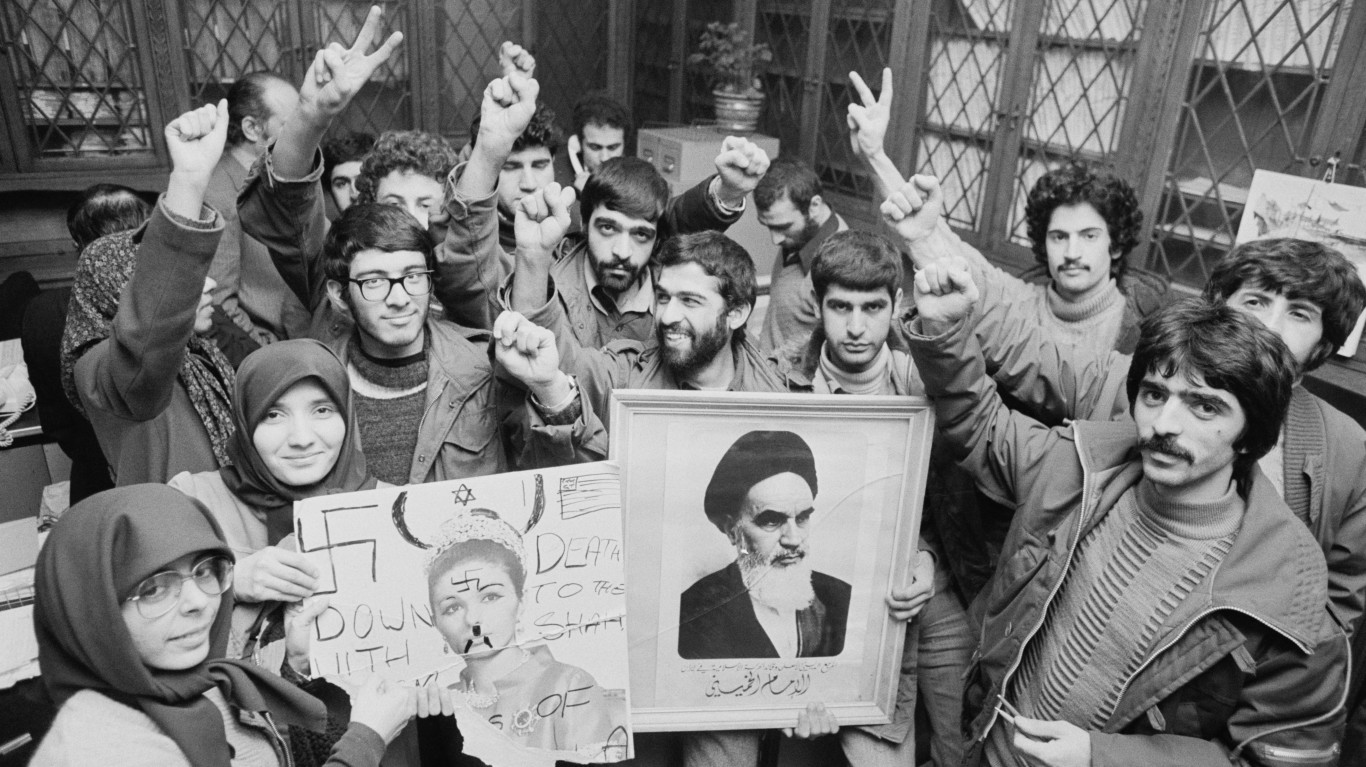
1979: Islamic Republic Born in Iran
> Date: Feb. 11
> Location: Tehran
Worsening economic conditions, increasing discontent with the government, and wide support for religious leader in exile Ayatollah Ruhollah Khomeini end the reign of Mohammad Reza Shah Pahlavi. The shah and his family flee Iran in January 1979. On Feb 11, the monarchy is dissolved, and on April 1, Khomeini declares Iran an Islamic republic. With support among the nation’s clergy and their many followers, he begins rebuilding Iranian society based on conservative Shiite religious principles.
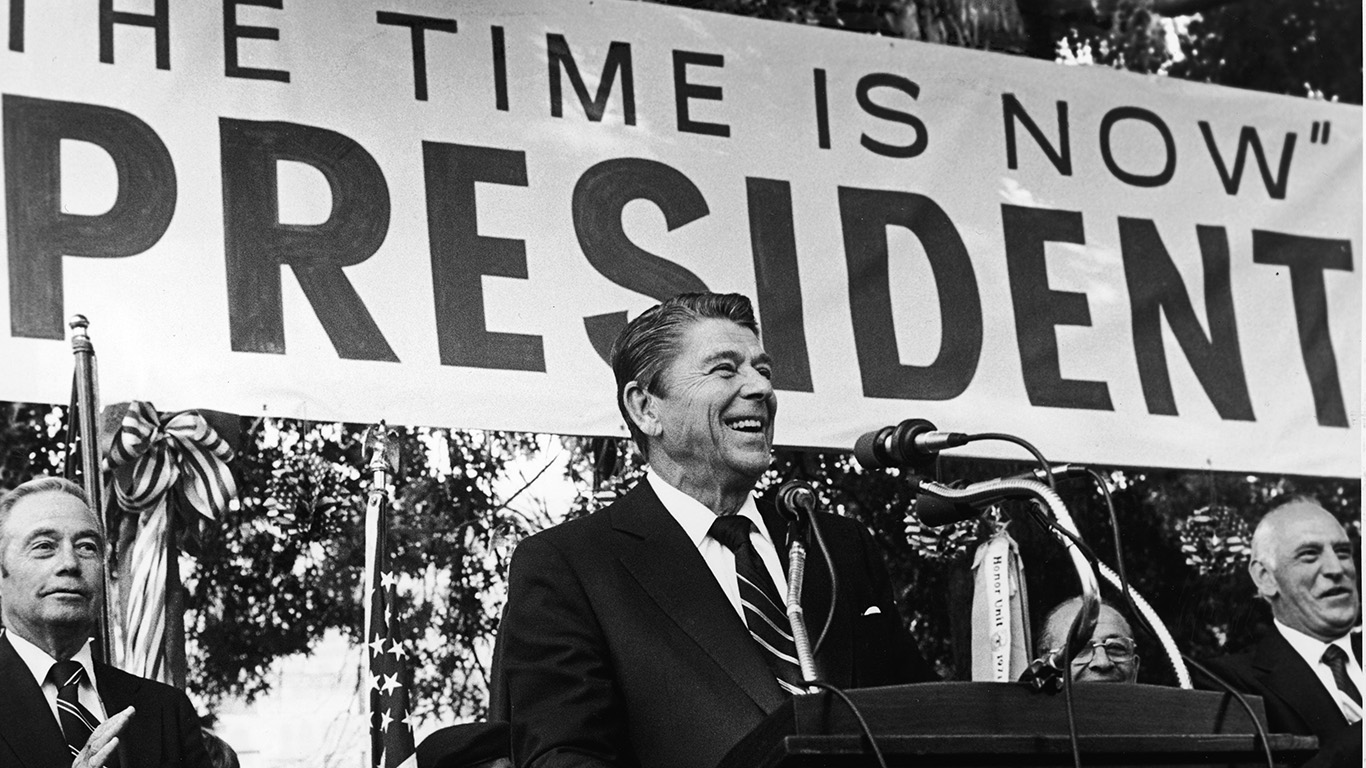
1980: Reagan Elected
> Date: Nov. 4
> Location: Washington, D.C.
With the United States in an economic malaise and the Iranian hostage crisis hobbling the presidency of Jimmy Carter, Ronald Reagan is elected the 40th president in a landslide. Reagan, who would serve two terms, was the oldest man elected president at the time. Reagan’s election changes the trajectory of American politics, ushering in an era of conservative leadership. During his tenure, he takes a more aggressive approach to the Soviet Union and increases defense spending. Reagan convinces Congress to cut taxes, a move that many economists credit with triggering an economic boom in the 1980s.

1981: AIDS Impacts America
> Date: June 5
> Location: Los Angeles
The U.S. Centers for Disease Control and Prevention publishes a report about five gay men who had been diagnosed by local physicians with a rare form of pneumonia — the first reported U.S. cases of what would later become known as HIV/AIDS. The autoimmune disease spread so fast that by the end of 1982, 500 Americans had died from what now the CDC called acquired immune deficiency syndrome, or AIDS. An estimated 35 million people worldwide would die from AIDS-related illnesses since the start of the epidemic.
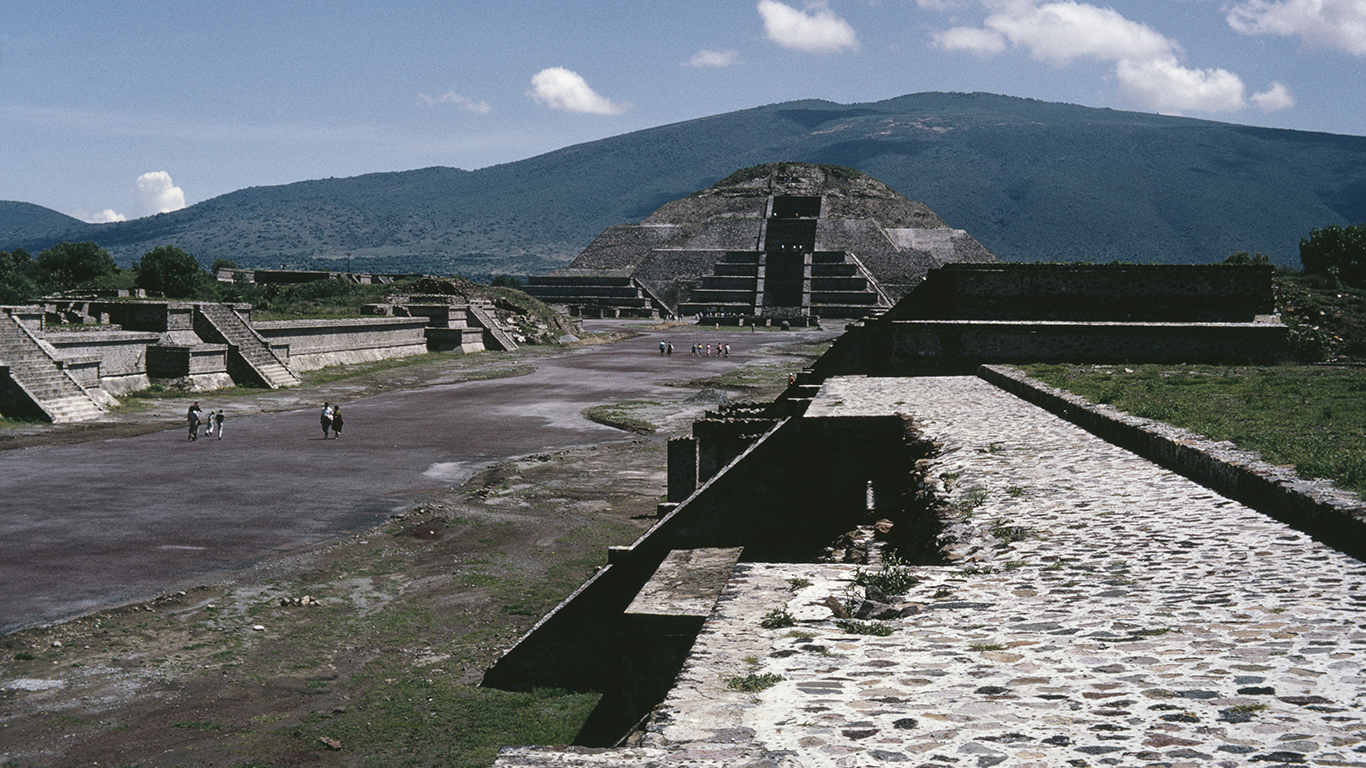
1982: Mexico Triggers Regional Debt Crisis
> Date: Aug 12
> Location: Mexico City
Global economic stagnation in the 1970s and early 1980s, and excessive borrowing among Latin America’s biggest economies, boils over when Mexico’s Finance Minister Jesús Silva-Herzog tells the U.S. Federal Reserve his country can no longer service its debt to $80 billion. After the announcement, lenders realize virtually every country in Latin America, led by Brazil, Argentina and Mexico, are not able to pay back loans. The crisis would lead to years of eroding wages, weak-to-negative economic growth, sky-high unemployment, severe austerity measures, and political instability — known as the “lost decade” in Latin America.

1983: The Internet is Born
> Date: Jan. 1
> Location: Multiple
The internet as we know it today – a seemingly endless collection of websites hosted on servers scattered across the globe – is still more than a decade away. But at the beginning of 1983, the the Advanced Research Projects Agency Network (ARPANET) — a small network for academics and researchers — transitions to the standard TCP/IP protocol of the World Wide Web. The protocol would become the internet’s cornerstone and technical foundation as it allows expanded available address space and decentralizes the network, thus also expanding accessibility.
[in-text-ad-2]

1984: Chemicals Kill Thousands in India
> Date: Dec. 2
> Location: Bhopal, India
The chemical disaster in Bhopal is still considered history’s worst industrial disaster. About 30 tons of methyl isocyanate, an industrial gas used to make pesticide, are released at a Union Carbide Corp. plant. About 600,000 poor residents of nearby shanty towns are exposed to a highly toxic compound that kills about 15,000 people and countless farm animals, according to Indian government estimates. The calamity leads to a generation of birth defects. To this day, locals claim the now-abandoned site is riddled with toxic materials left behind by Union Carbide, which was acquired by Dow Chemical in 2001.
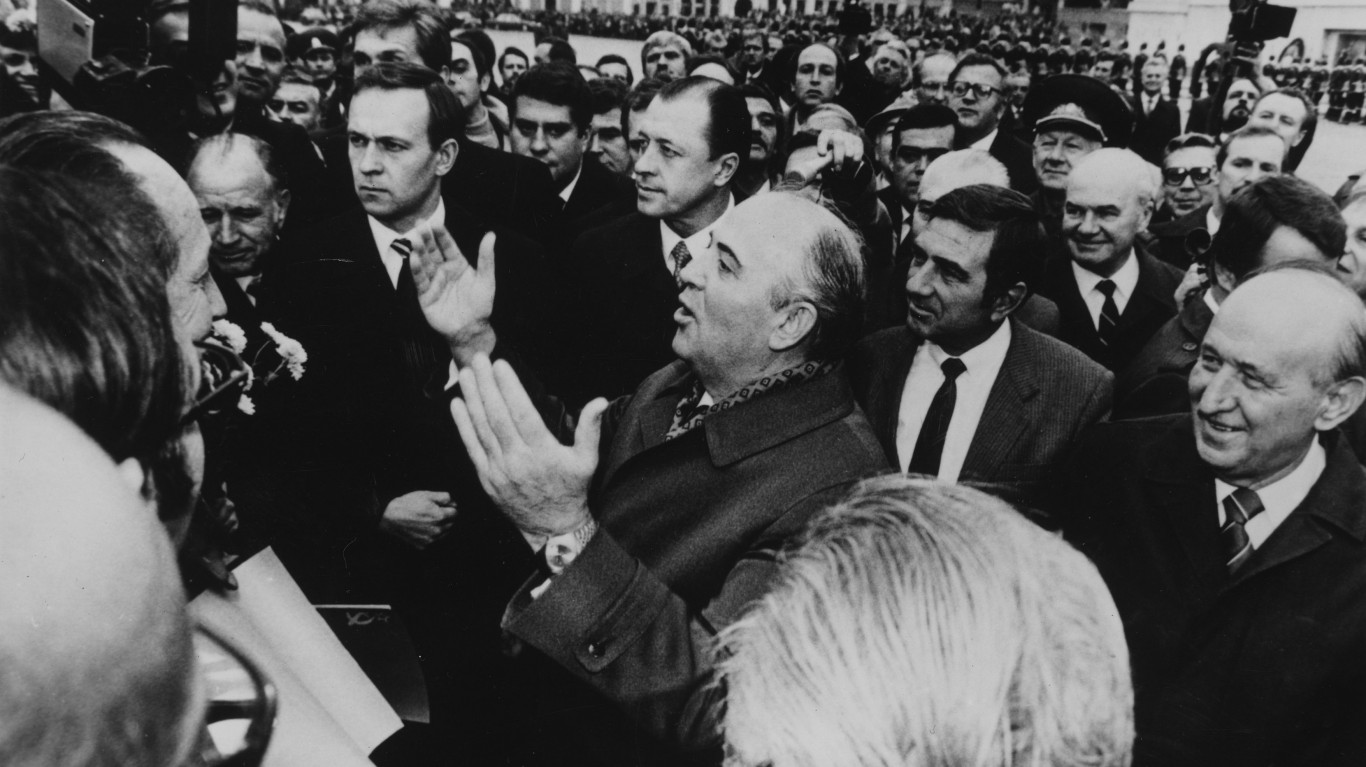
1985: Reagan, Gorbachev Meet
> Date: Nov. 19
> Location: Geneva
Despite his often bellicose criticisms of the Soviet Union, President Ronald Reagan agrees to meet with his counterpart, Soviet General Secretary Mikhail Gorbachev, in Geneva in the first meeting between leaders of the two Cold War foes in nearly a decade. Though the meeting yields little of substance, it starts a closer relationship between the two men who both seem committed to scaling back the nuclear arms race between the two nuclear superpowers.
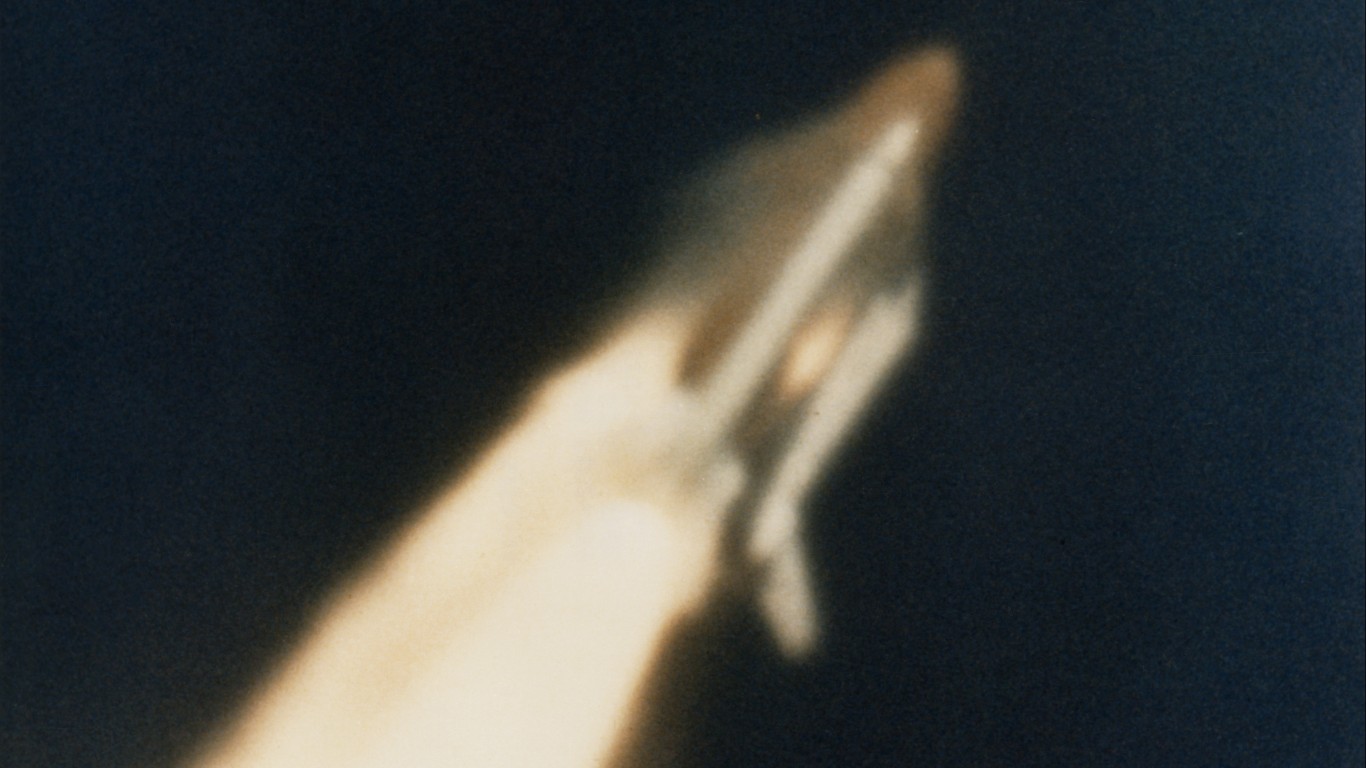
1986: Shuttle Tragedy
> Date: Jan. 28
> Location: Off the coast of Florida
The 25th mission of the U.S. space shuttle program ends with the tragic loss of seven astronauts as space shuttle Challenger exploded 73 seconds after takeoff from Cape Canaveral, Florida. Among those killed are Christa McAuliffe, who would have been the first teacher in space. The failure is later identified as a problem with the so-called O-rings used to form a seal in the seams of the shuttle’s external fuel tanks.
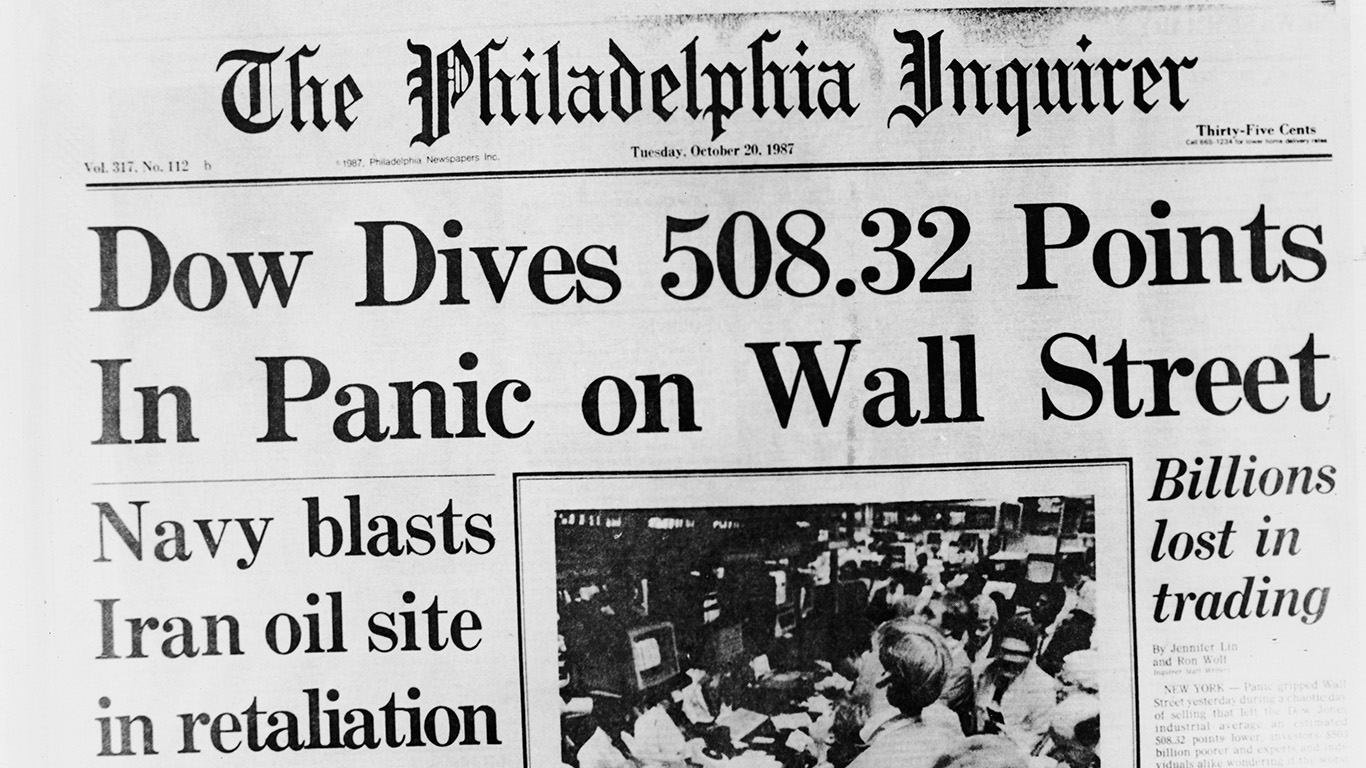
1987: Stock Market Tanks
> Date: Oct. 19
> Location: Worldwide
Oct. 19, 1987 is called Black Monday because on that day the Dow Jones Industrial Average plunges 508 points, or more than 22%. The drop is worse than the crash in 1929. It is also worse than the market plunge after the 9-11 terrorist attacks and the 2008 financial crisis. Among the reasons cited for the drop are rising tensions in the Persian Gulf, concern over higher interest rates, and the belief that the bull market is ending. Computerized trading, relatively new at the time, accelerates trade orders, which speeds up the market drop. As a result of the collapse, exchanges put in place so-called circuit breakers intended to halt trading when stocks fall too fast. This measure is designed to provide investors a cooling off period and avoid a panic.
[in-text-ad]
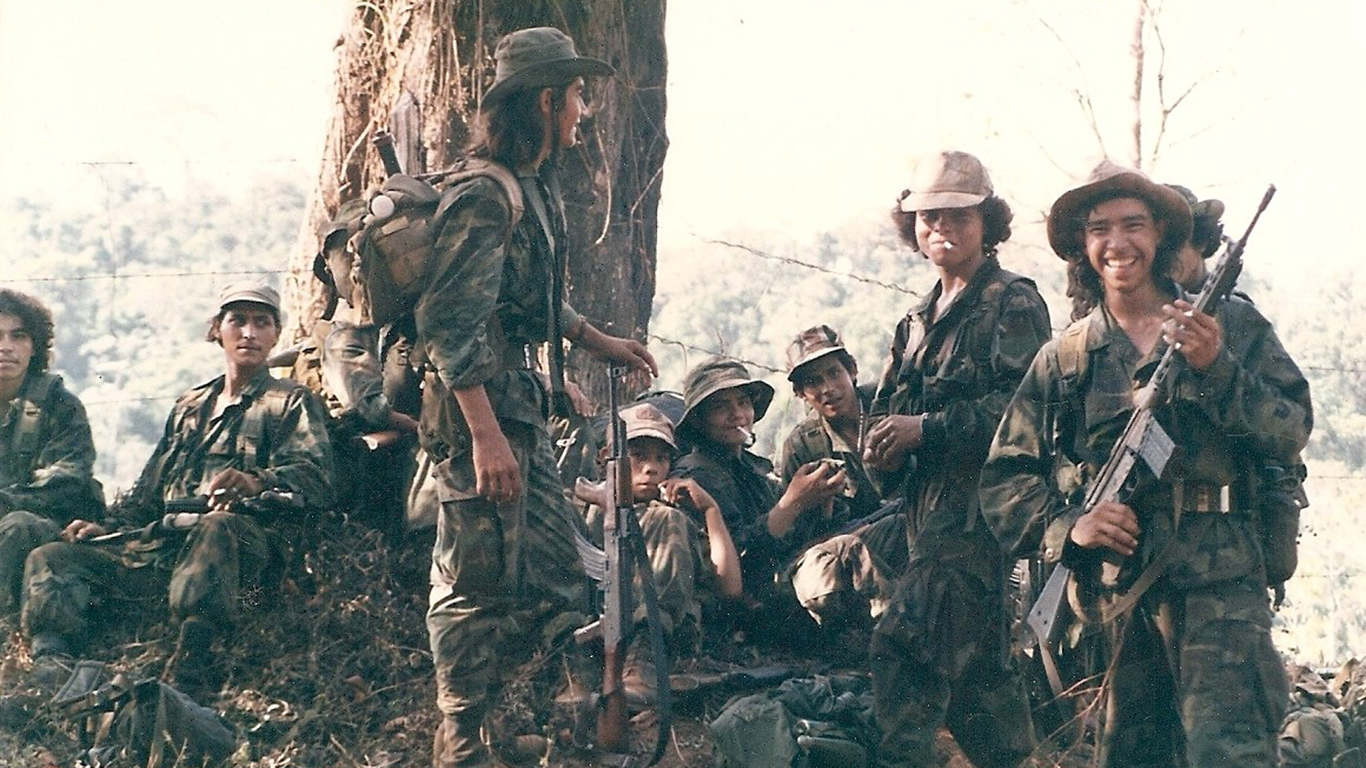
1988: When the U.S. Armed Iran
> Date: March 16
> Location: Washington D.C.
Lt. Col. Oliver North and Vice Adm. John Poindexter are indicted on charges of conspiracy to defraud the United States for their involvement in the so-called Iran-Contra affair. The scandal involved members of the Reagan administration who illegally sold arms to Iran to help facilitate the release of American hostages, and then transfer the proceeds of the sale to fund the Nicaraguan contras, a loose affiliation of right-wing militias. North is convicted, but his conviction is vacated and reversed, while Poindexter’s convictions are also reversed on appeal.
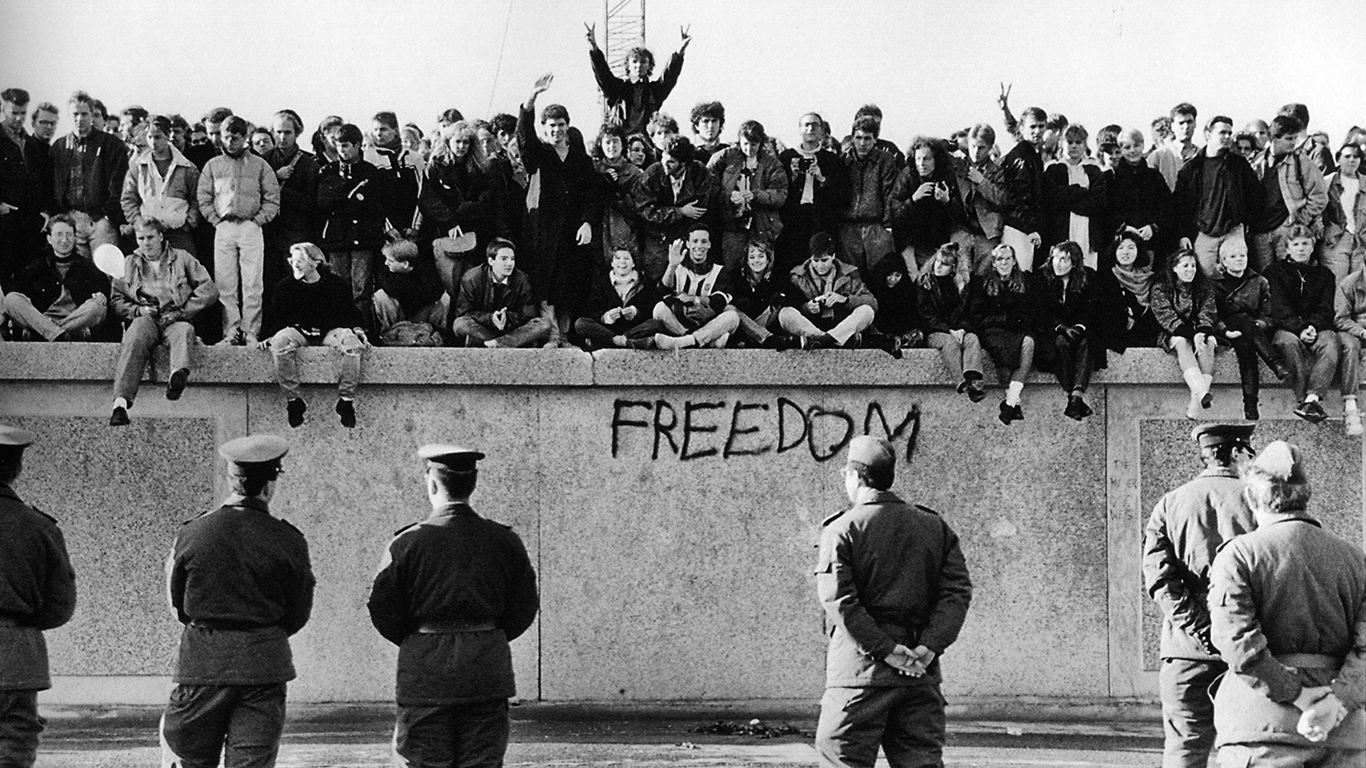
1989: The Berlin Wall Falls
> Date: Nov. 9
> Location: Berlin, East and West Germany
Cracks in the monolithic Soviet bloc are starting to appear in the 1980s, and the very symbol of communist repression comes crashing down in November, when the Berlin Wall is breached, ending a 28-year division of the city. During the day on Nov. 9, a spokesman for East Berlin’s Communist Party says starting at midnight that day, citizens of East Germany are free to cross the country’s borders. Almost immediately Berliners start slamming the wall with axes and sledgehammers. By nightfall, the celebration turns into what one observer calls “the greatest street party in the history of the world” and the city is reunited. East and West Germany would reunite one year later.
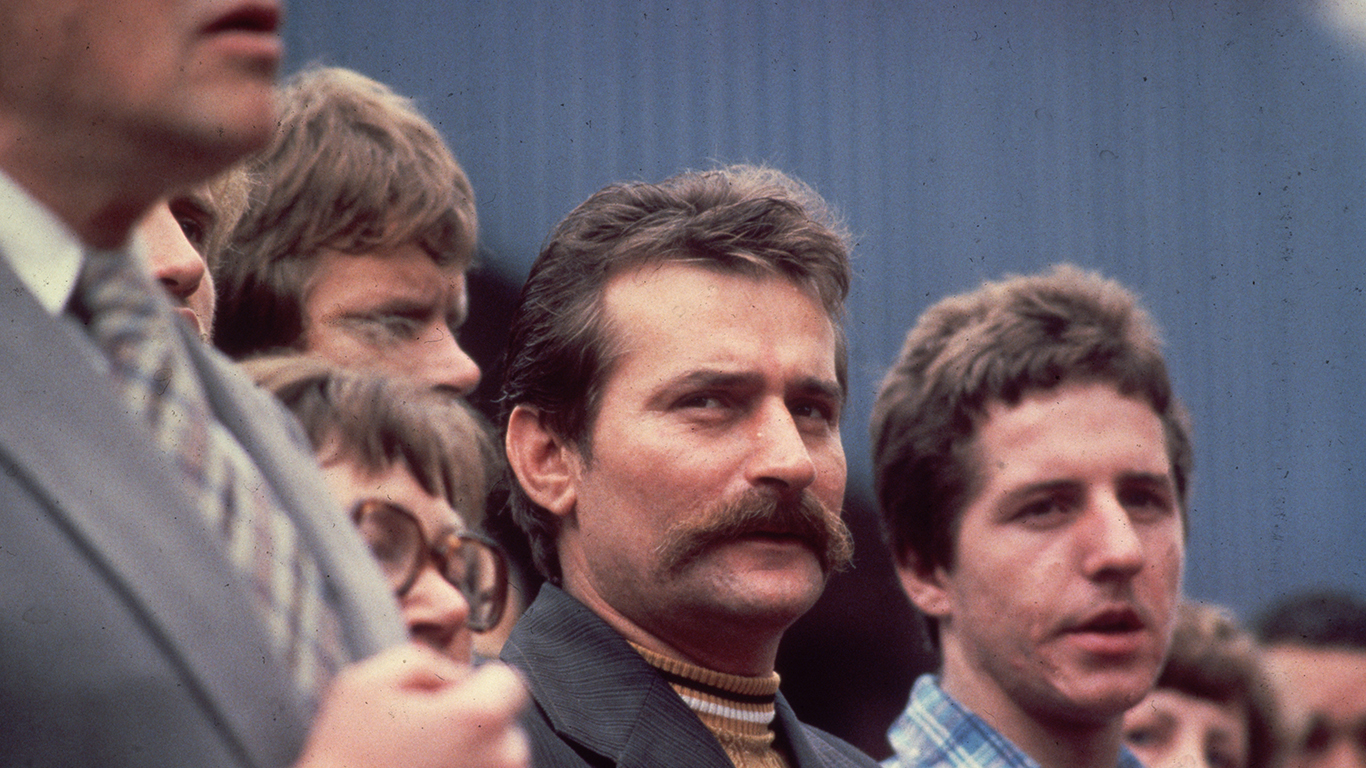
1990: Democracy in Poland
> Date: Jan. 28
> Location: Poland
With the hold of the Soviet Union and communism on East Europe loosening, Poland’s ruling communist party votes to dissolve and become more moderate. In the following elections, Lech Wałęsa, leader of the Solidarity Movement and the 1983 Nobel Peace Prize laureate, wins the election and becomes president.

1991: American Goes to War in Middle East
> Date: Jan. 17
> Location: Saudi Arabia and Kuwait
After Saddam Hussein’s Iraq invades and occupies Kuwait on Aug. 2, 1990, the United States sends forces to defend neighboring Saudi Arabia from being overrun and to protect its vital oil assets in Operation Desert Shield. With Saudi Arabia secured, U.S. implements Operation Desert Storm to push Iraqi forces back across the border with Kuwait in a military operation that lasts until a ceasefire takes effect in April.
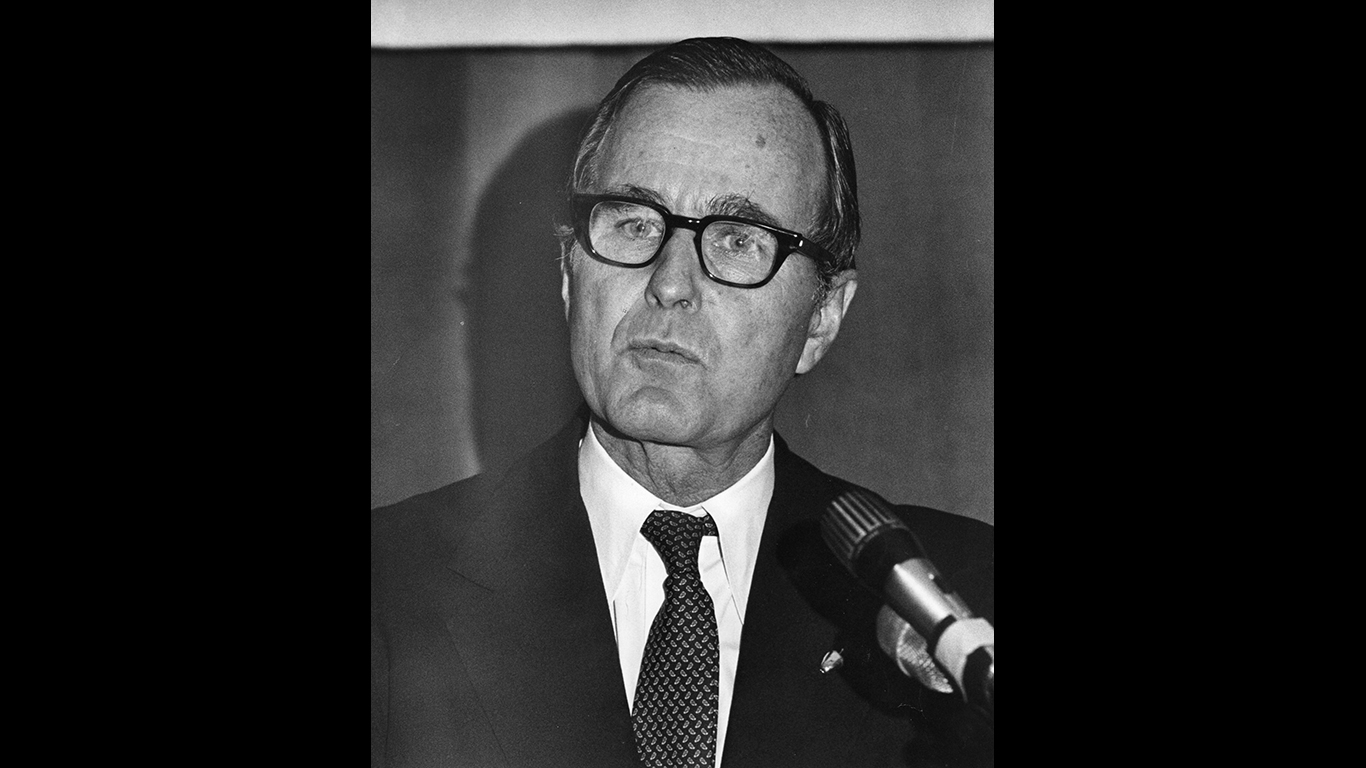
1992: Cold War Ends
> Date: Feb. 1
> Location: Camp David Maryland
Just weeks after the dissolution of the Soviet Union on Dec. 26, 1991, U.S. President George H.W. Bush and his Russian counterpart, Boris Yeltsin, meet at Camp David to formally declare the end of the Cold War that began shortly after the end of World War II. The meeting comes days after both countries announce they would stop aiming nuclear missiles at each other. Russia declares its 11 former communist satellite republics – from Armenia to Uzbekistan – independent.

1993: The EU Becomes Reality
> Date: Nov. 1
> Location: Brussels
The Treaty of the European Union, also known as the Maastricht Treaty, goes into effect in November, after a rough series of political wrangling that, among other concessions, allows the U.K. and Denmark to opt out of the common euro currency. The treaty opens the way to removing border controls among member states and invites new members to join the union.
[in-text-ad-2]

1994: Amazon.com is Born
> Date: July 5
> Location: Seattle
With an initial aim of becoming an online bookstore, Jeff Bezos and a handful of angel investors launch Amazon.com, just as e-commerce is about to take off. In 2020, after expanding from books to the so-called “Everything Store” and growing a business selling cloud services to companies like Netflix and Instagram, Bezos would be the world’s richest man.

1995: Domestic Terror Strikes Oklahoma
> Date: April 19
> Location: Oklahoma City
In the deadliest domestic terrorist attack in U.S. history, anti-government radicals Timothy McVeigh and Terry Nichols bomb the Alfred P. Murrah Federal Building in Oklahoma City. They time the truck-bomb attack for a weekday morning in order to maximize casualties. For the murder of at least 168 people, including 19 children who were in a childcare center in the building, and the injury of hundreds of others, an unremorseful McVeigh is executed by lethal injection on June 11, 2001. Nichols is serving a life sentence without the possibility of parole.
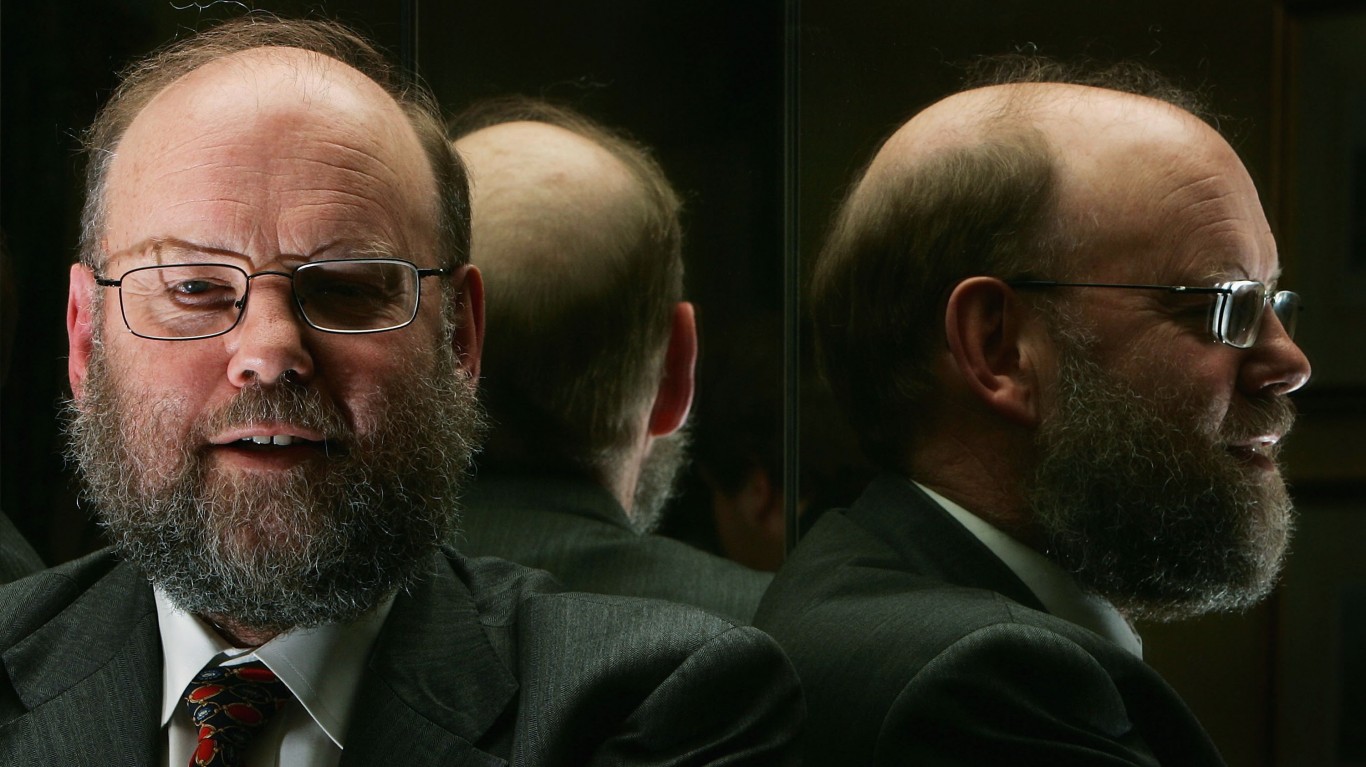
1996: The Dawn of Cloning
> Date: July 5
> Location: Midlothian, Scotland, U.K.
Dolly the Sheep enters the annals of bioengineering when scientists at Scotland’s Roslin Institute become the first to not only successfully clone a mammal, but also the first to do so using an adult cell rather than an embryonic one. After 277 so-called cell fusions that created 29 embryos, the teams managed to turn an udder cell into a nearly complete biological carbon copy of the sheep from which it came.
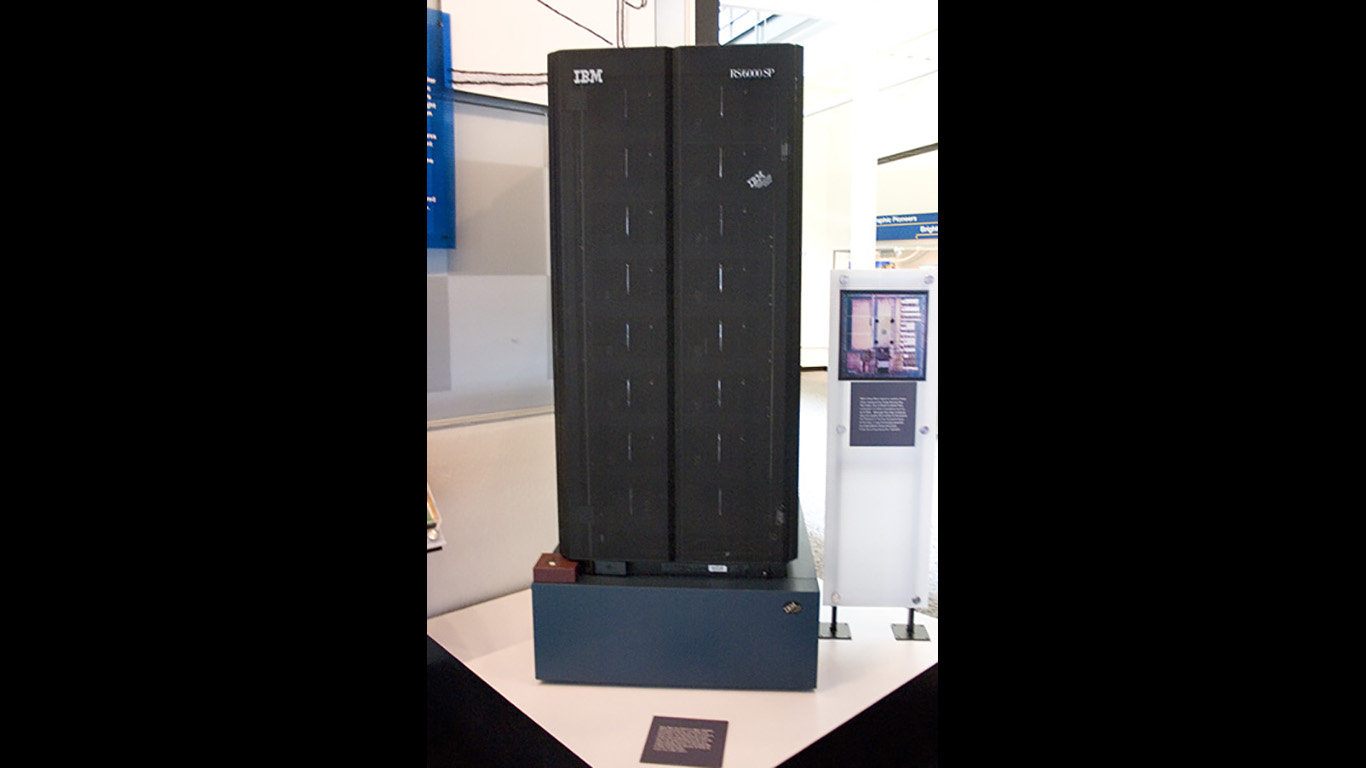
1997: Machine Tops Chess Champ
> Date: May 11
> Location: New York City
Artificial intelligence and machine learning have been serious areas of study (and hype) for over 60 years. In 1997, one of the most significant victories for silicon logic came when IBM’s Deep Blue became the first machine to beat a world chess champion. The the refrigerator-sized computer beat Garry Kasparov twice and tied him three times in a six-game match.
[in-text-ad]
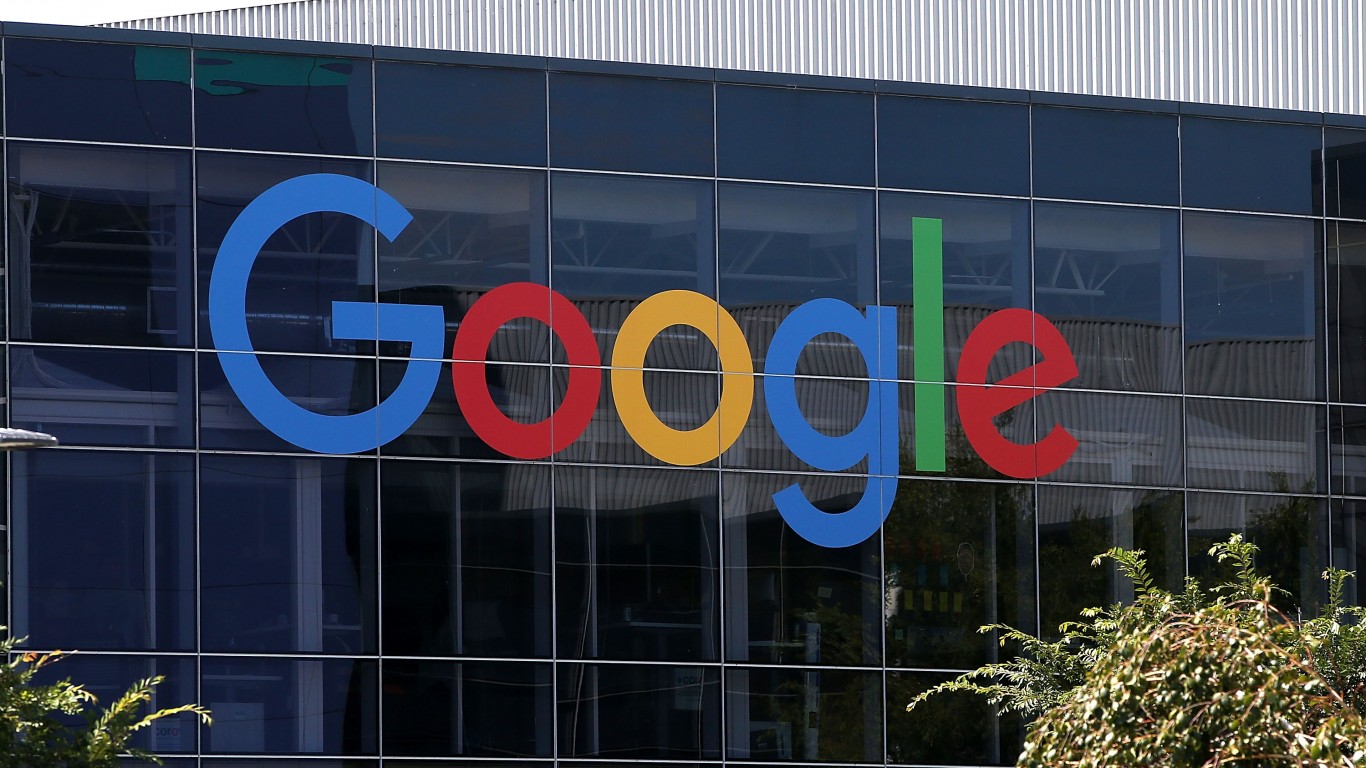
1998: The Age of Google Begins
> Date: Sept. 4
> Location: Menlo Park, California
With seed money from Sun Microsystems co-founder Andy Bechtolsheim and Amazon founder Jeff Bezos, among others, Stanford University Ph.D. students Larry Page and Sergey Brin launch the search engine Google. The digital advertising behemoth Google Inc., now Alphabet Inc., is a $1.104 trillion company with several subsidiaries, including video-sharing platform YouTube; autonomous-car development company Waymo; and X, the company’s research and development division.
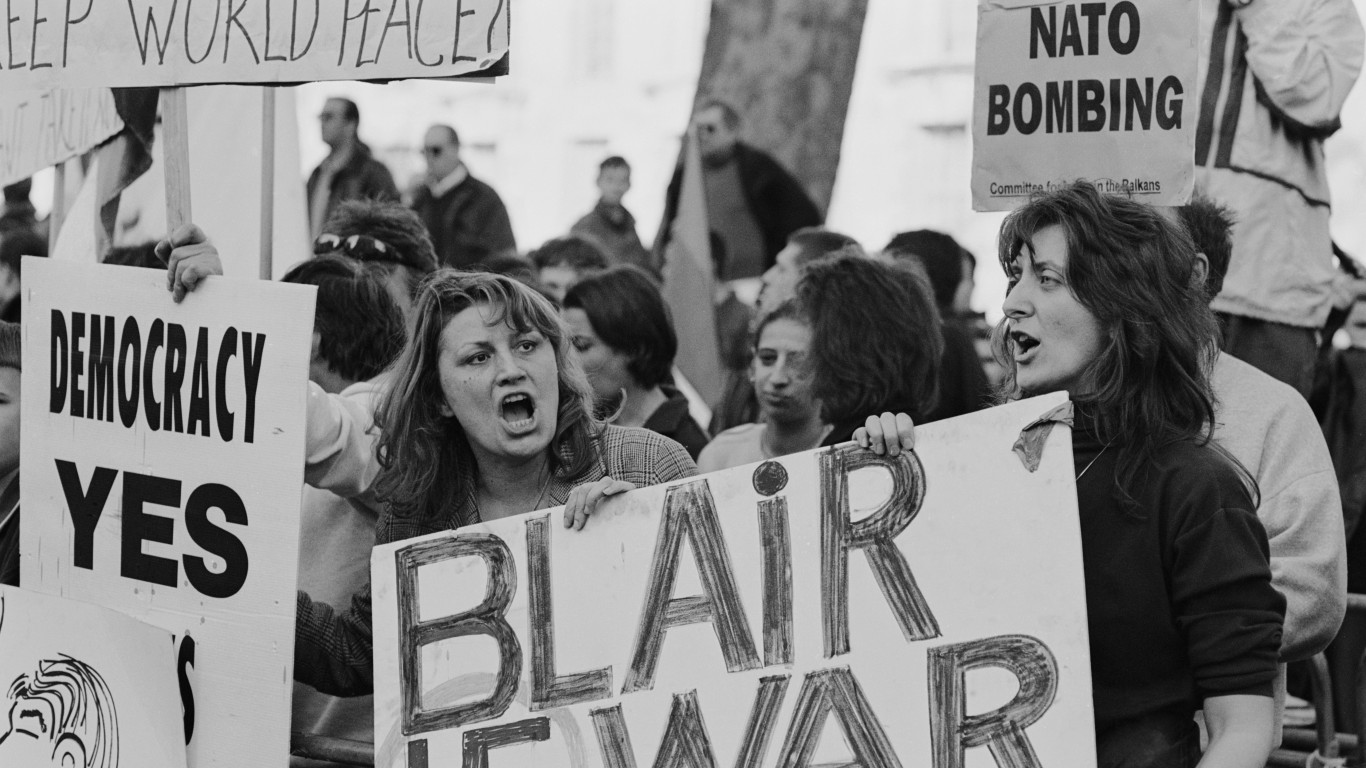
1999: NATO’s First Independent Strike
> Date: March 24
> Location: Federal Republic of Yugoslavia
In order to expel Serbian forces from Kosovo during the Kosovo War, NATO forces initiate their first-ever military campaign against the Federal Republic of Yugoslavia (now Montenegro and Serbia) without U.N. Security Council authorization as Russia and China oppose the attack. The NATO air strikes are aimed at stopping an onslaught against ethnic Albanians by the government of Slobodan Milošević. The NATO attacks last nearly three months, culminating in the withdrawal of Yugoslav forces from Kosovo.
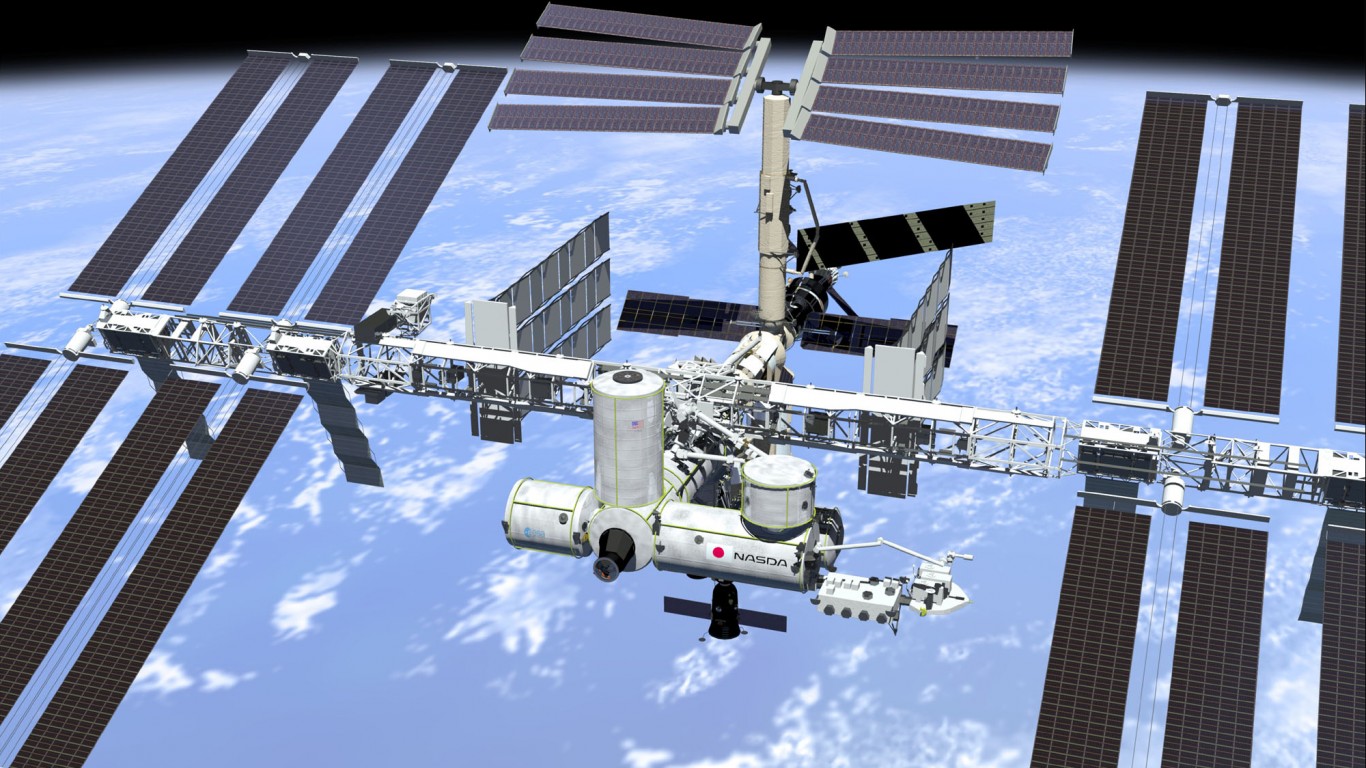
2000: International Space Station Opens
> Date: Nov. 2
> Location: Low earth orbit
Commanders Bill Shepherd from the United States and Yuri Gidzenko of Russia, along with Russian flight engineer Sergei Krikalev become the first temporary residents of the International Space Station two years after the first component of the research center was put into low-Earth orbit about 250 miles above sea level. Since that first crew, there have been 229 other visitors to the ISS,some of them multiple times, led by 146 from the United States and 47 from Russia.
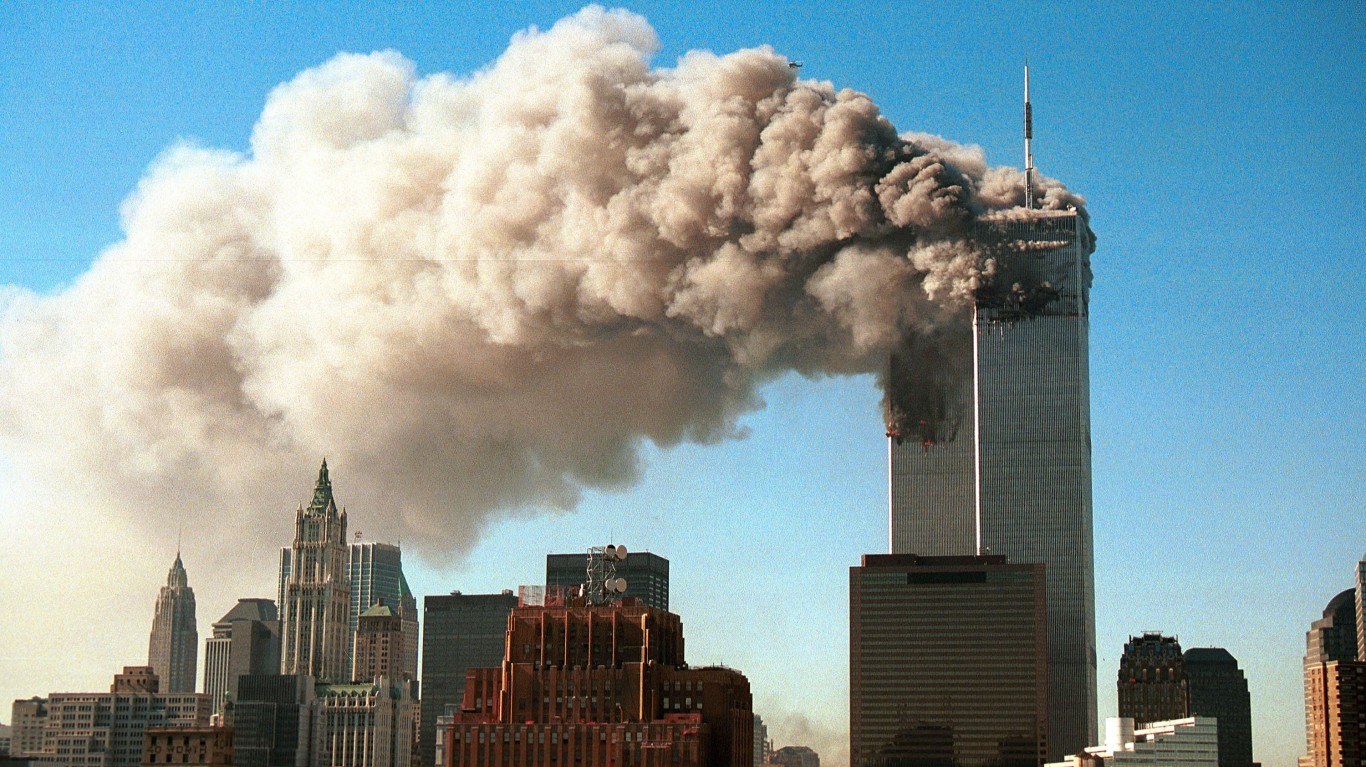
2001: 9/11
> Date: Sept. 11
> Location: Multiple
In the worst attack on U.S. soil since the Japanese bombed Pearl Harbor in 1941, 19 hijackers inspired by Islamist extremism kill nearly 3,000 people after crashing three passenger-laden commercial aircraft into the World Trade Center towers in lower Manhattan and the Pentagon in Arlington, Virginia. A fourth plane, United Airlines 93, crashes in Somerset County, Pennsylvania, after passengers and crew attempt to regain control of the plane headed Washington D.C.
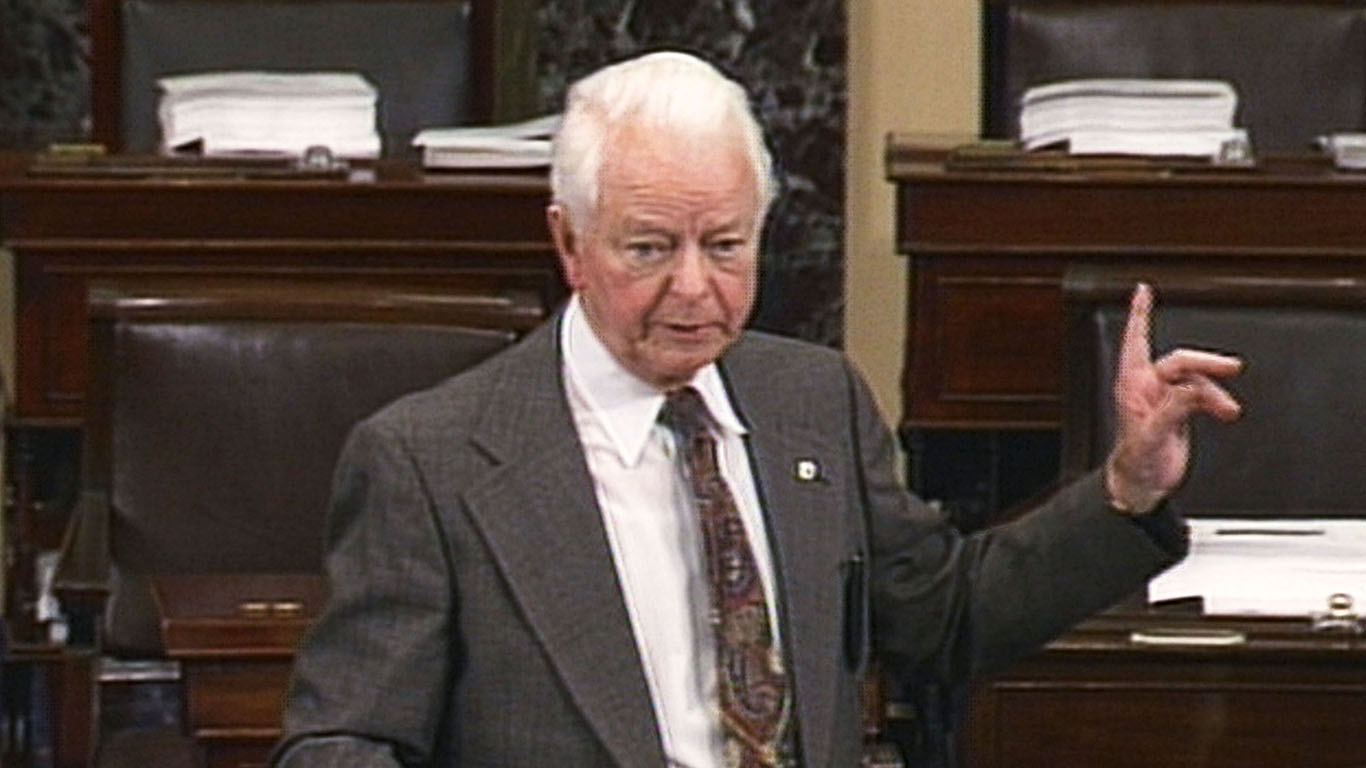
2002: Homeland Security
> Date: Nov. 25
> Location: Washington D.C.
Following the Sept. 11, 2001, terrorist attacks, the U.S. Congress and President George W. Bush enact the Homeland Security Act, the biggest government reorganization of national security efforts since the Department of Defense was created in 1947. The sweeping legislation creates the massive Department of Homeland Security, which is responsible for everything from protecting infrastructure from cyber-attacks to managing the new U.S. Immigration and Customs Enforcement (ICE) agency.

2003: US Crushes Iraq
> Date: March 19
> Location: Iraq
With the help of British and other allied forces, the United States begins its invasion of Iraq with a rapid bombing “Shock and Awe” campaign with the intention of destroying Iraq’s alleged weapons of mass destruction; the weapons are never found. Coalition forces manage to quickly topple the Iraqi regime of Saddam Hussein, but have to fight insurgent forces for years afterward.
[in-text-ad-2]

2004: Facebook Founded
> Date: Feb. 4
> Location: Cambridge, Massachusetts
Mark Zuckerberg, a 23-year-old Harvard University student, creates “The facebook,” a local social networking site named after the orientation materials that profiles students and faculty and given to incoming college freshmen. Sixteen years later, Facebook has become an $843.6 billion digital advertising behemoth so integral to many people’s lives that it has been criticized for helping foreign powers and propagandists influence the U.S. political system.
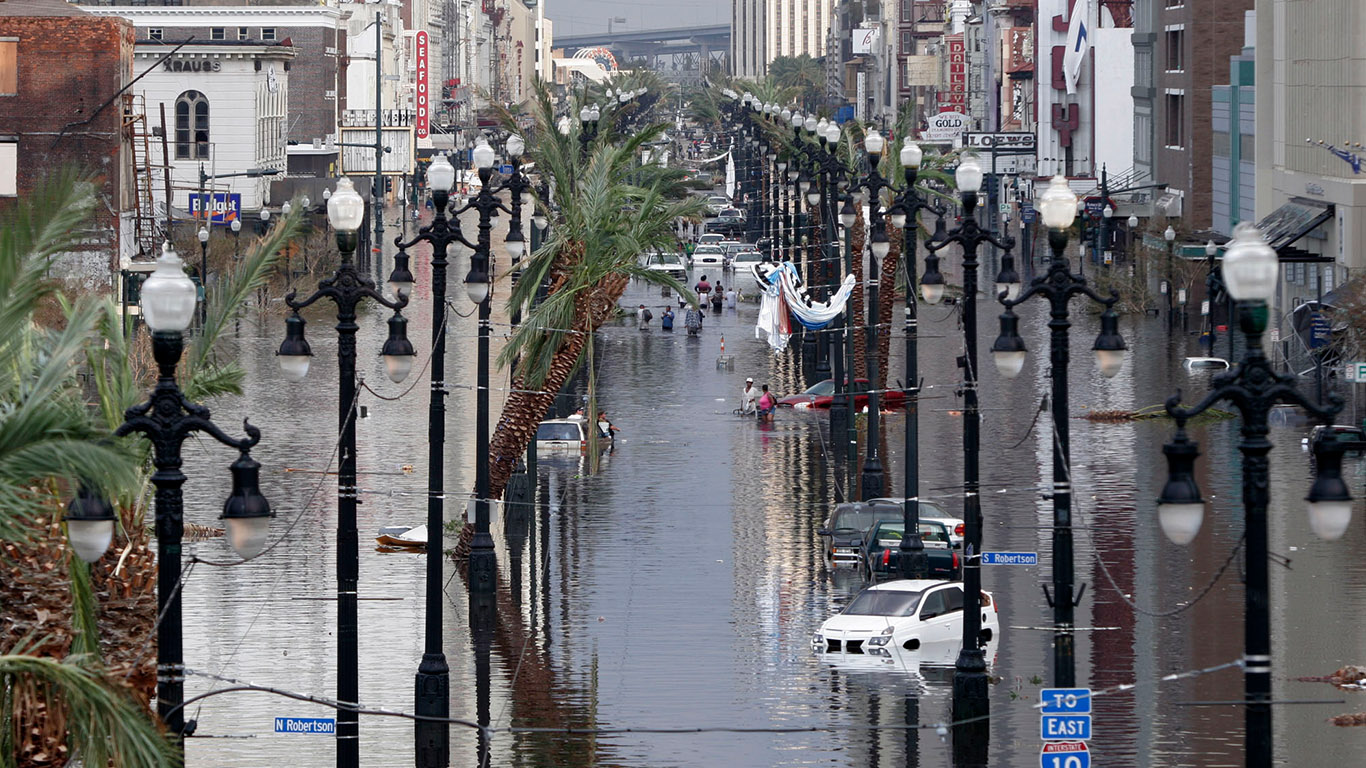
2005: Katrina Overwhelms New Orleans
> Date: Aug. 29
> Location: U.S. Gulf Coast
After spending four days in the Gulf of Mexico bulking up to a category 5 hurricane, Katrina slams into New Orleans, inundating the city and creating a humanitarian crisis that lasts for weeks. The catastrophe underscores the precarious situation not only in the Big Easy, but also the surrounding area of the Gulf Coast. At least 1,833 people in the storm’s path are killed, and the storm inflicts $161 billion in damages to the region, the costliest storm in U.S. history.
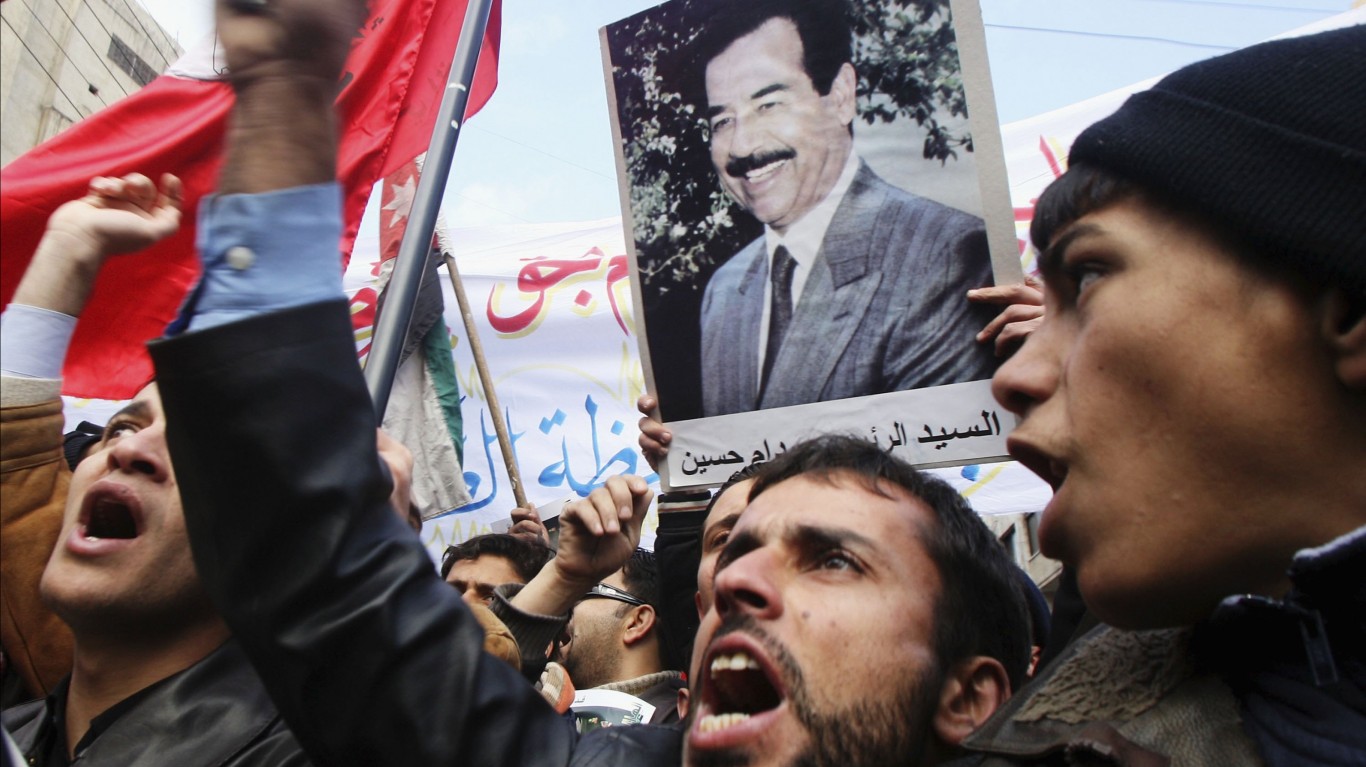
2006: Hussein Executed
> Date: Dec. 30
> Location: Baghdad
Three years after U.S. soldiers pulled him from a hole in the ground where he had been hiding, Iraqi dictator Saddam Hussein is hanged after he was convicted for crimes against humanity, specifically for ordering the massacre of 148 Shiites in 1982 following a failed assassination attempt against him.
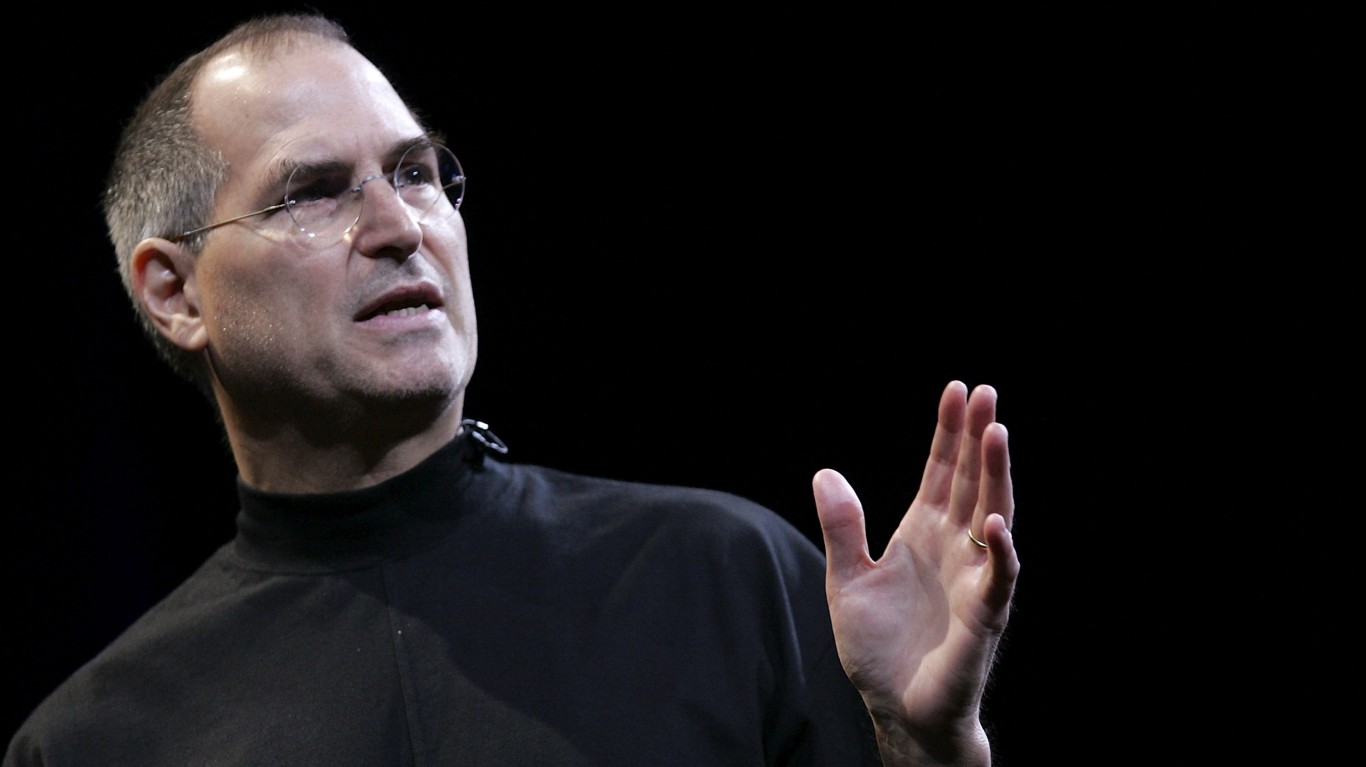
2007: The iPhone
> Date: Jan. 9
> Location: San Francisco
Apple CEO Steve Jobs, who died in October 2011, first shows the world one of the most popular branded consumer electronic devices in history, the iPhone. Since the first generation phone that Jobs introduced at the Consumer Electronics Show that year, there have been 18 versions of the mobile device, and more than 1.2 billion units have been sold globally through 2017. Only Samsung’s Galaxy smartphone comes close to that volume.
[in-text-ad]

2008: Dow Plunges
> Date: Sept. 29
> Location: New York City
The Dow Jones Industrial Average records an intraday drop of 777.68 points after Congress rejects a massive $700 billion bailout of U.S. banks. The bill would pass days later. The market reacts also to months of global market turmoil amid the 2008 global financial crisis spurred by the U.S. subprime mortgage market crash. The Dow fell by more than half during the 2007-09 Great Recession, tumbling from 14,164 on Oct. 9, 2007 to 6,594 on March 5, 2009.
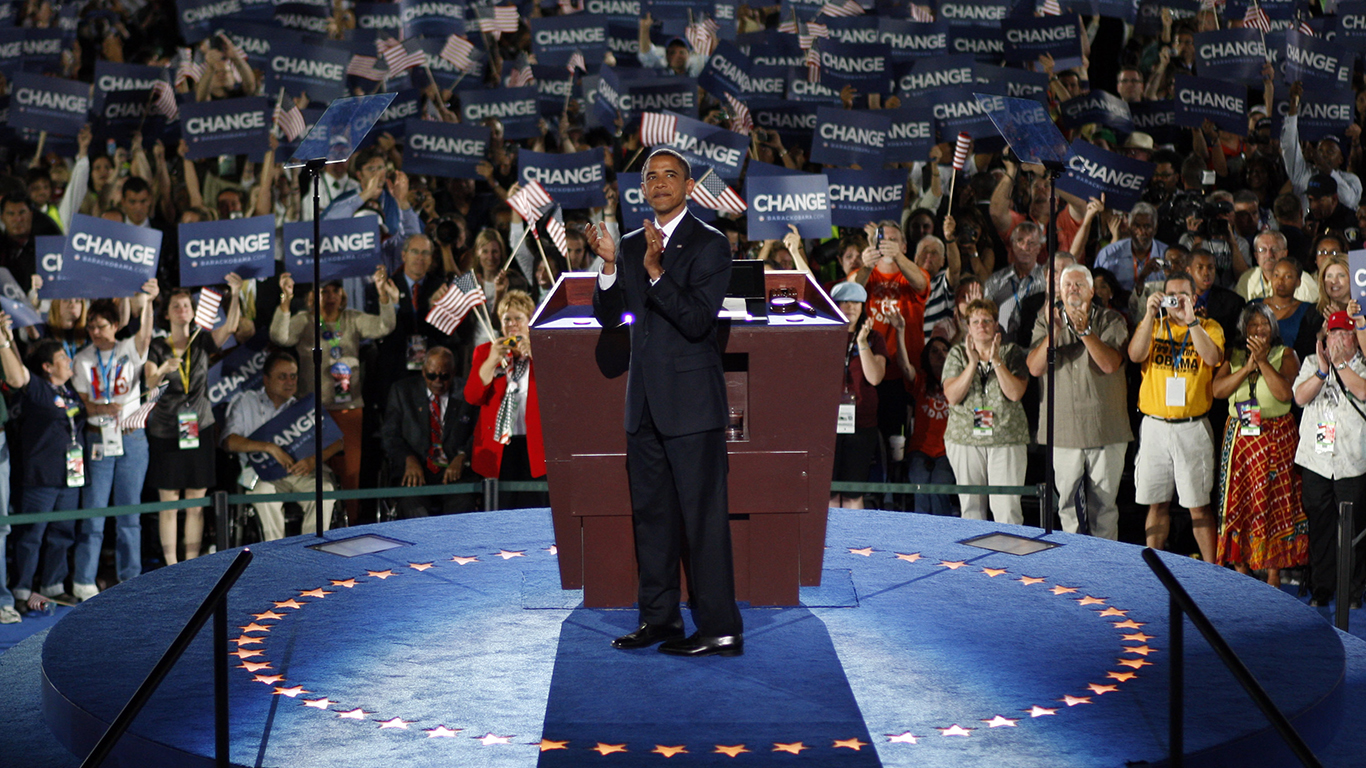
2009: America’s First African American President
> Date: Jan. 20
> Location: Washington D.C.
After defeating Republican Sen. John McCain of Arizona by amassing 365 electoral votes and 53% of the popular vote, Barack Obama is sworn in as the first African American president of the United States. Obama inherits the worst economic crisis since the Great Depression, but with his party holding majorities in both houses of Congress at the time, the president is able to pass a stimulus package and his signature Affordable Care Act in March 2010.

2010: Catastrophic Oil Spill
> Date: April 20
> Location: Gulf of Mexico, Louisiana
Eleven workers die and 17 are injured after an explosion and fire erupts on the Deepwater Horizon offshore drilling rig 40 miles from the Louisiana coast. The explosion causes the largest environmental disaster in U.S. history, spewing 3 million barrels of crude over the three months it takes to stop the leak. British oil company BP says costs climbed to $65 billion in claims for the accident, including a $1.7 billion charge it took as recently as the fourth quarter of 2017.
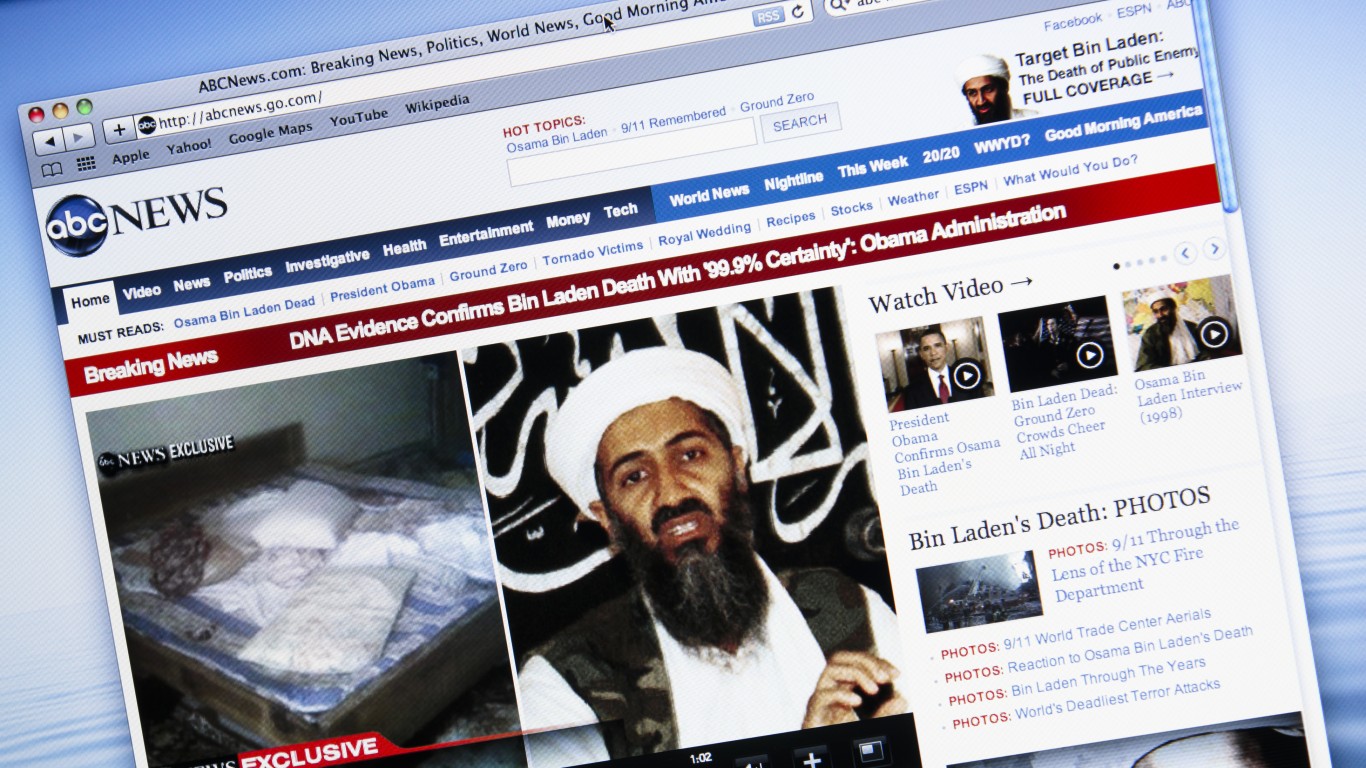
2011: Bin Laden Killed
> Date: May 2
> Location: Abbottabad, Pakistan
In an intense 40-minute nighttime firefight, 25 U.S. Navy SEALs hunt down and kill al Qaeda leader Osama bin Laden, mastermind of the 9/11 terrorist attacks, in a compound in Abbottabad, Pakistan. Within hours, bin Laden’s body is identified using DNA and then buried at sea.

2012: The “God Particle” Is (Probably) Discovered
> Date: July 4
> Location: Near Geneva
Nearly 600 feet below the France-Switzerland border at CERN’s Large Hadron Collider Facility, an international team of scientists discovers a new particle widely believed to be the elusive Higgs boson, known as the “God Particle,” which is thought to be a fundamental component of the universe. Higgs boson has been an important element of particle physics theory for decades, but until 2012 there had been no physical evidence to support its existence.

2013: Snowden Reveals Secrets
> Date: June 6
> Location: Hong Kong
After surreptitiously leaving his job at U.S. National Security Agency contractor Booz Allen Hamilton, computer security consultant Edward Snowden meets secretly in Hong Kong with journalists Glenn Greenwald and Laura Poitras. He reveals the first of a series of secrets about numerous U.S. and European government surveillance operations. Hailed as a courageous whistleblower and privacy champion by some, and a traitor that compromised counterterrorism efforts by others, the American now resides in exile in Moscow.
[in-text-ad-2]
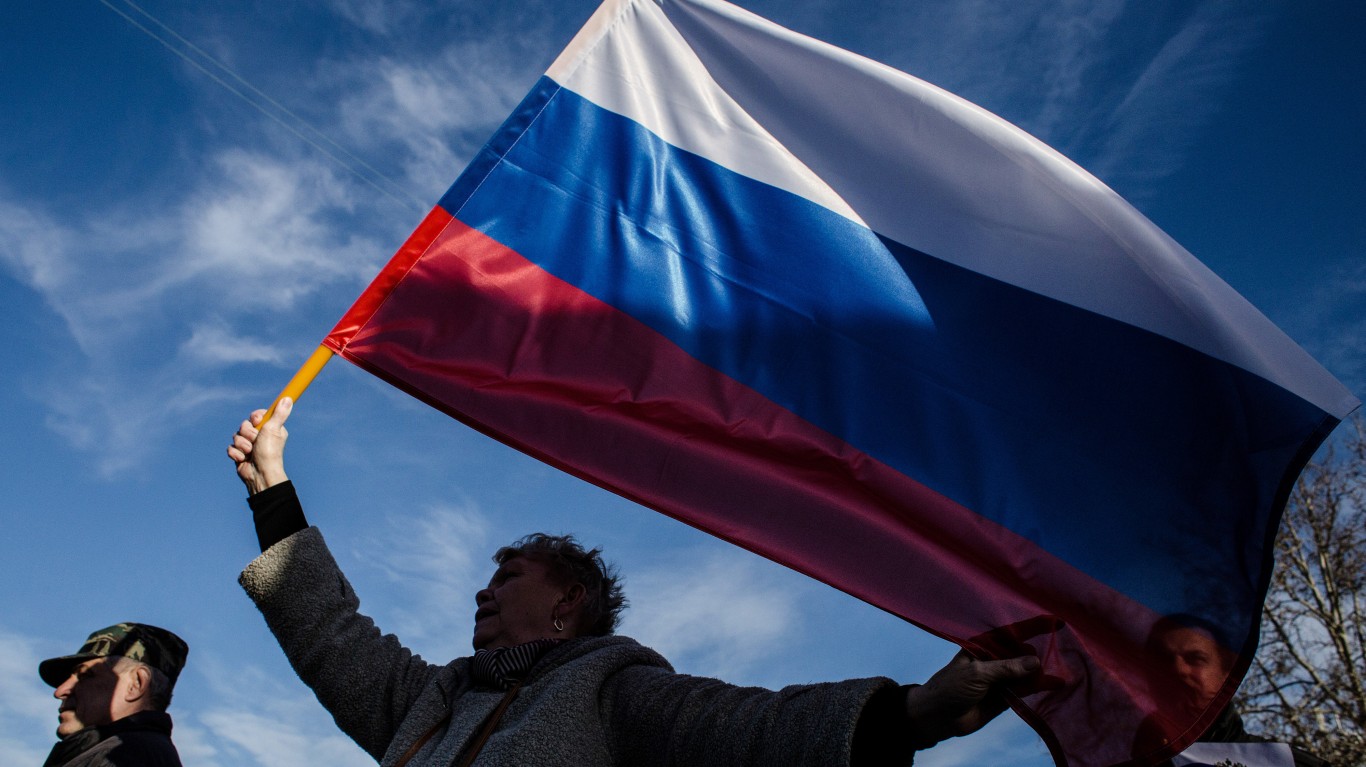
2014: Russian Bear Bites Ukraine
> Date: March 16
> Location: Crimea
Exploiting political unrest in Ukraine, Russian President Vladimir Putin orchestrates the annexation of the Crimean Peninsula. The action incites peals of condemnation from world leaders and a raft of economic sanctions against Moscow. This strategically important and predominantly Russian-speaking region on the Black Sea has been coveted by the Russians as part of their strategic efforts to check NATO expansion along Russia’s western border.

2015: NASA Flies by Pluto
> Date: July 14
> Location: 3 billion miles from Earth
NASA spacecraft New Horizons becomes the first human-made object to fly past and observe the dwarf planet Pluto. New Horizons sends back stunning photographs of this enigmatic and distant member of the solar system, including images of a mountain range and massive icebergs floating in frozen nitrogen. New Horizons is now en route to the Kuiper Belt, a massive asteroid belt at the far reaches of the solar system.

2016: Trump Elected
> Date: Nov. 8
> Location: U.S.
Running on a populist agenda, Donald Trump is elected the 45th president of the United States and the fifth president in U.S. history (the second since the 2000) to win despite losing the popular vote. The real estate developer and television personality ran on a platform of putting “America First” in global trade and foreign policy negotiations and cracking down on undocumented immigrants.
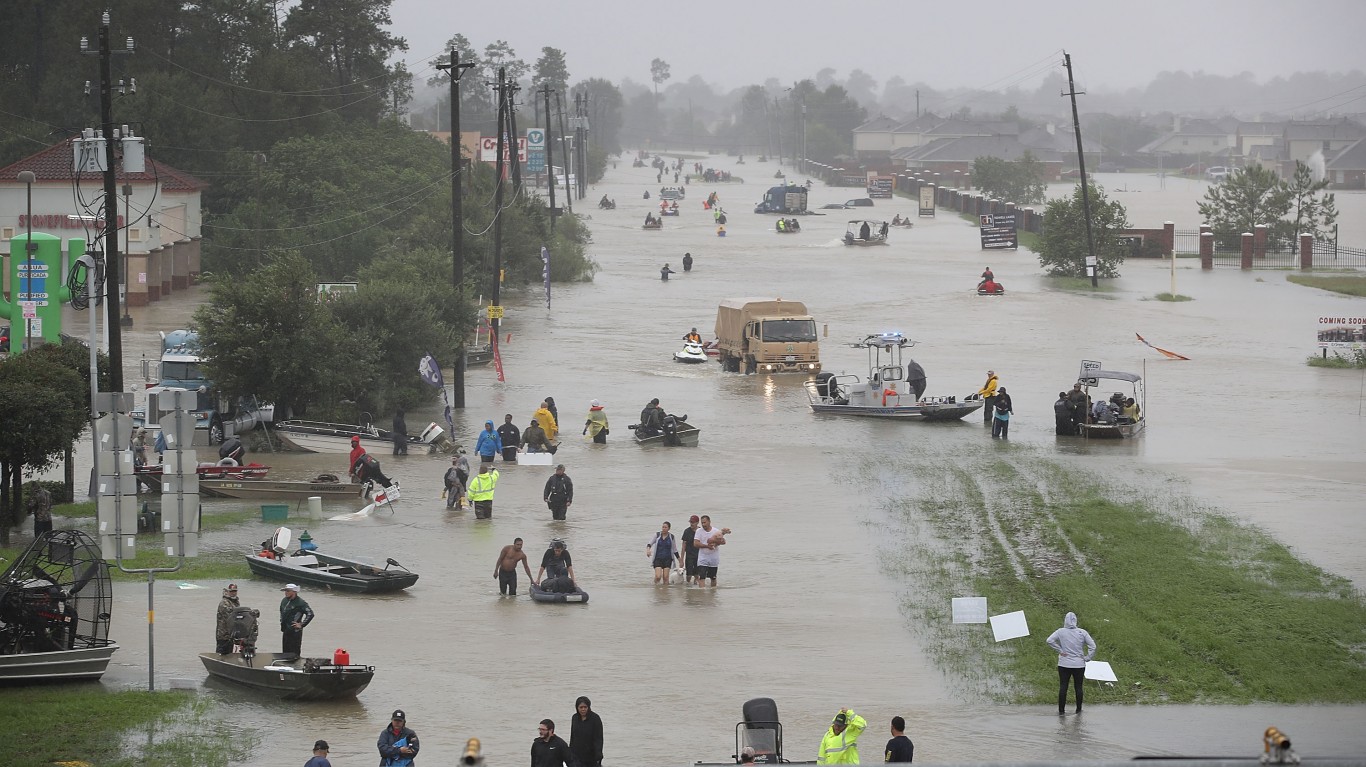
2017: Hurricane Triple Whammy
> Date: August-September
> Location: Multiple
Within just four weeks, three massive hurricanes — Harvey, Irma, and Maria — strike Texas, Florida, and the Caribbean, killing 228 people, inflicting a combined $265 billion in damages, and displacing millions of homeowners. Hurricane Maria inflicts immense damage to the U.S. commonwealth of Puerto Rico, which was already struggling from economic insolvency.
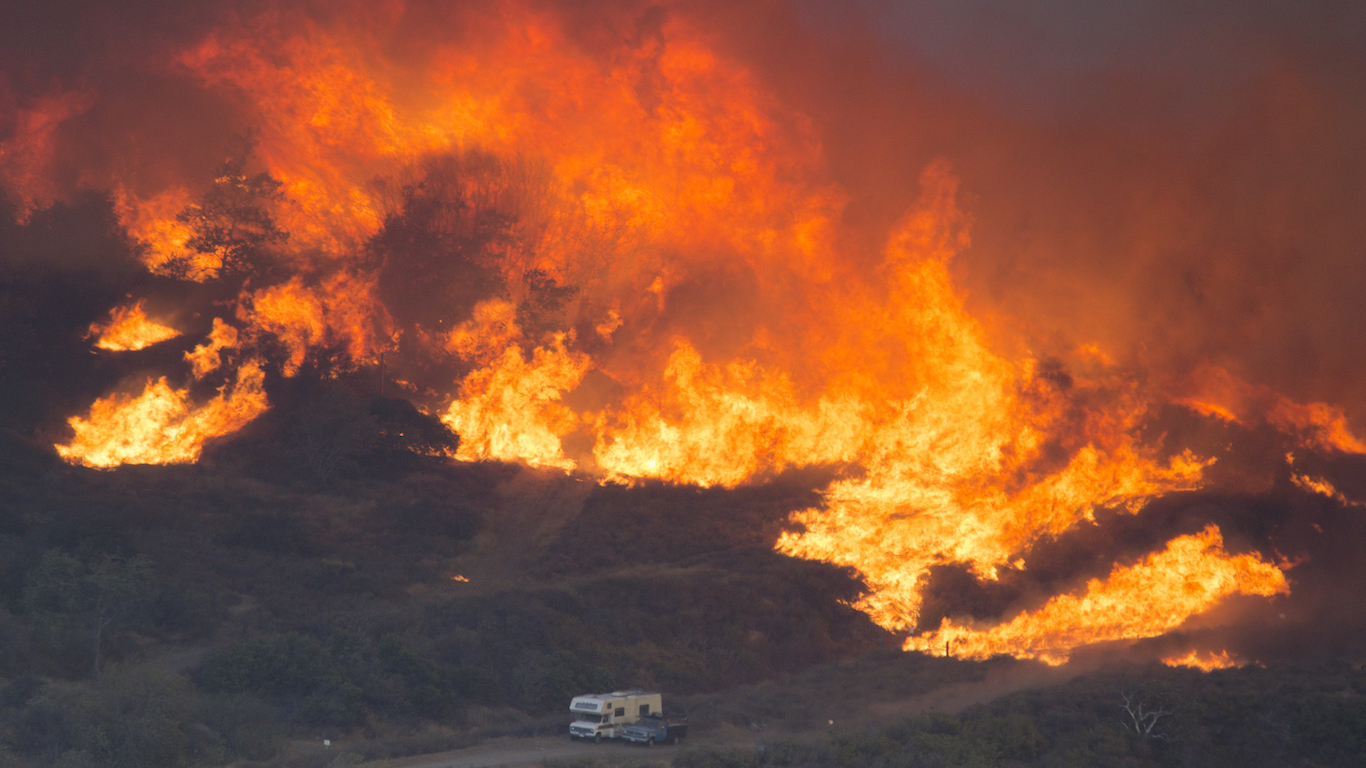
2018: Wildfires
> Date: November
> Location: Northern California
Wildfires engulfed northern California in November, the deadliest in that state’s history. The catastrophe cost the lives of 88 people and fire consumed 18,500 homes and businesses. State and federal officials estimated that it would cost $3 billion to clean up debris. Climate change activists said the conflagrations were evidence that global warming is no longer a distant concern and that it is occurring now.
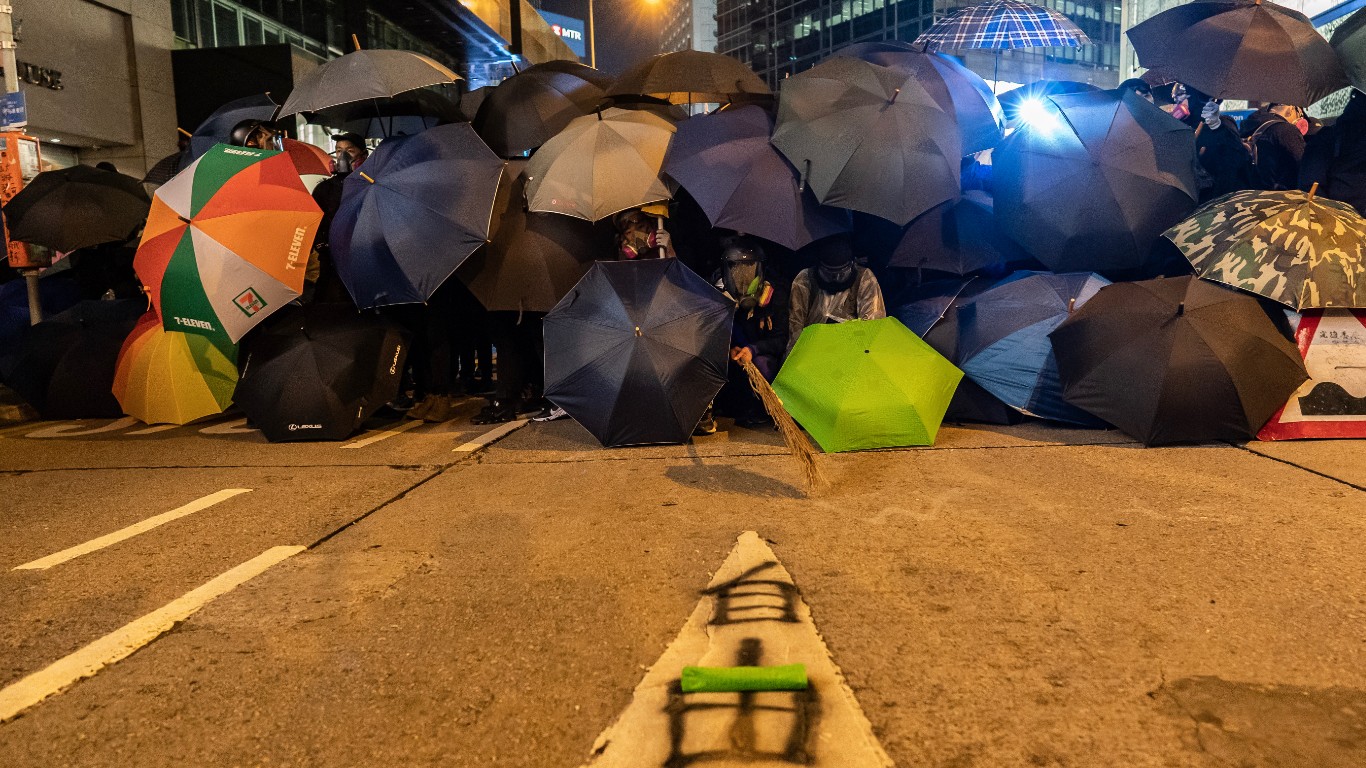
2019: Hong Kong Protests
> Date: Beginning in March
> Location: Hong Kong
Residents of the small economic powerhouse of Hong Kong, which was given special administrative region status as a condition to its handover to China from Great Britain, protested a proposed extradition bill in March. That led to other mass demonstrations in Hong Kong throughout the year over concerns China was trying to erode Hong Kong’s autonomy.
People power manifested itself in protests in other nations as well in 2019, with demonstrations leading to the ouster of presidents in Algeria and Sudan.

2020: COVID-19
> Date:March
> Location:Worldwide
A novel coronavirus, SARS-CoV-2, that causes the disease COVID-19 was first detected in Wuhan, China, in late 2019. The virus spread to Europe and the United States in early 2020 and was declared a pandemic by the World Health Organization on March 11. The outbreak reached virtually every nation on Earth, leading to countrywide lockdowns, massive layoffs, business closures, and school shutdowns. As of Aug. 26, the pandemic claimed more than 820,000 lives worldwide, including about 179,000 people in the U.S. COVID-19 has become the worst pandemic since the Spanish flu in 1918.
Start by taking a quick retirement quiz from SmartAsset that will match you with up to 3 financial advisors that serve your area and beyond in 5 minutes, or less.
Each advisor has been vetted by SmartAsset and is held to a fiduciary standard to act in your best interests.
Here’s how it works:
1. Answer SmartAsset advisor match quiz
2. Review your pre-screened matches at your leisure. Check out the advisors’ profiles.
3. Speak with advisors at no cost to you. Have an introductory call on the phone or introduction in person and choose whom to work with in the future
Thank you for reading! Have some feedback for us?
Contact the 24/7 Wall St. editorial team.